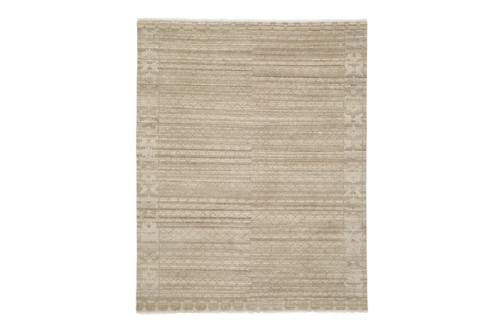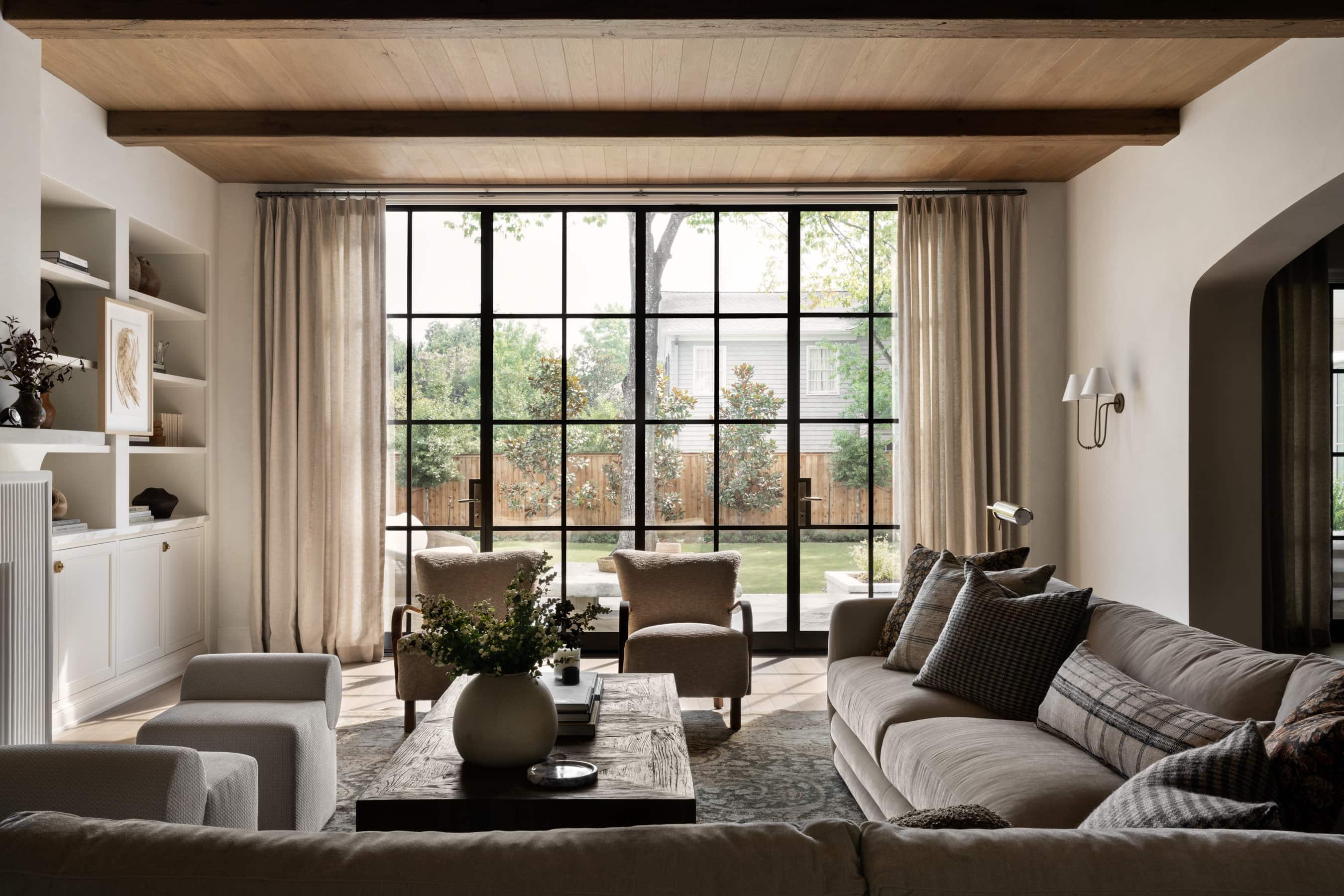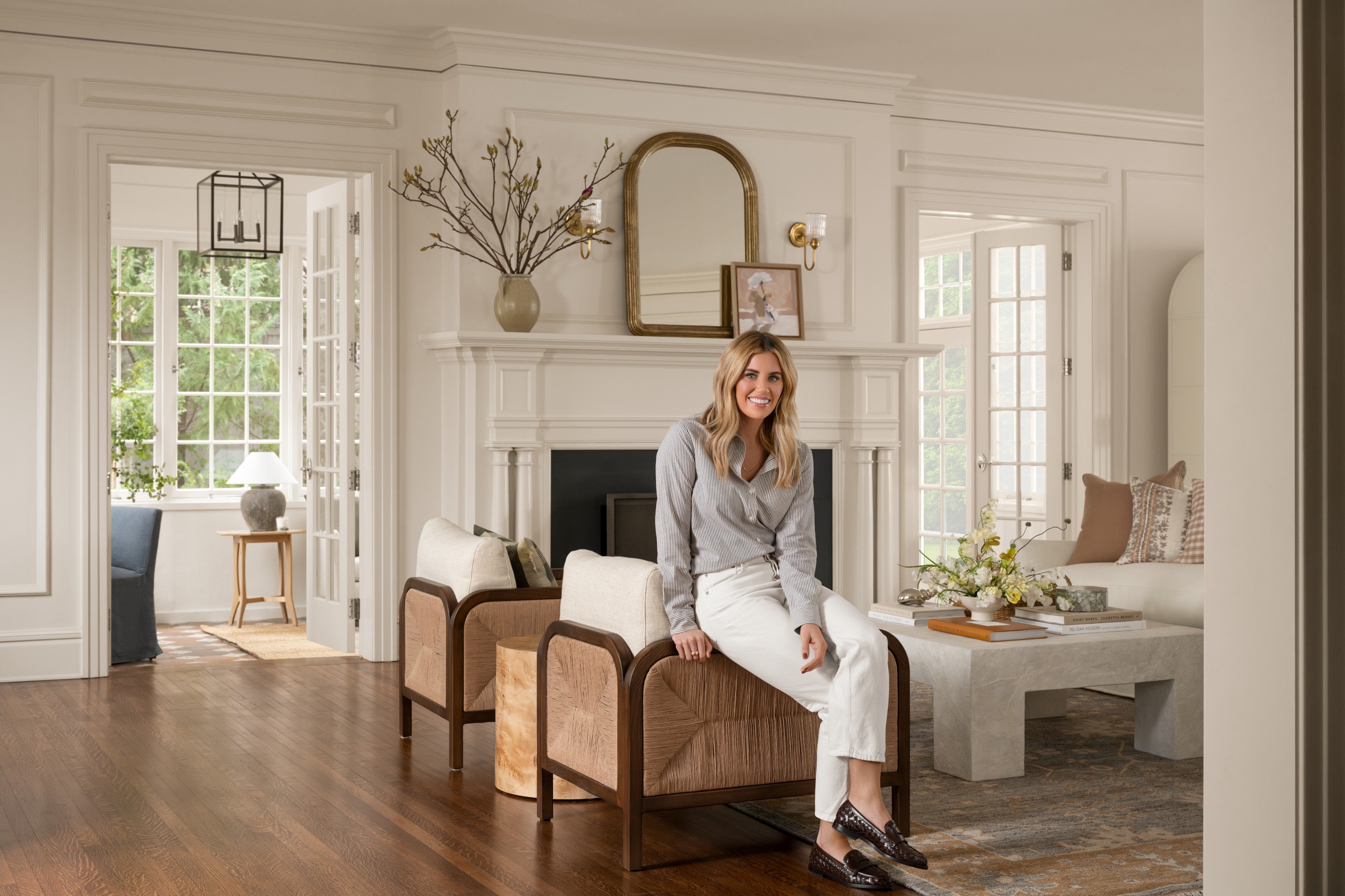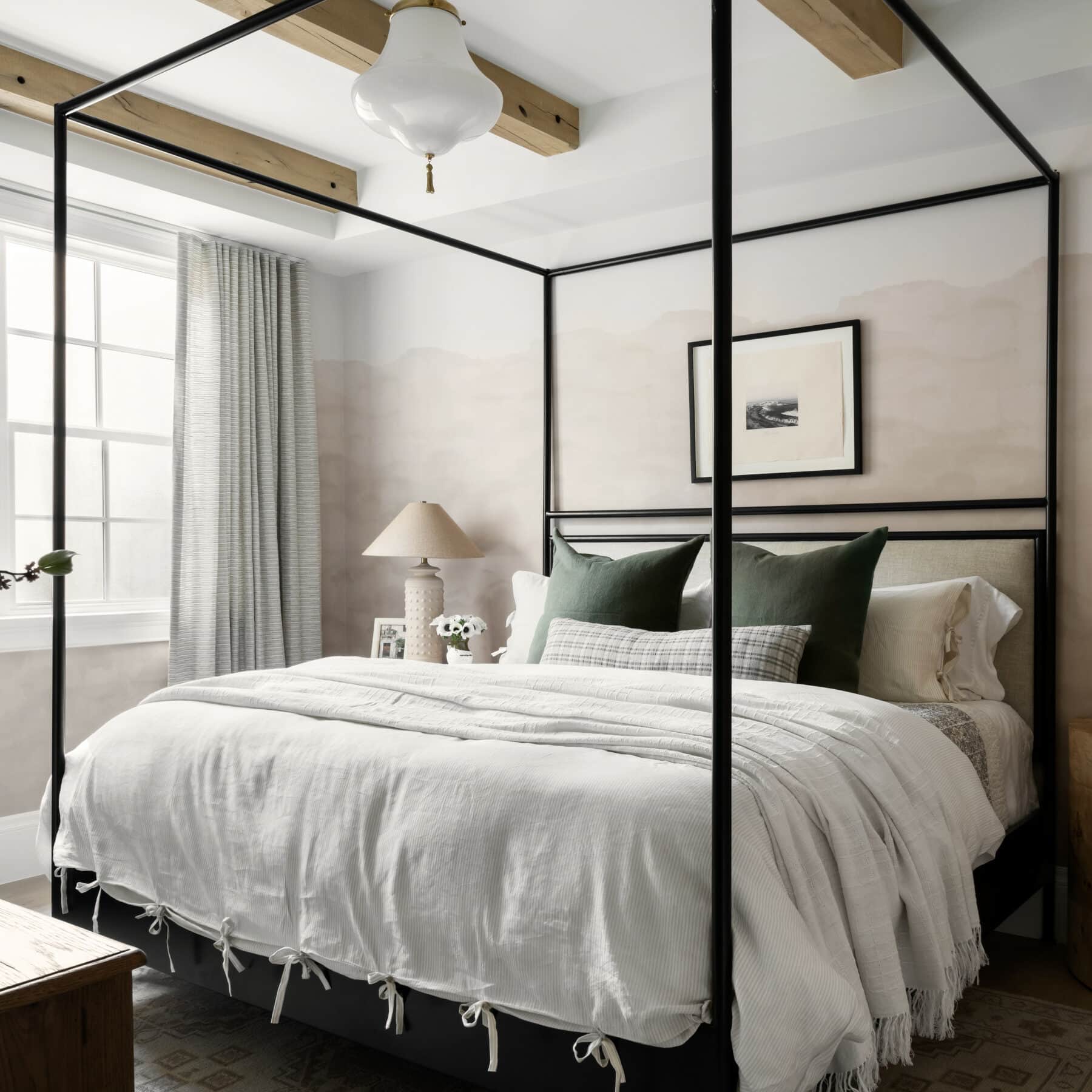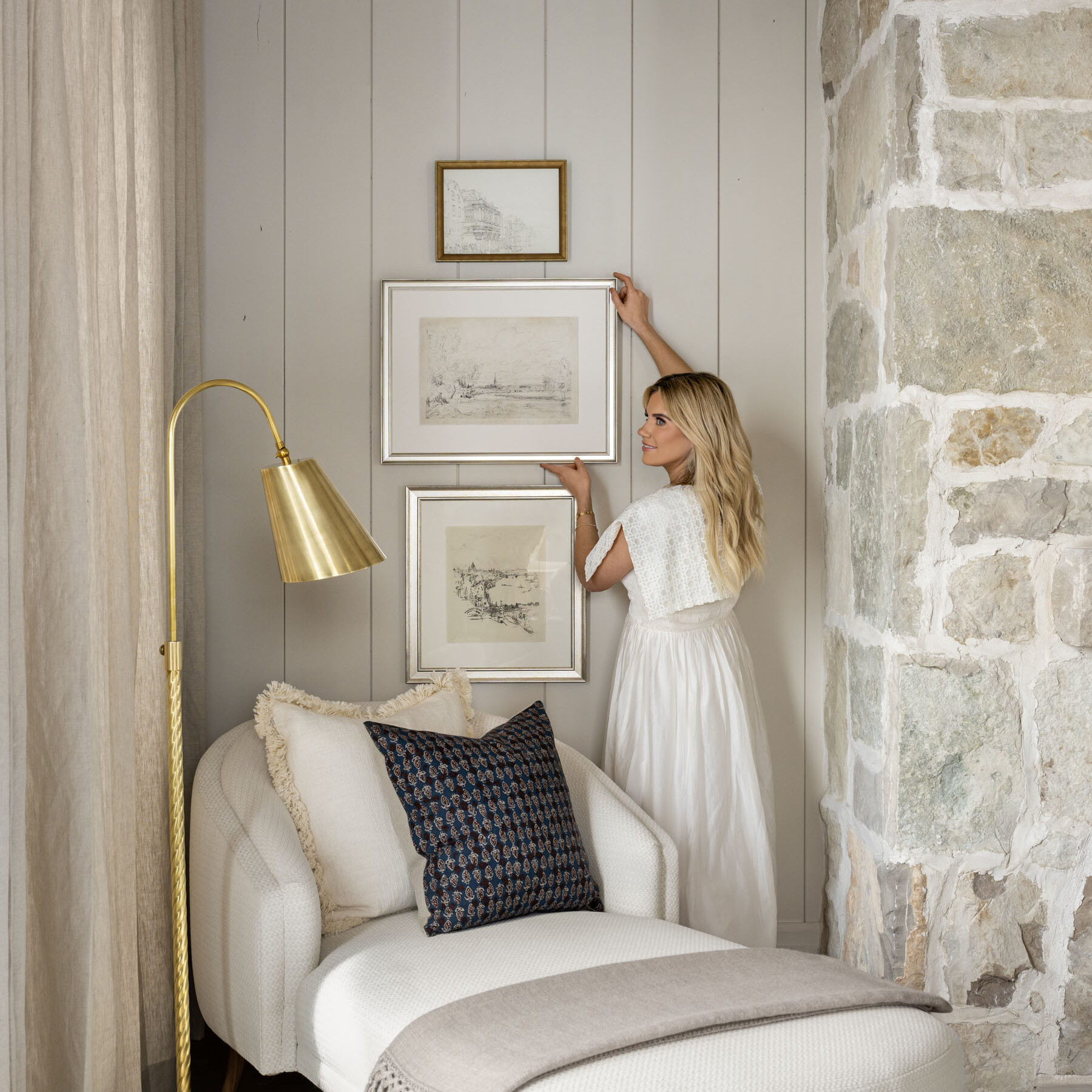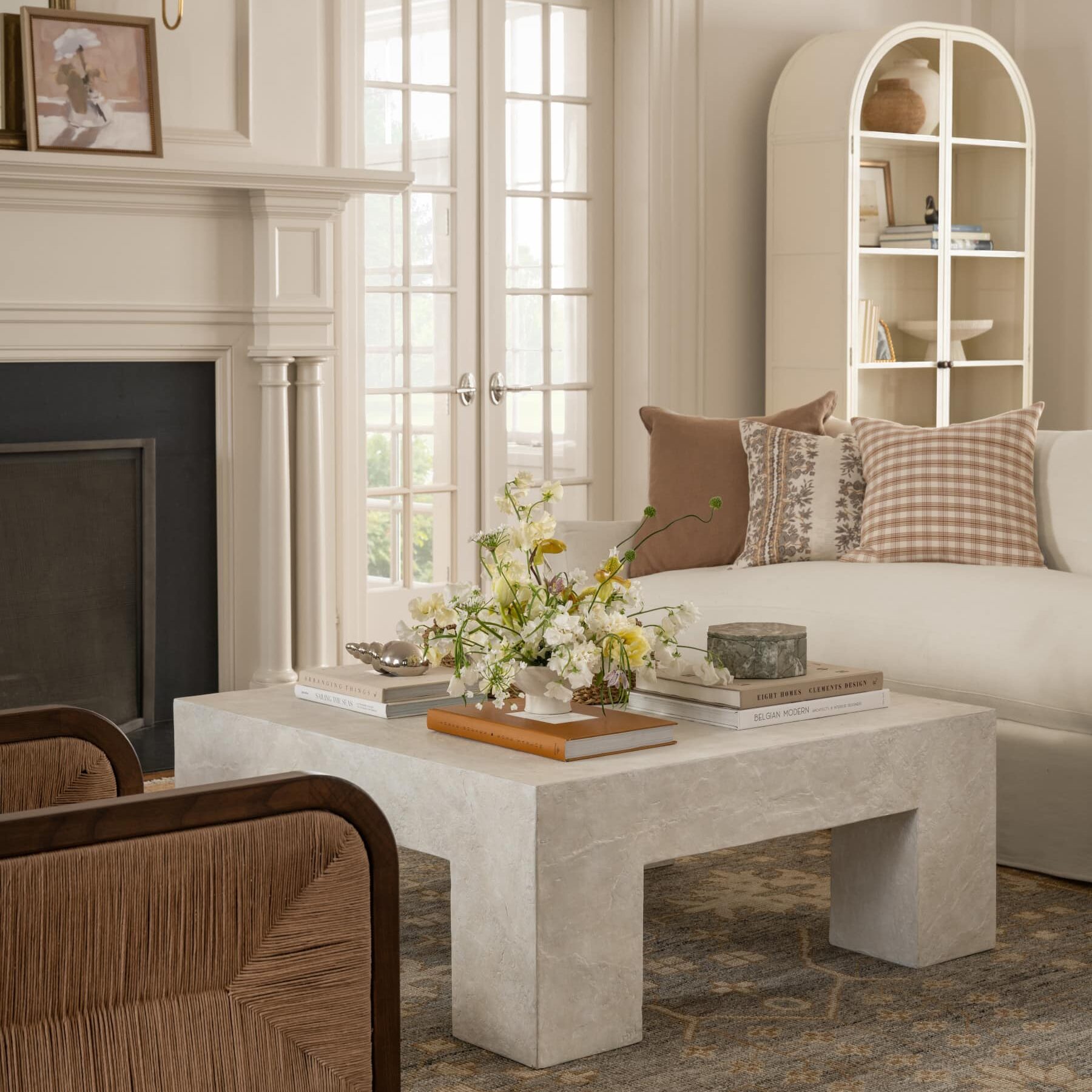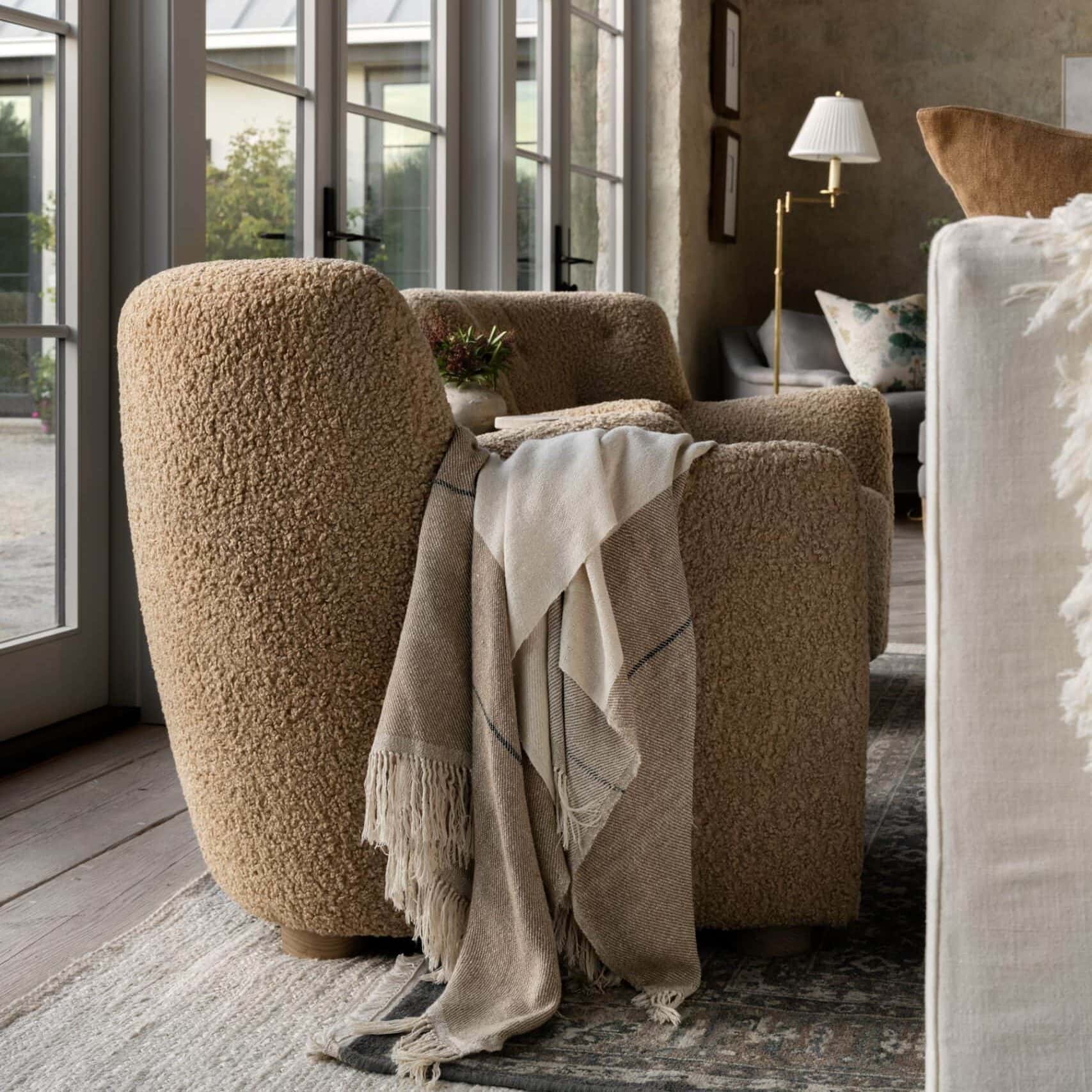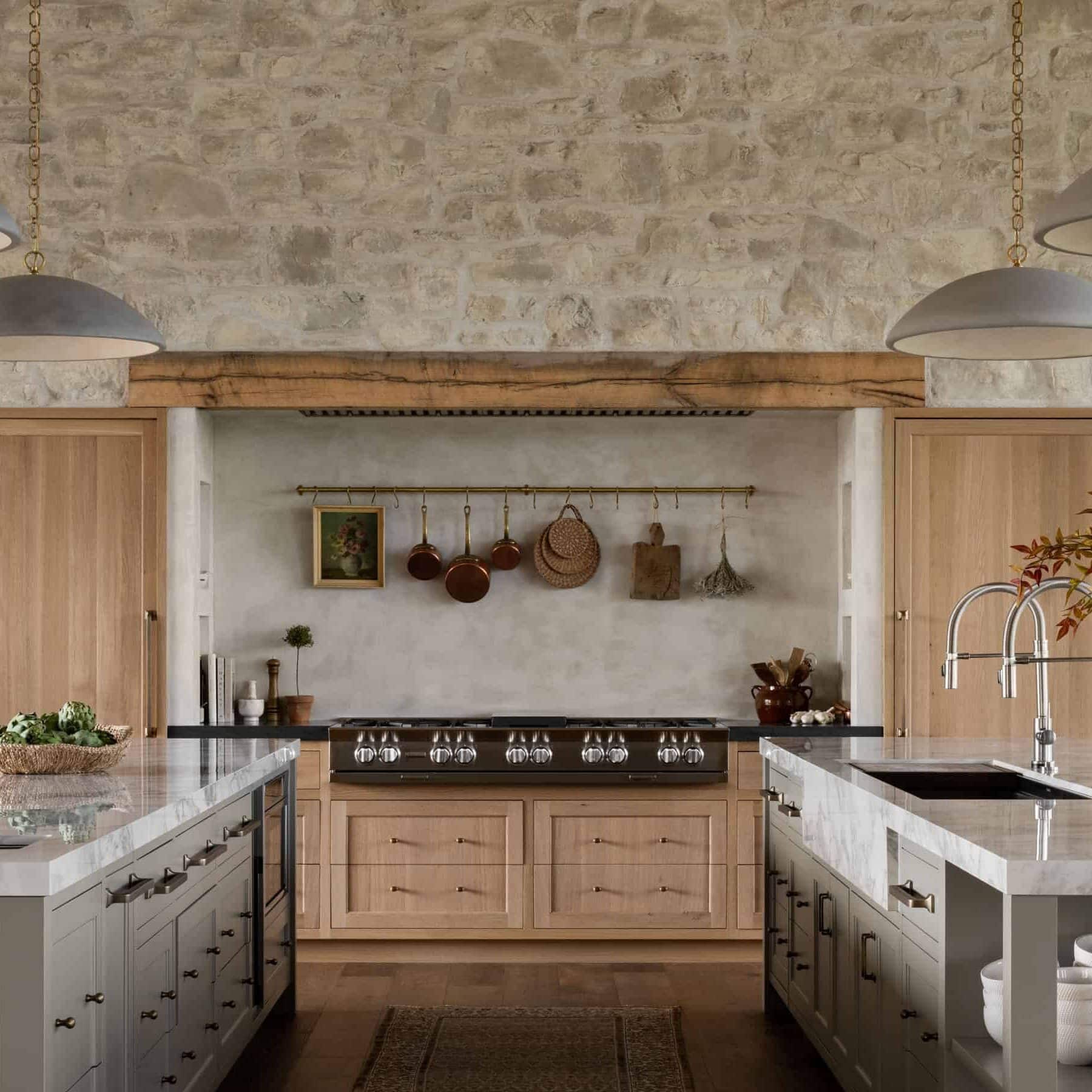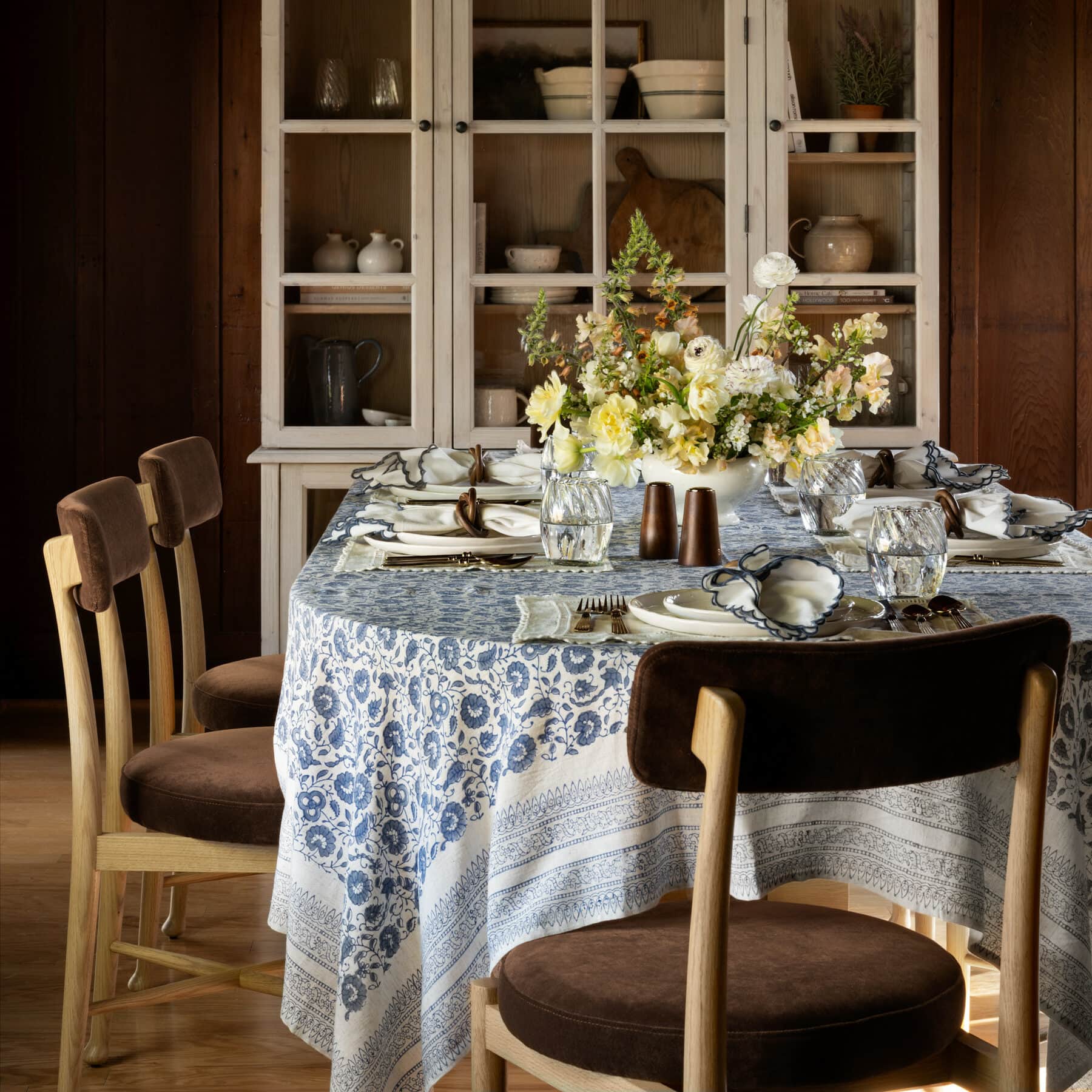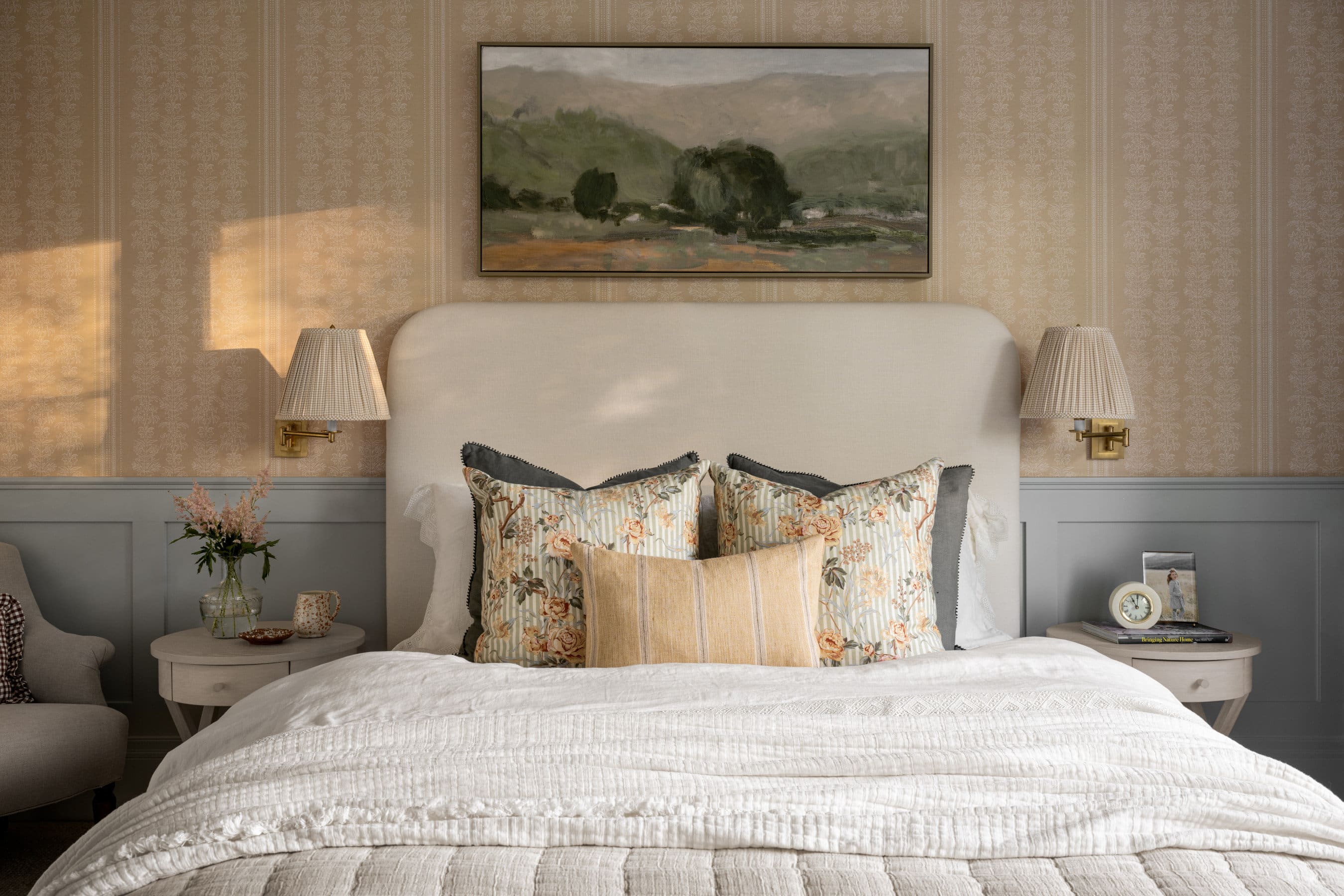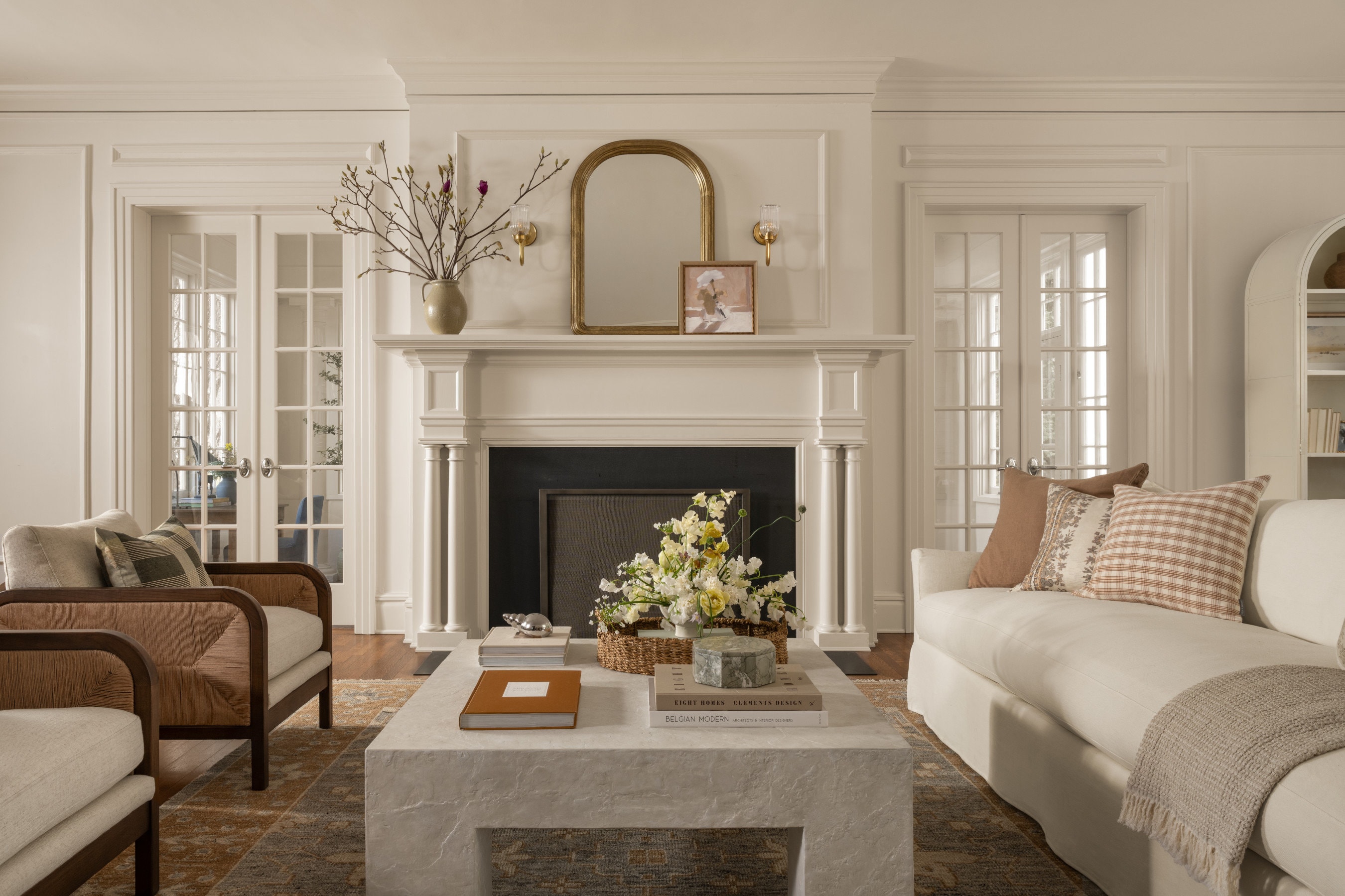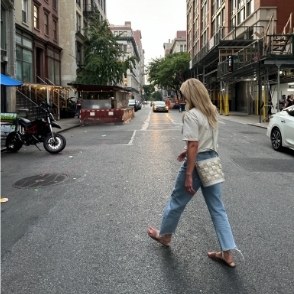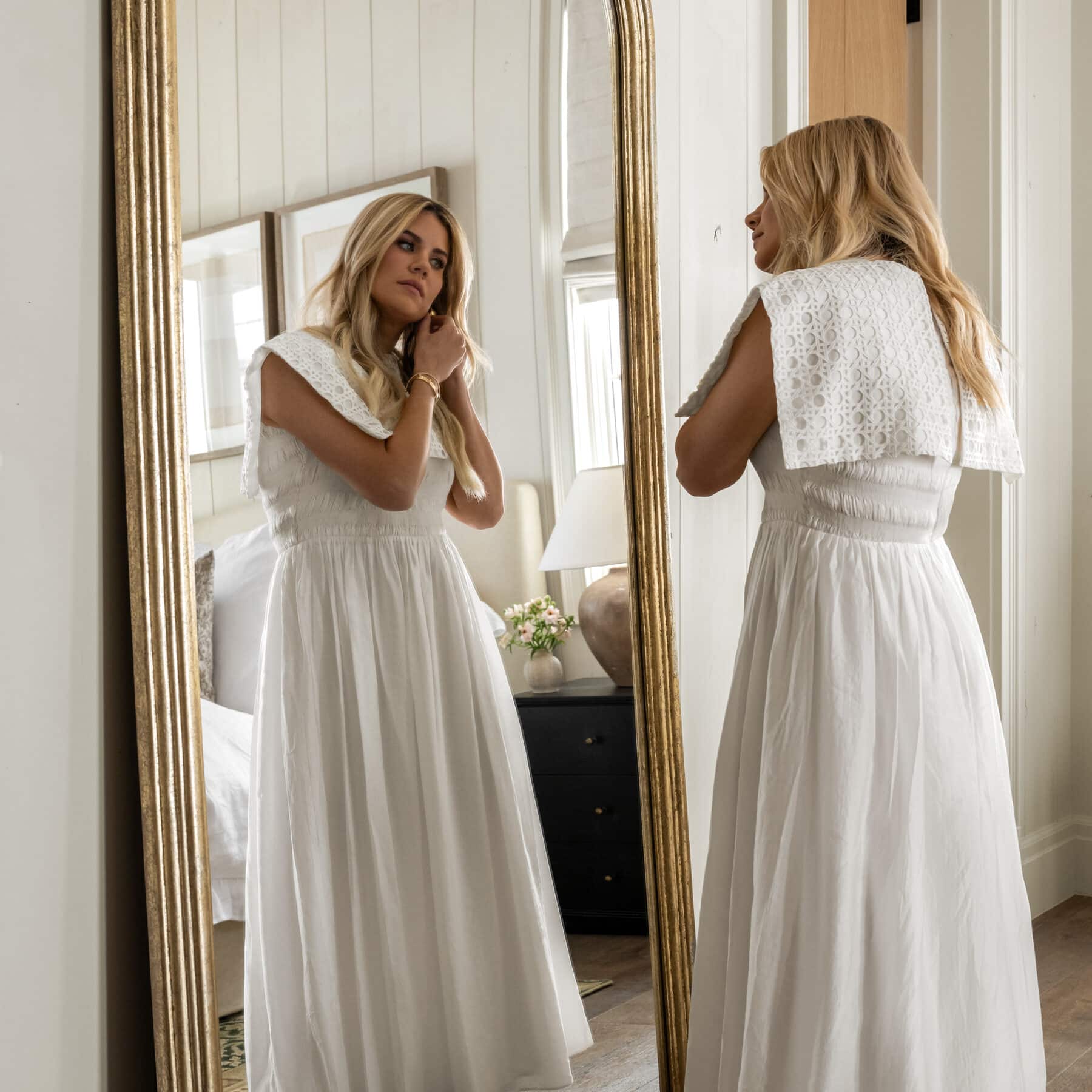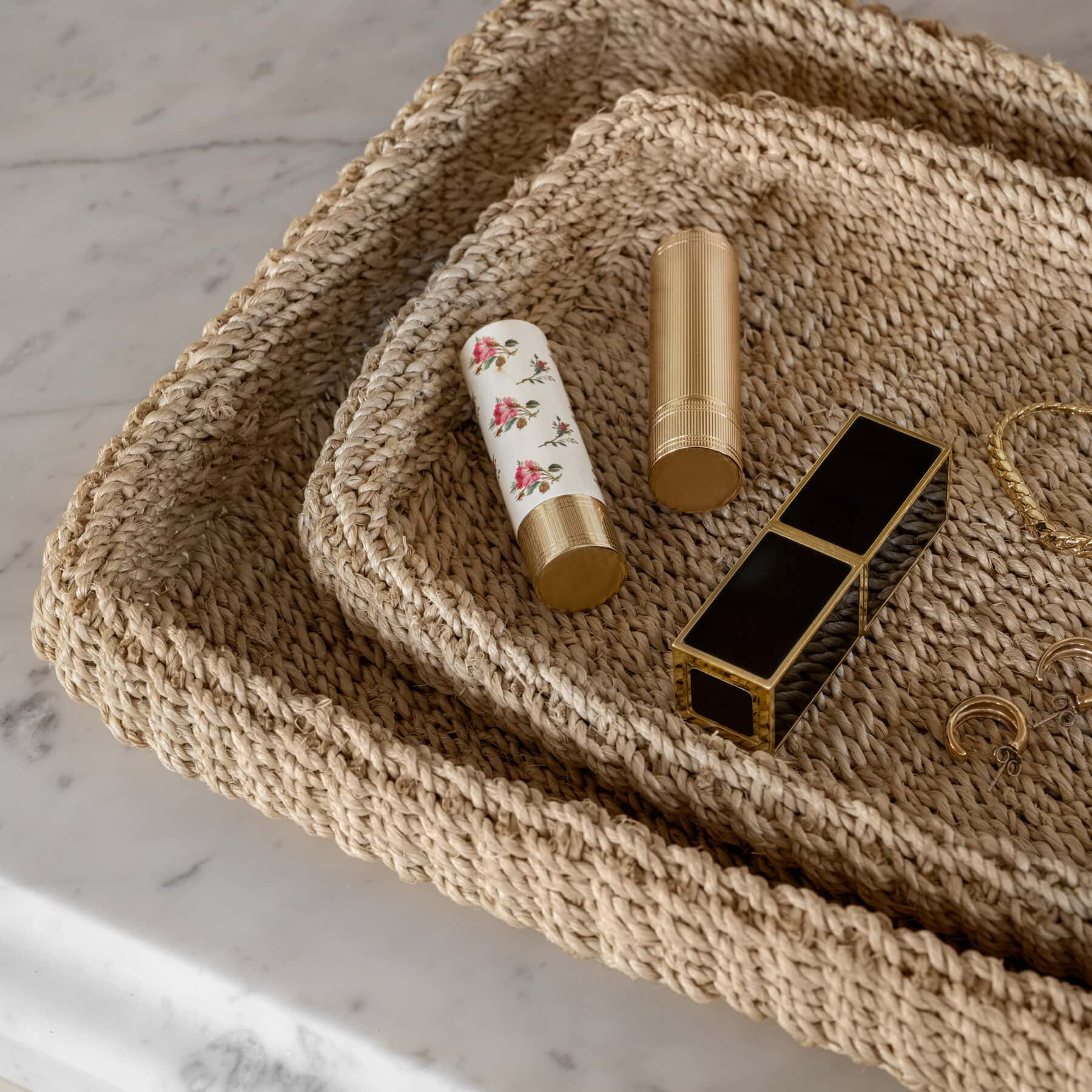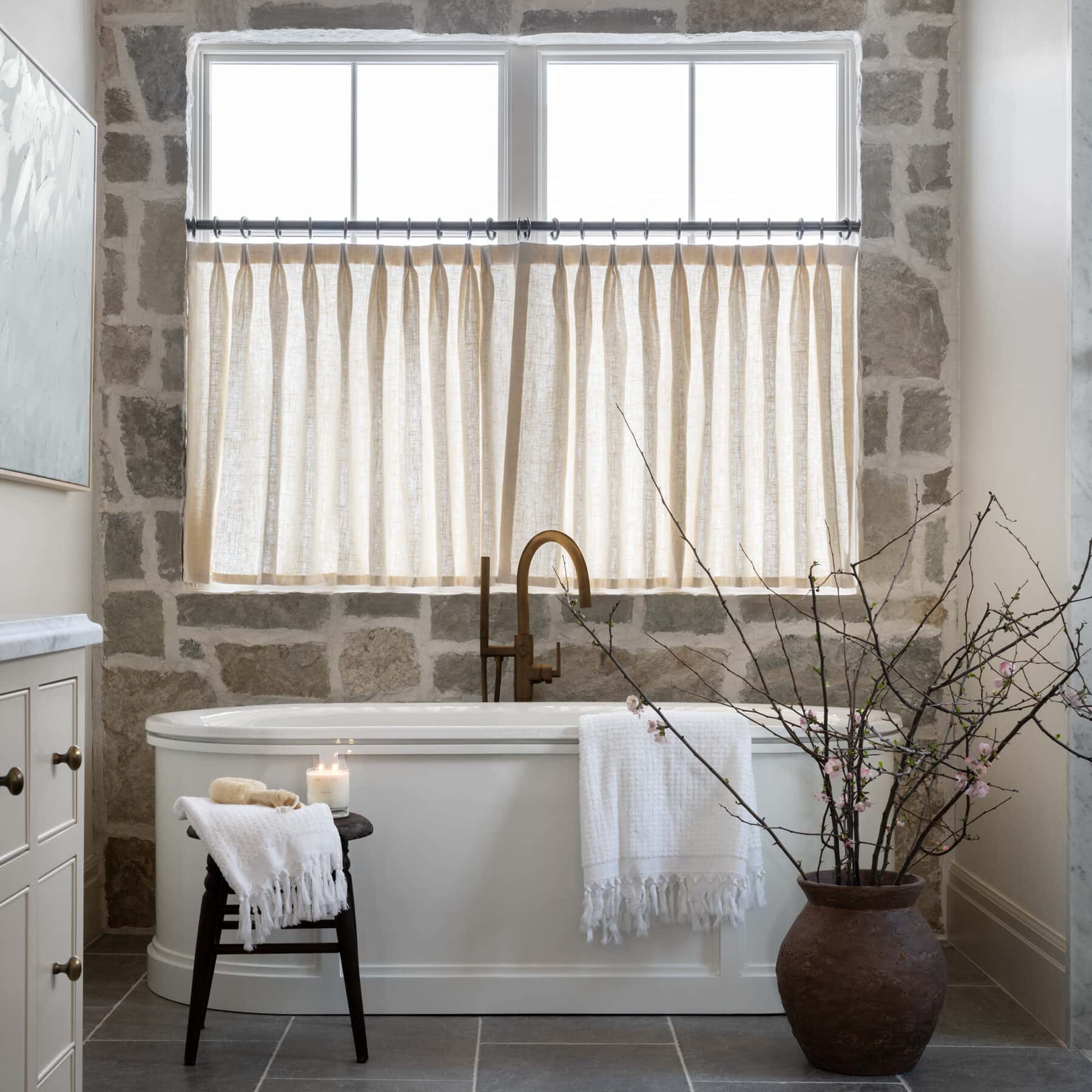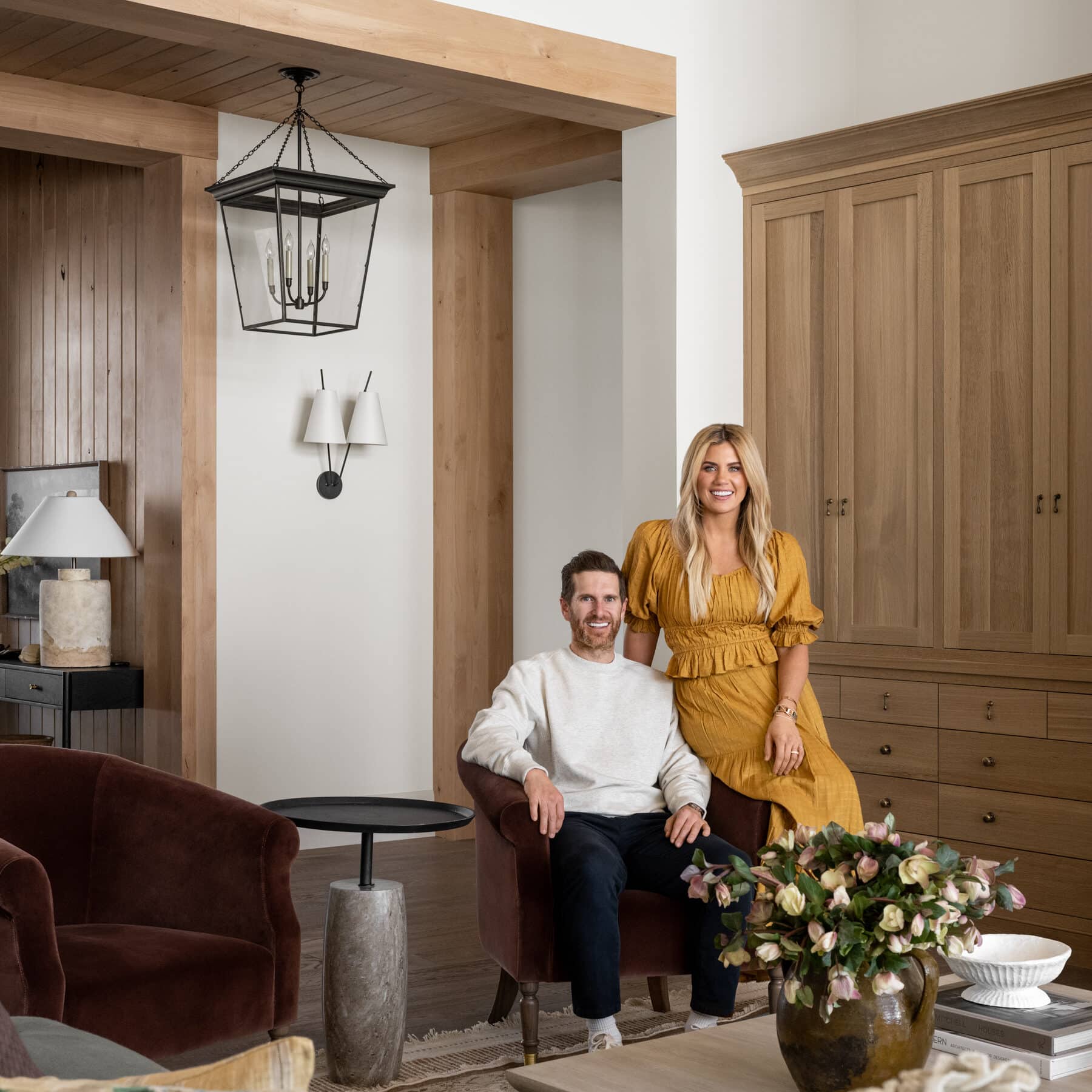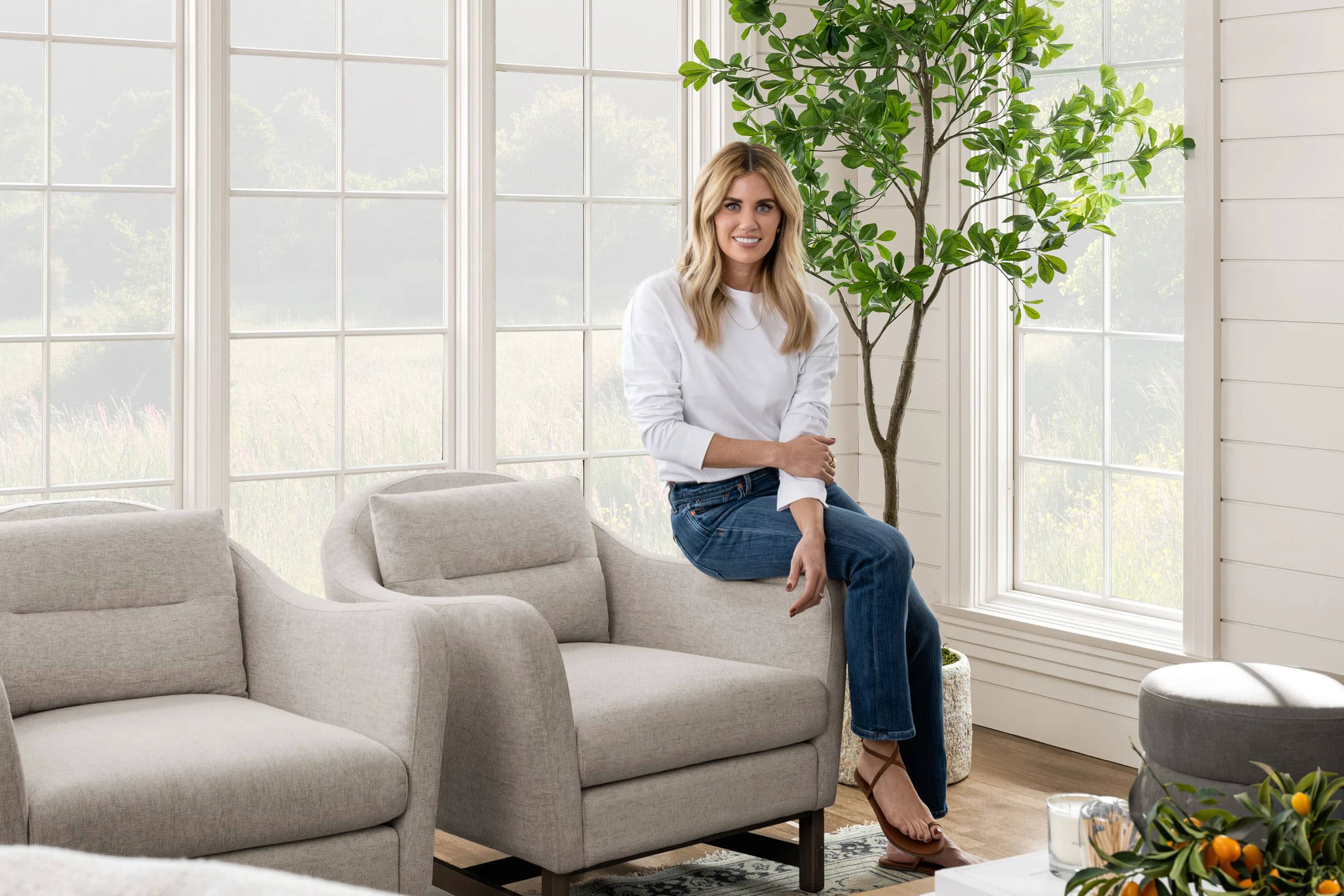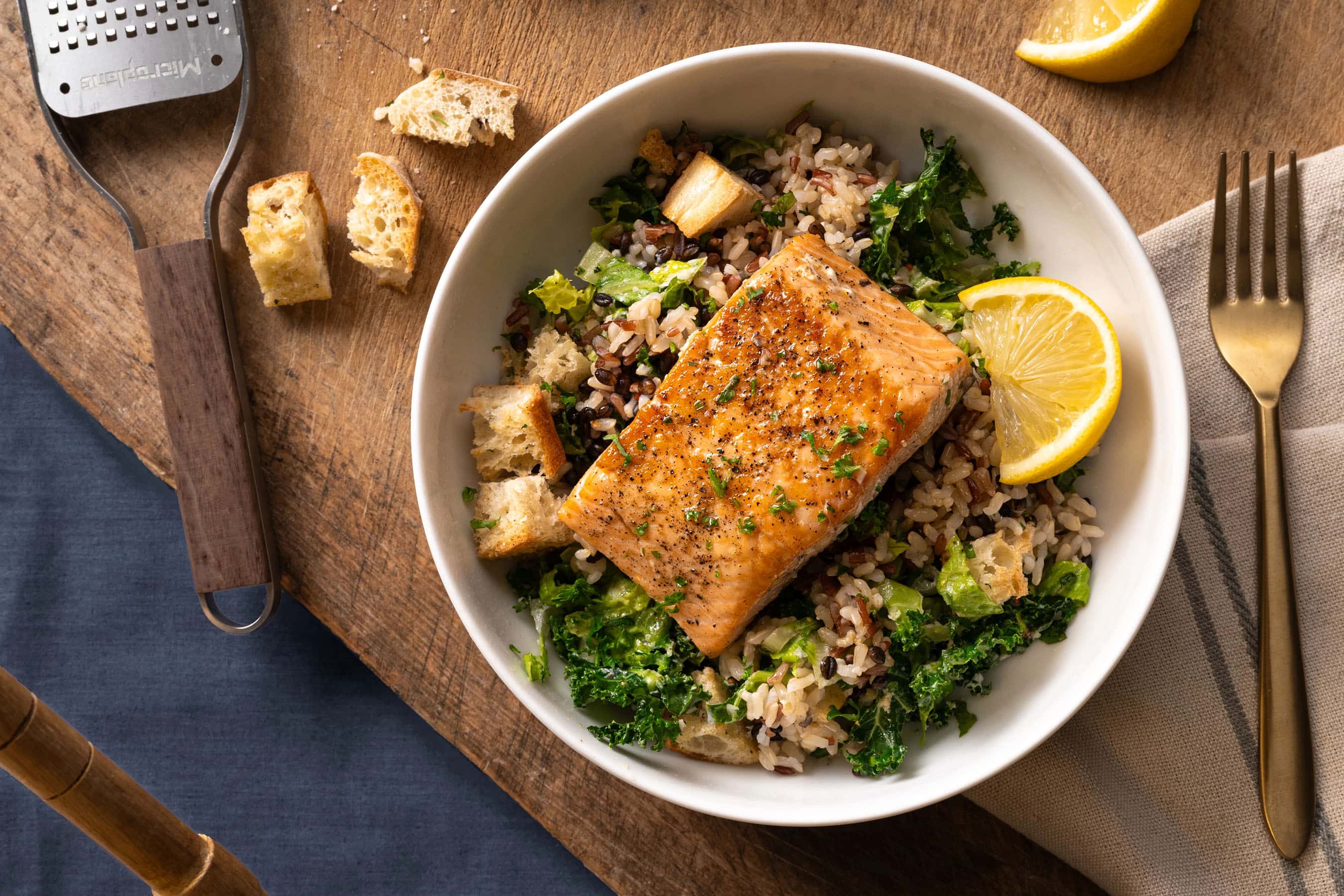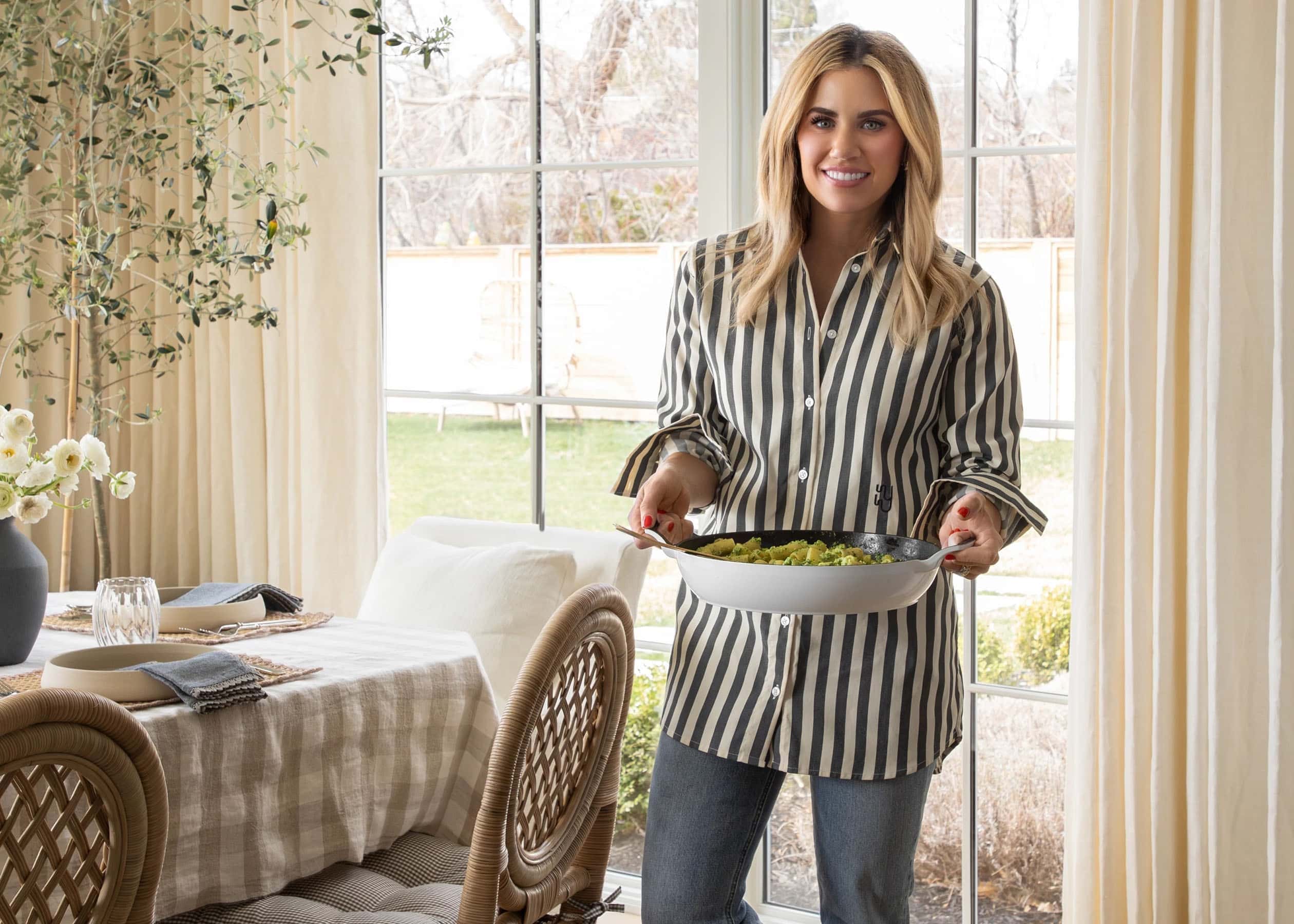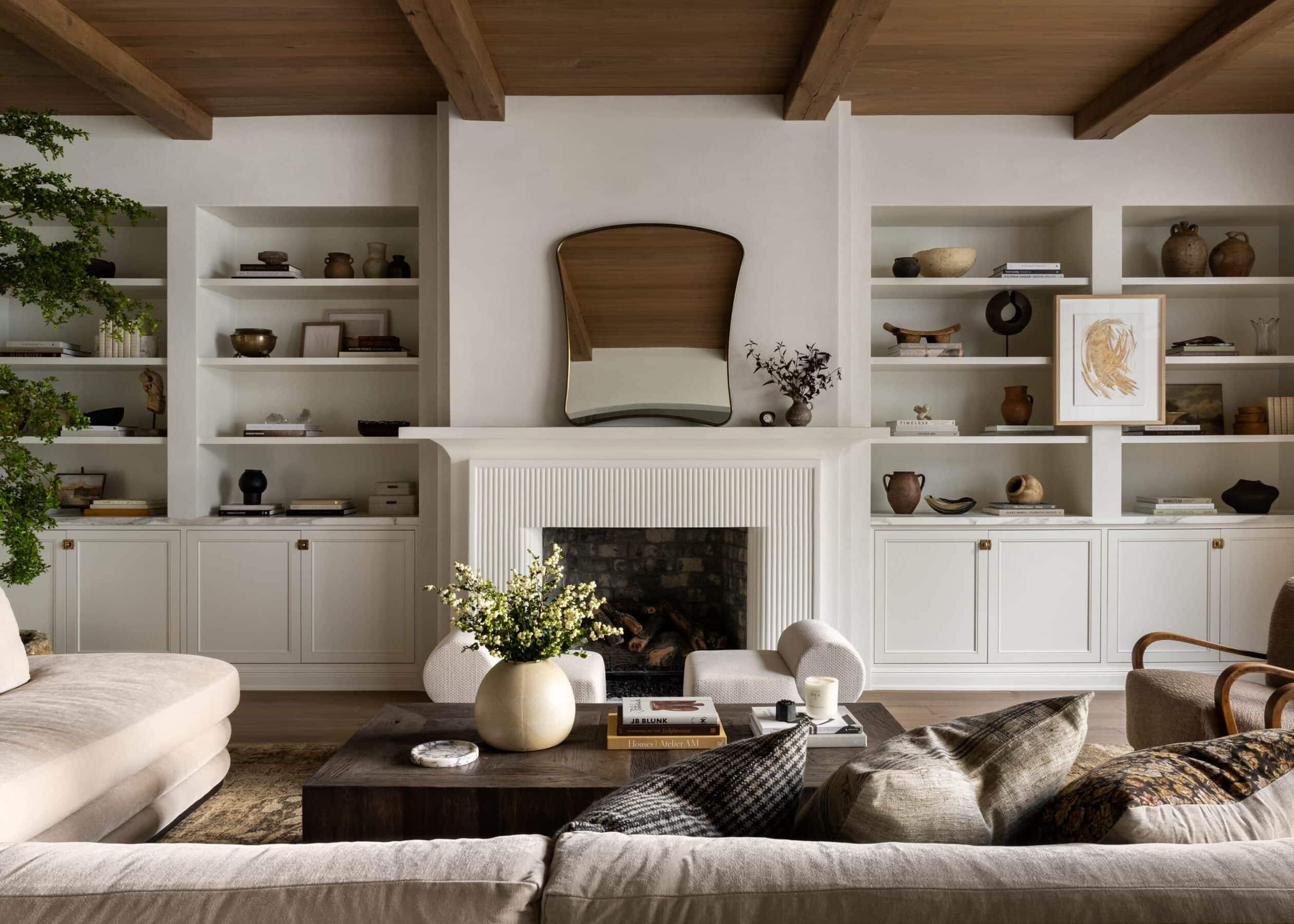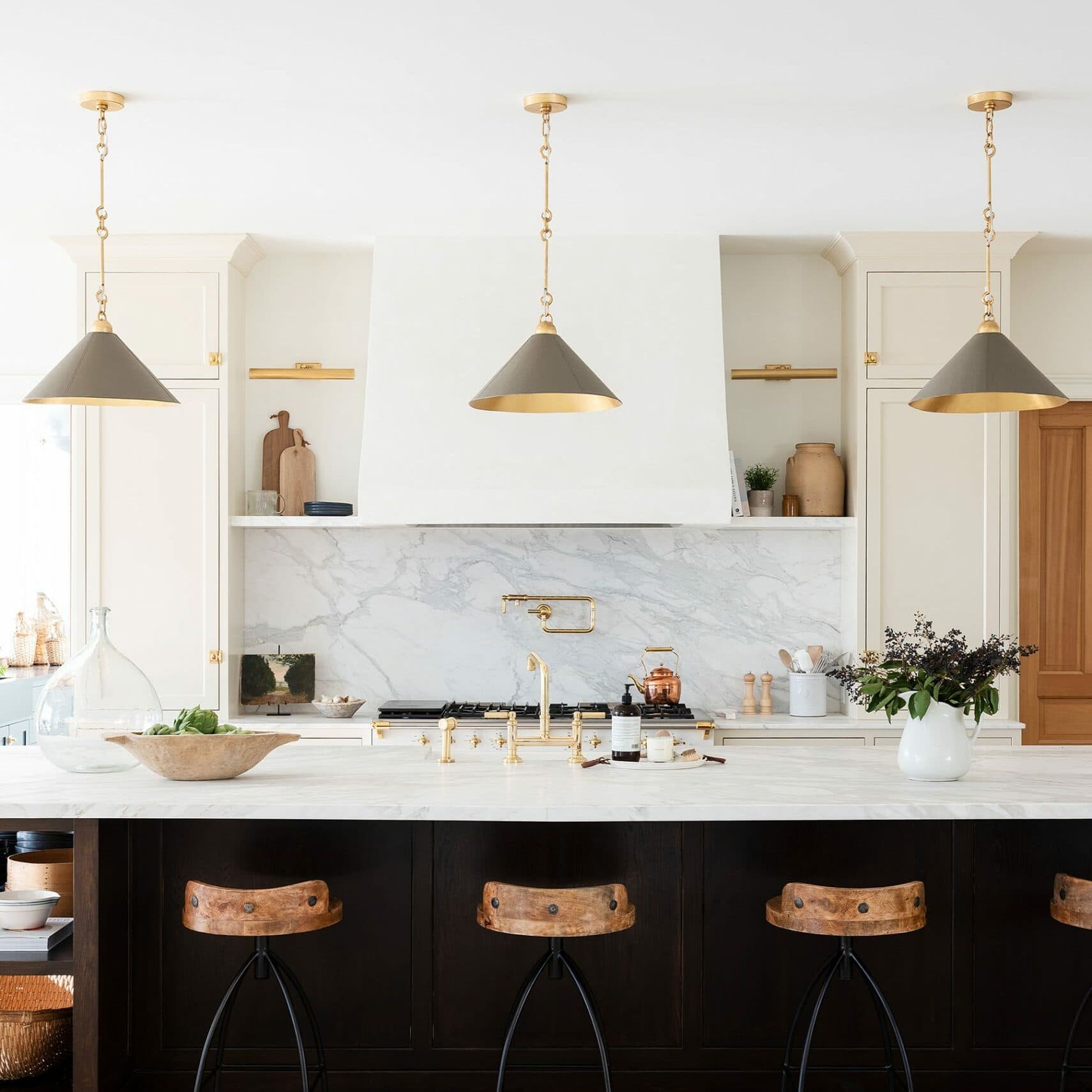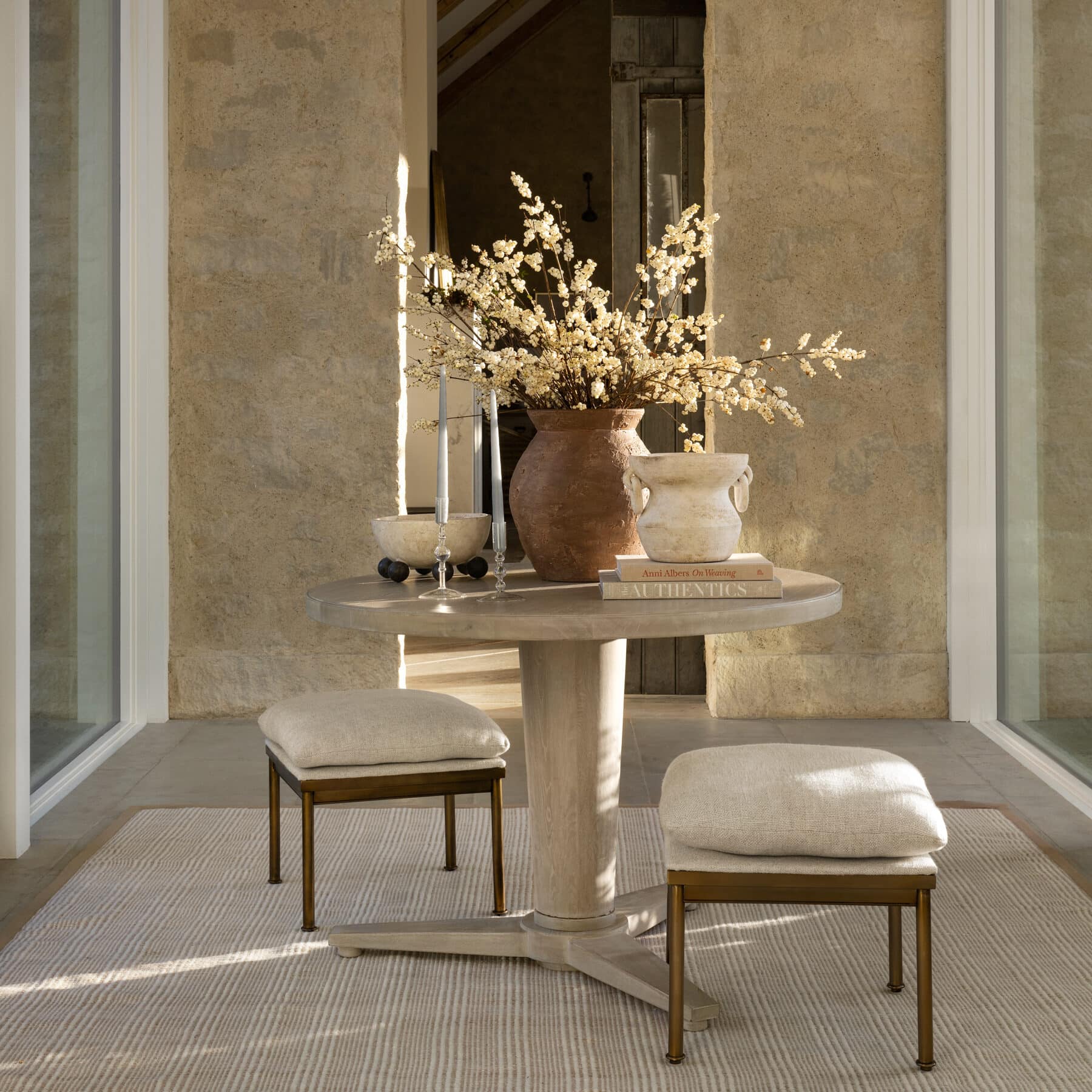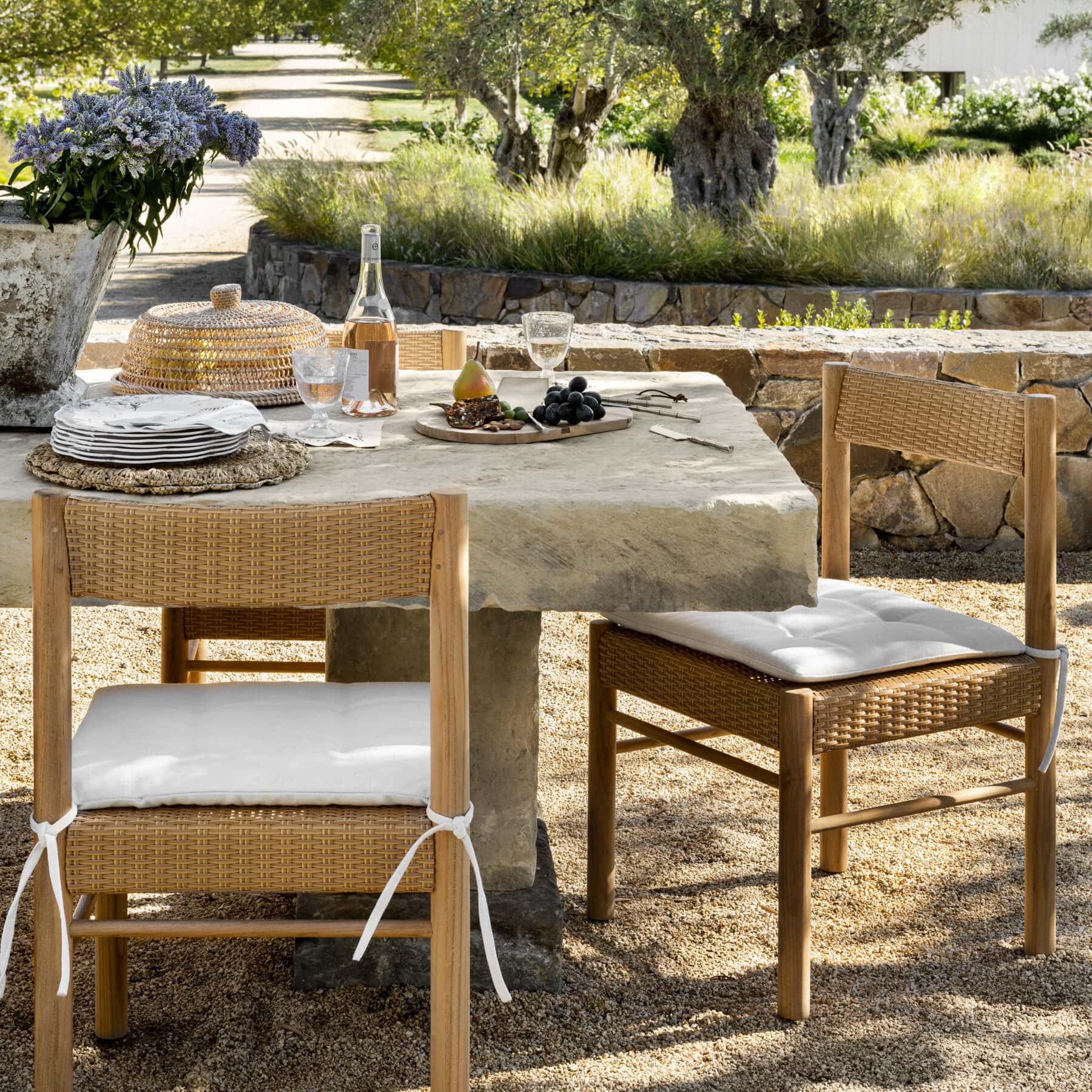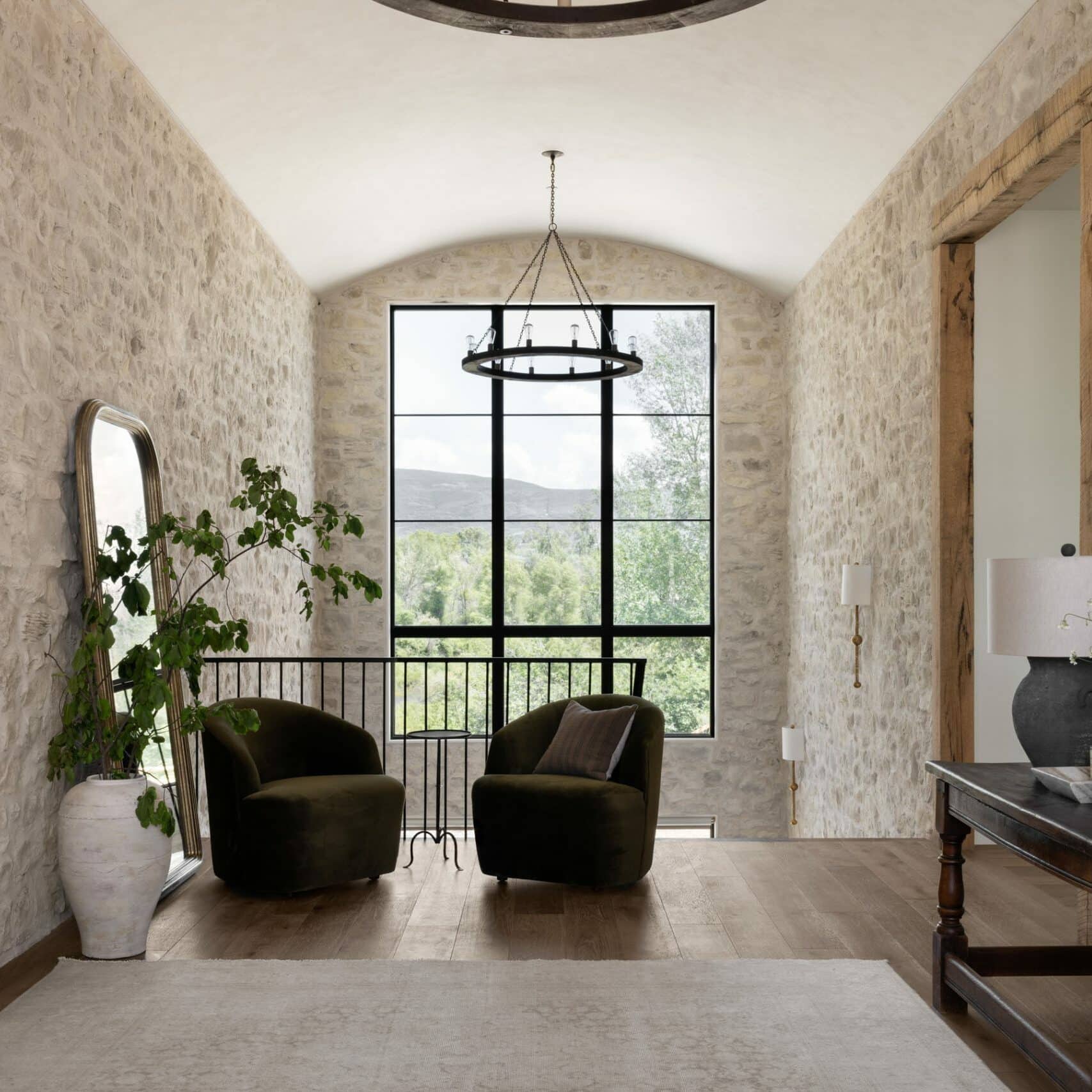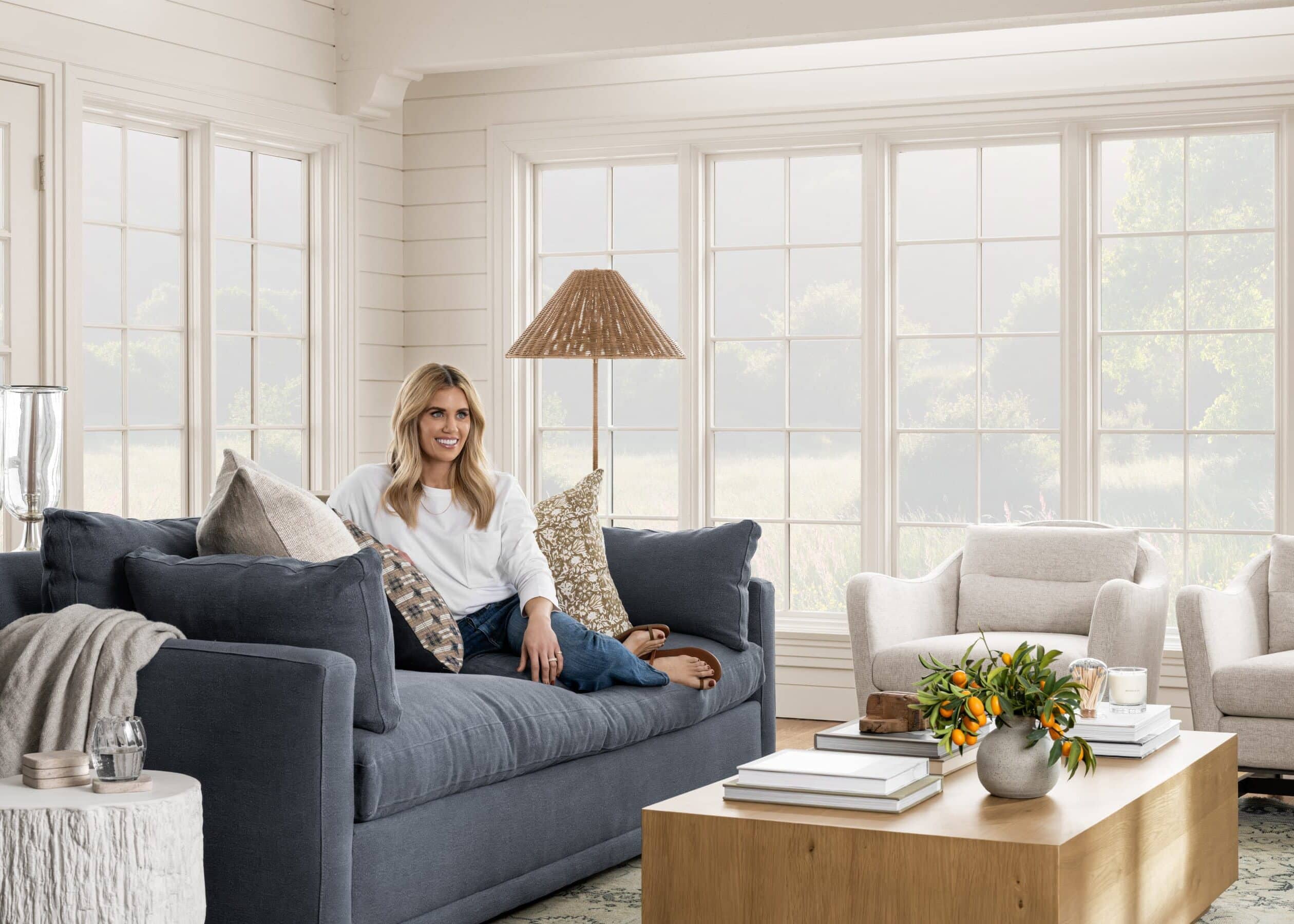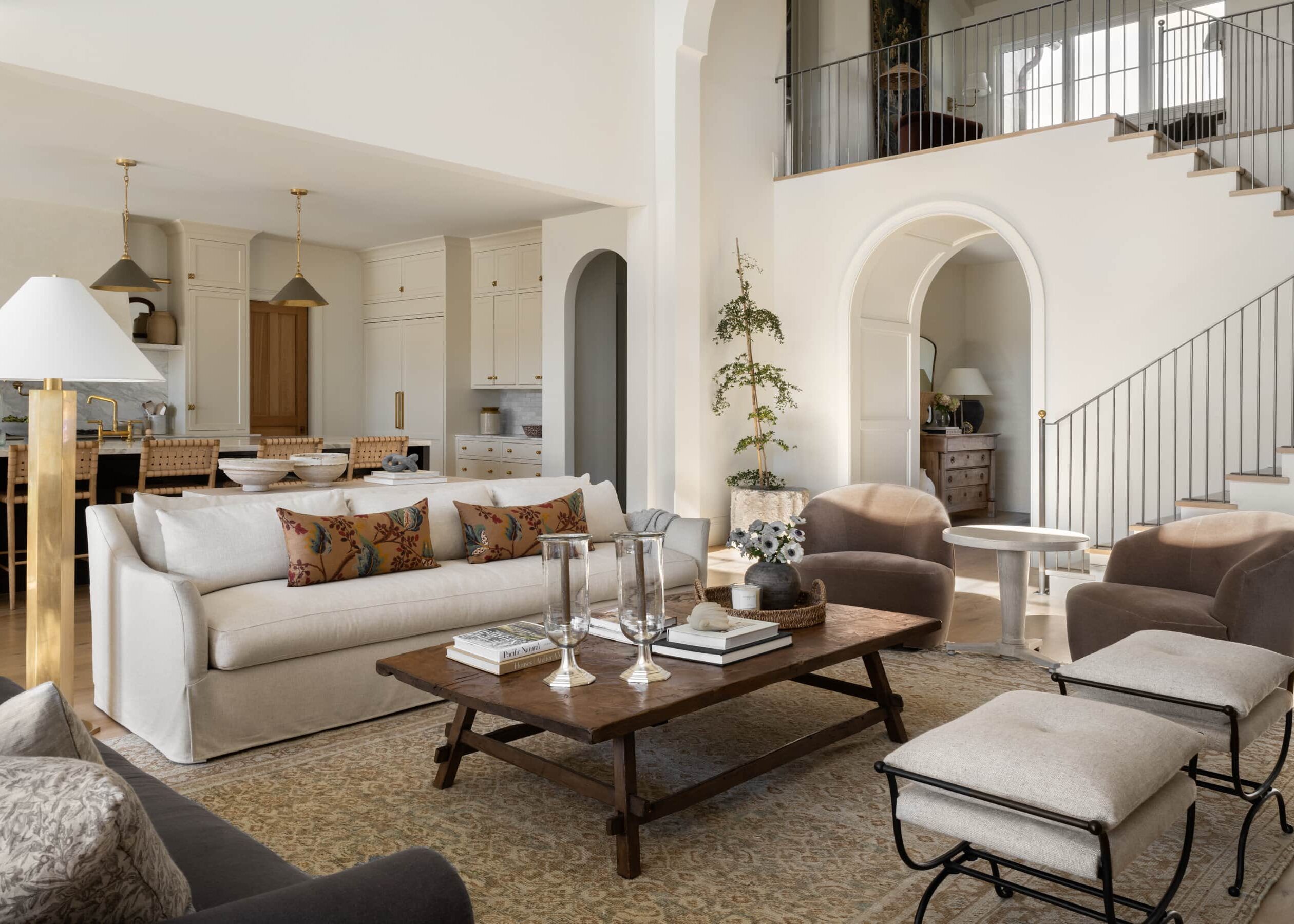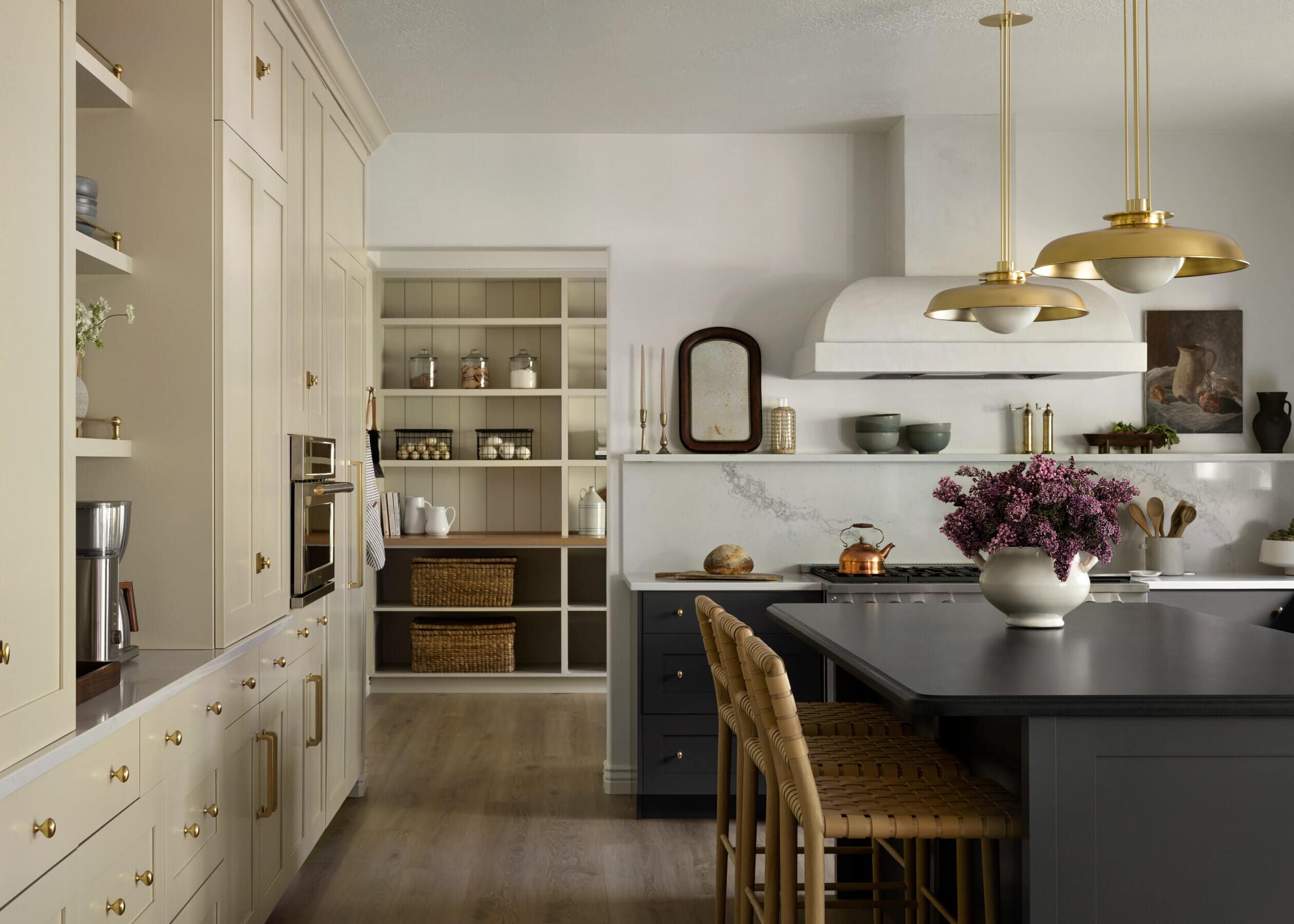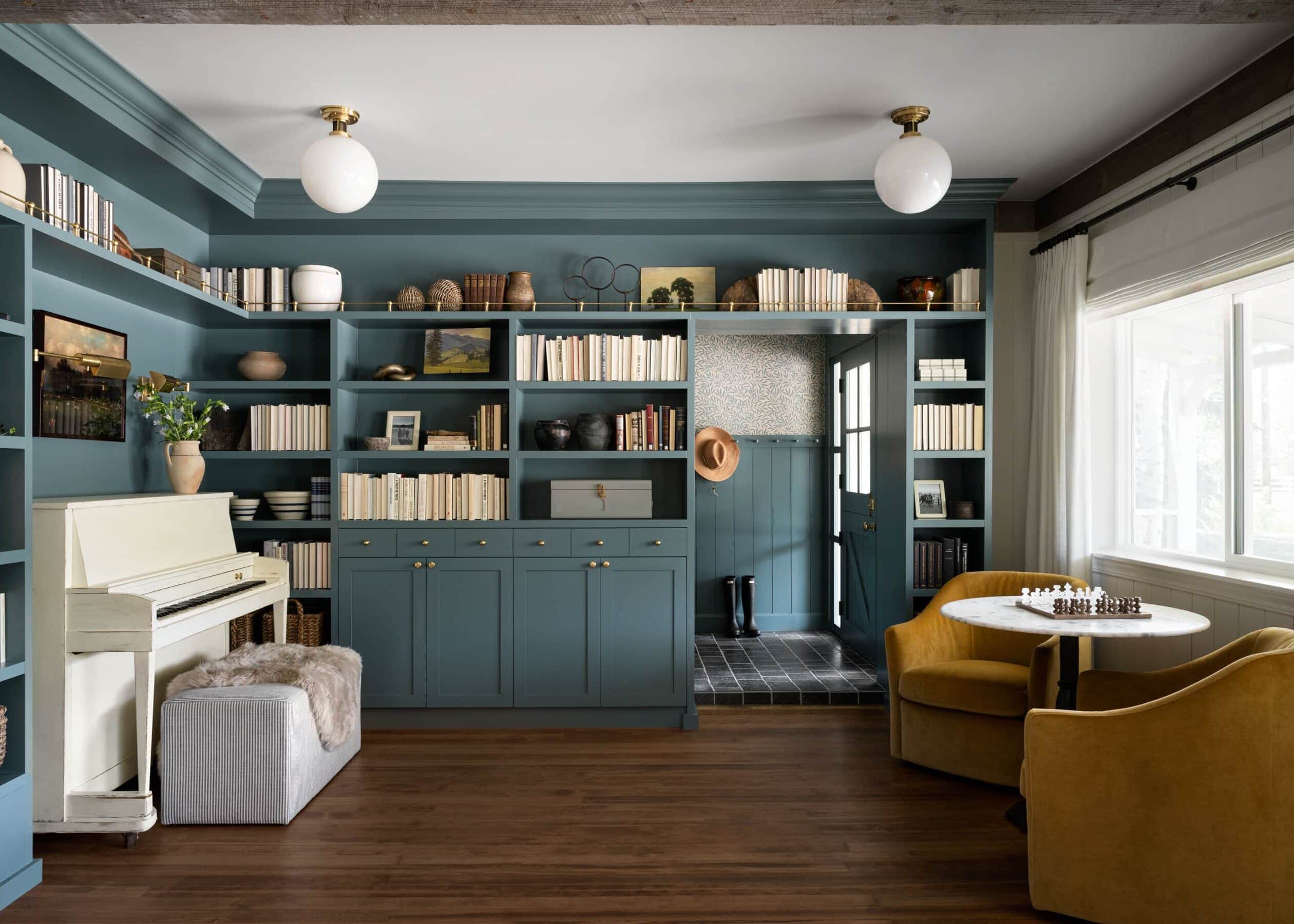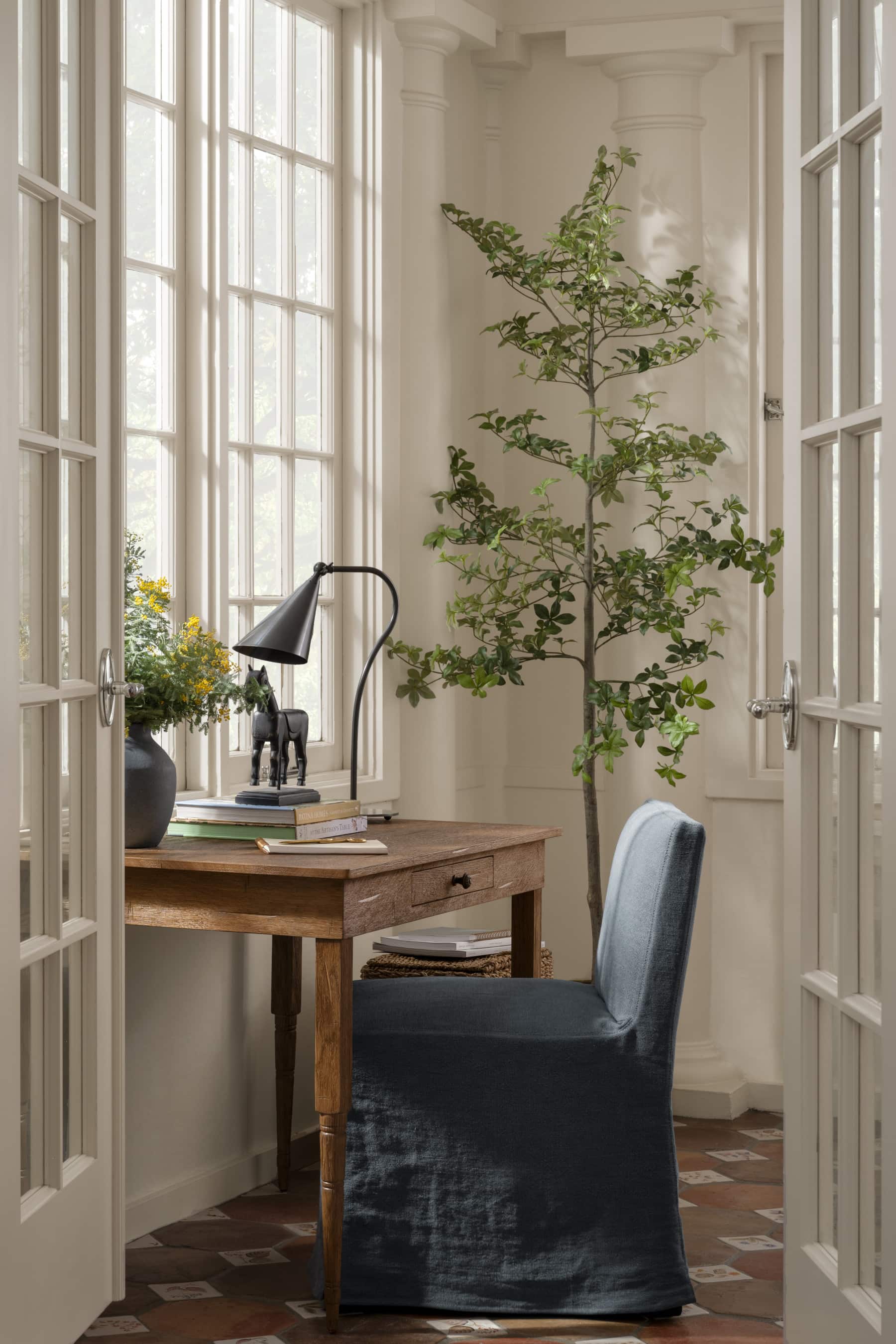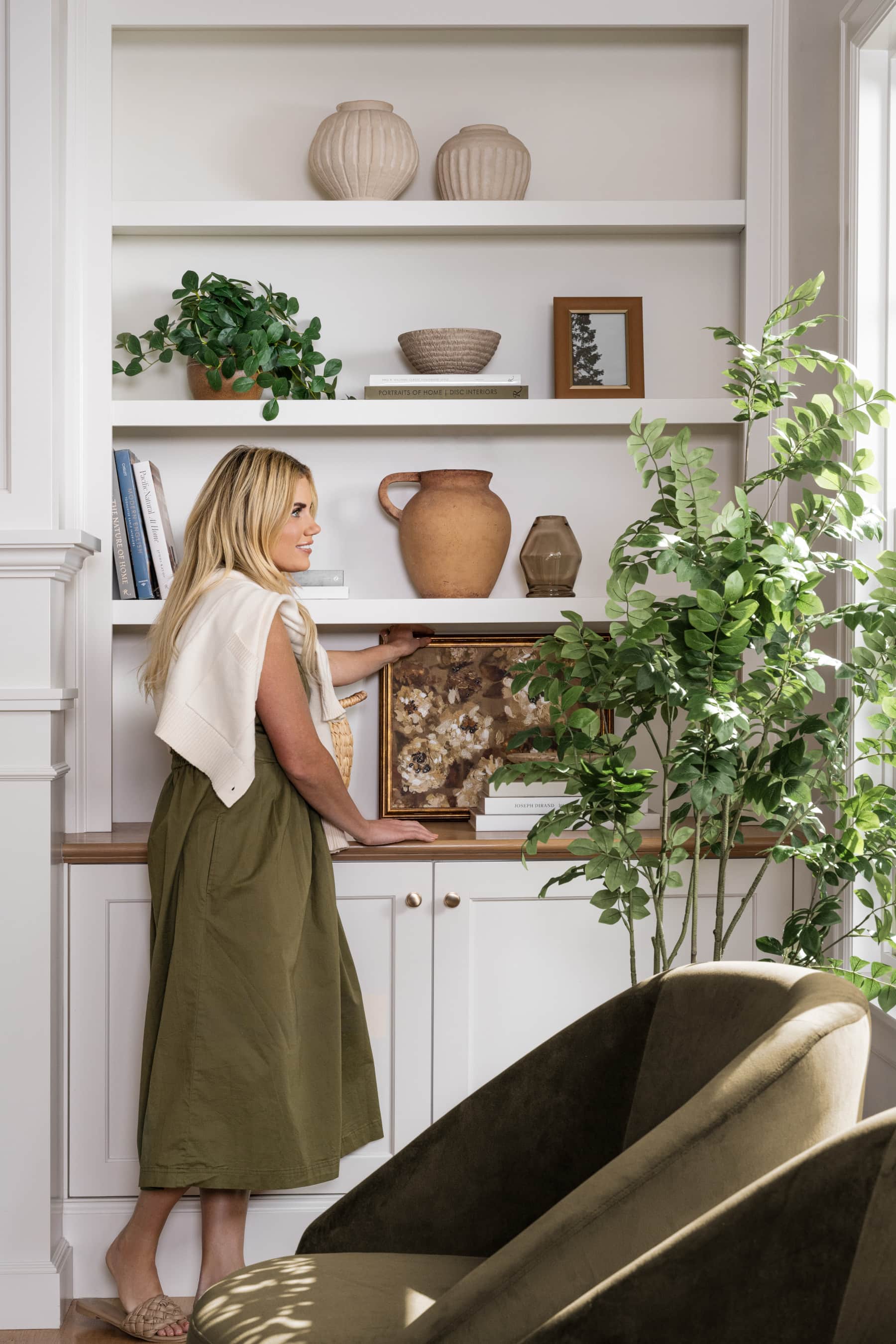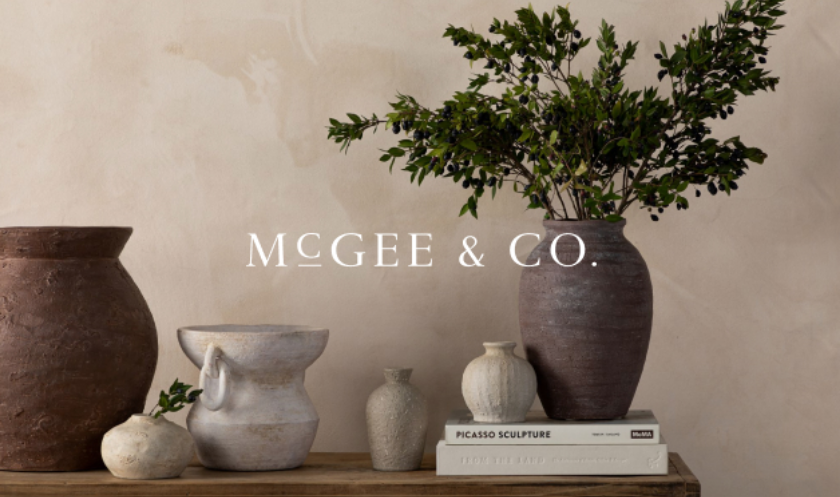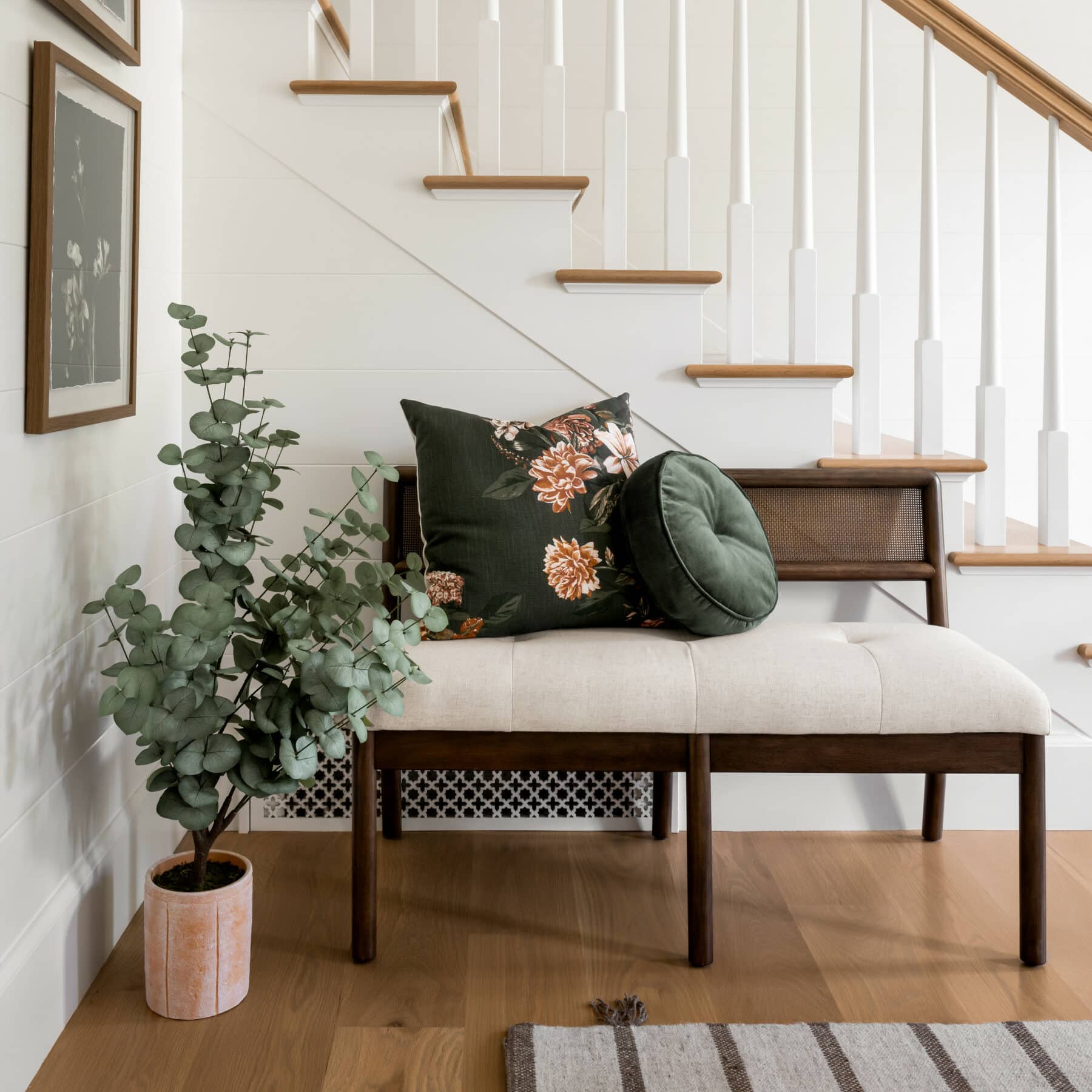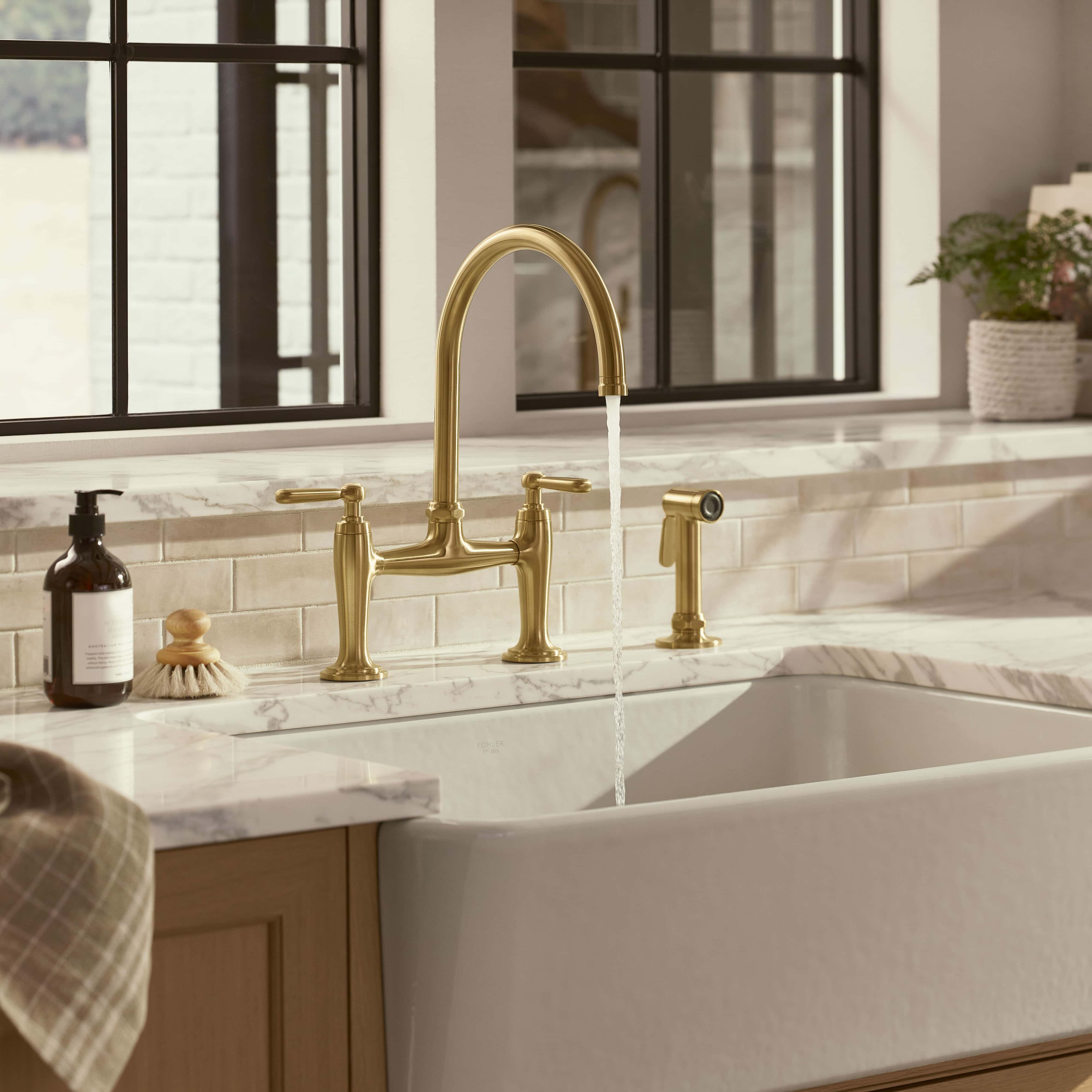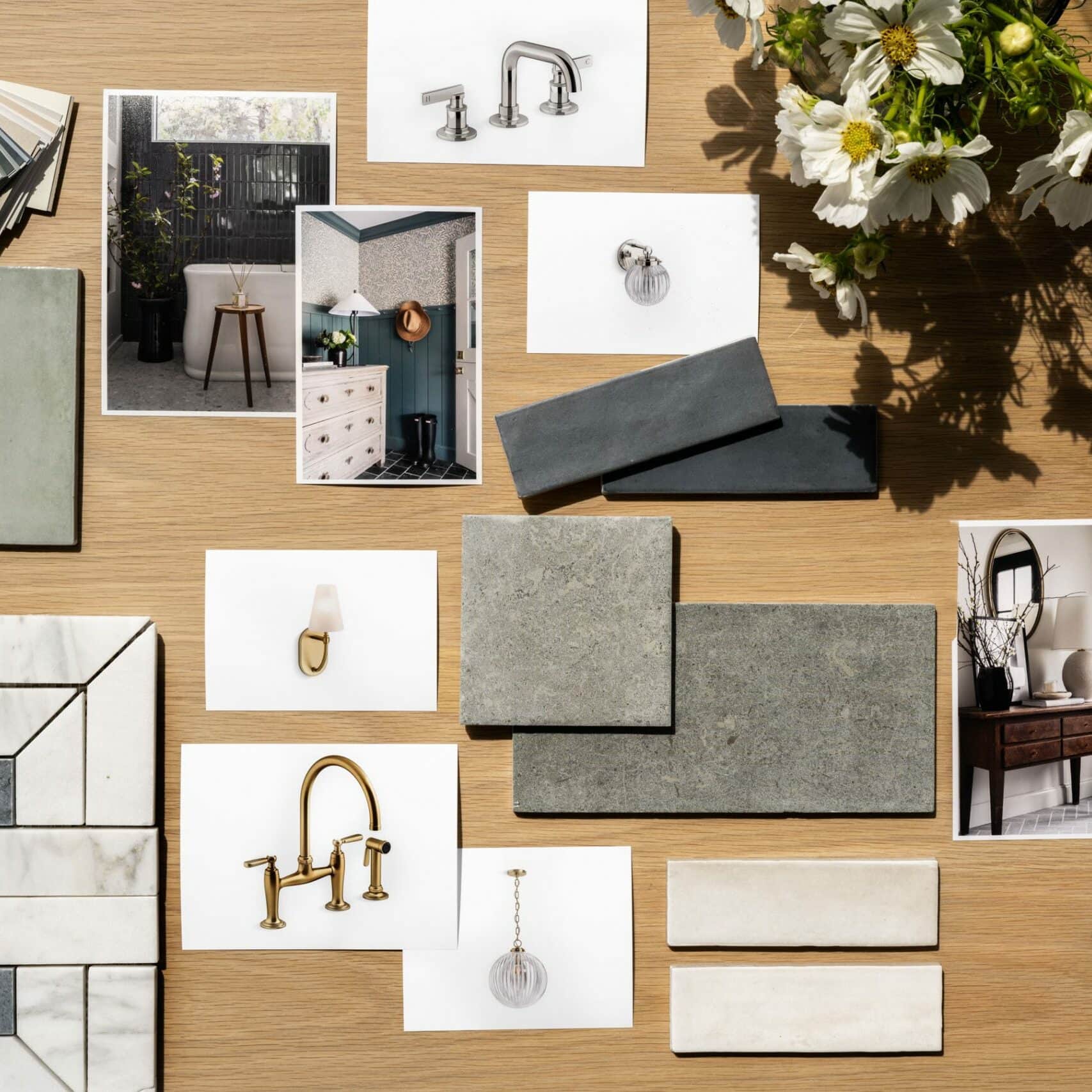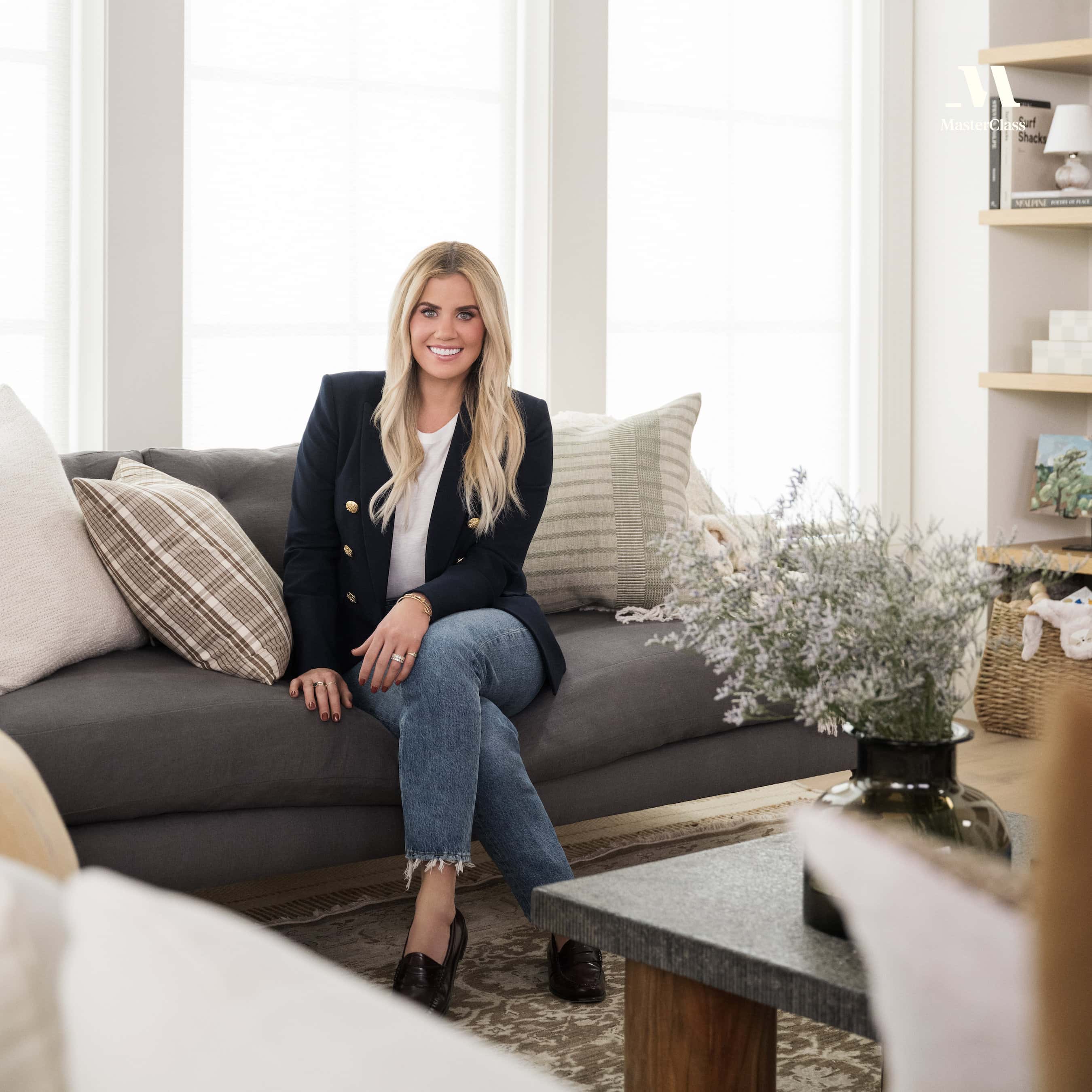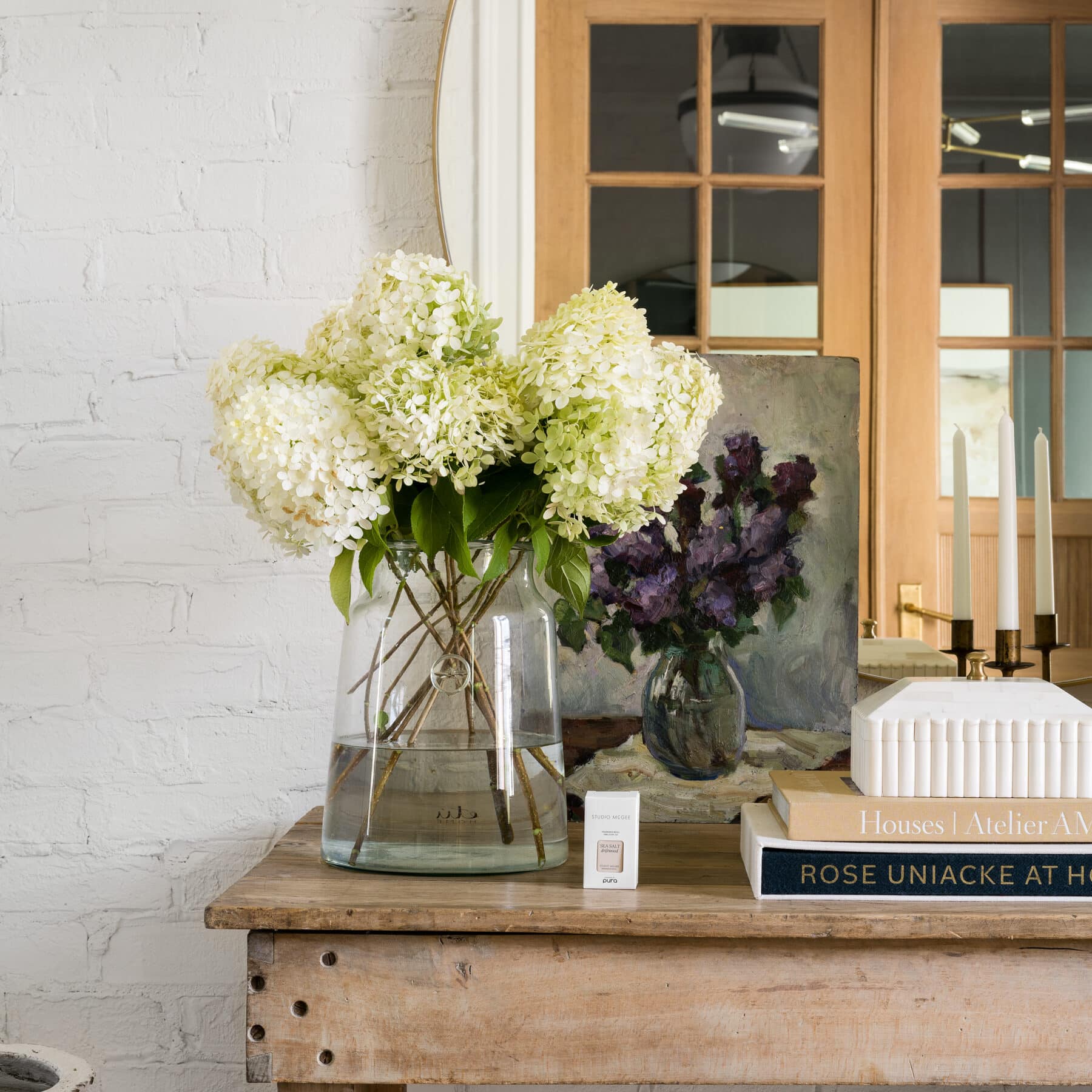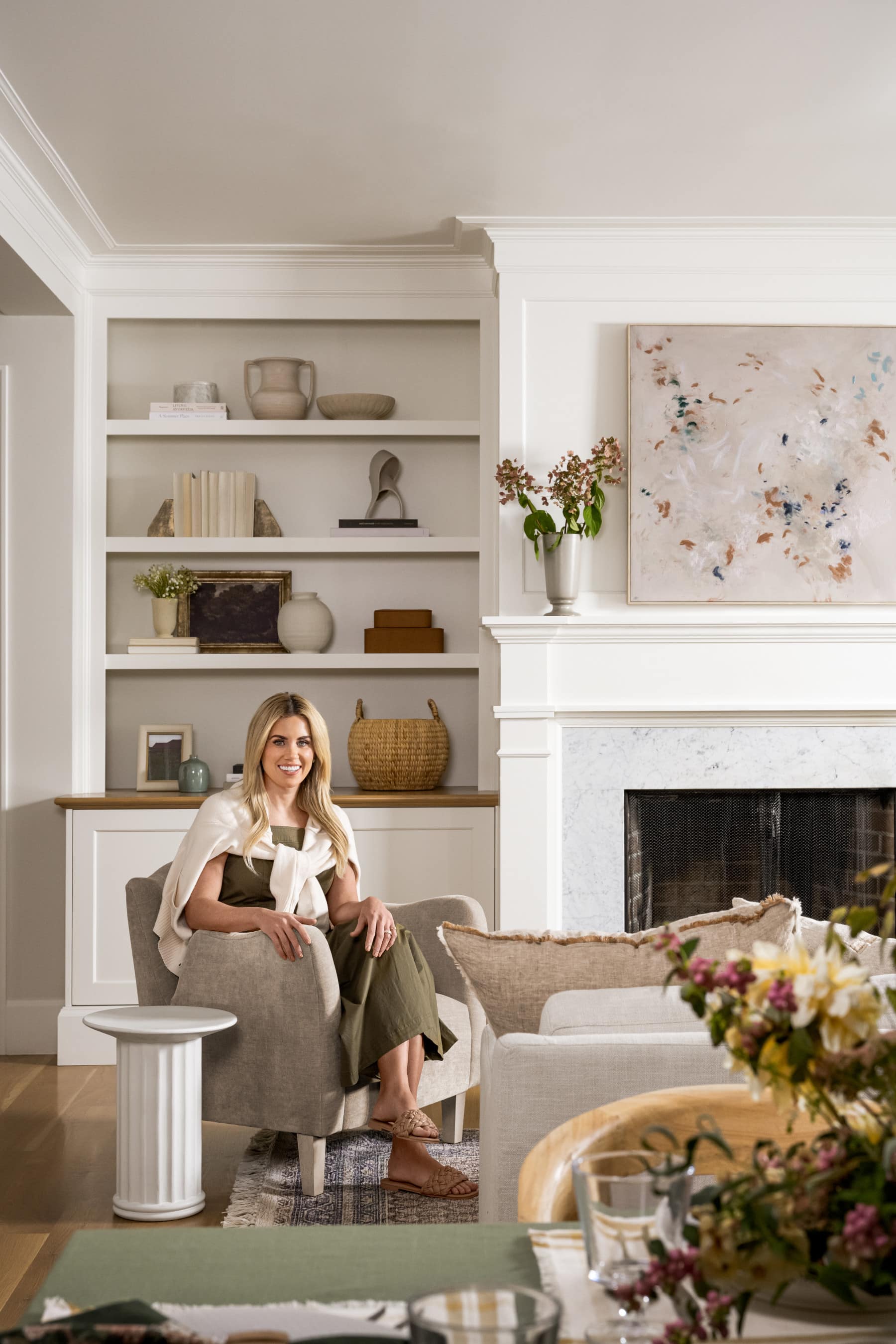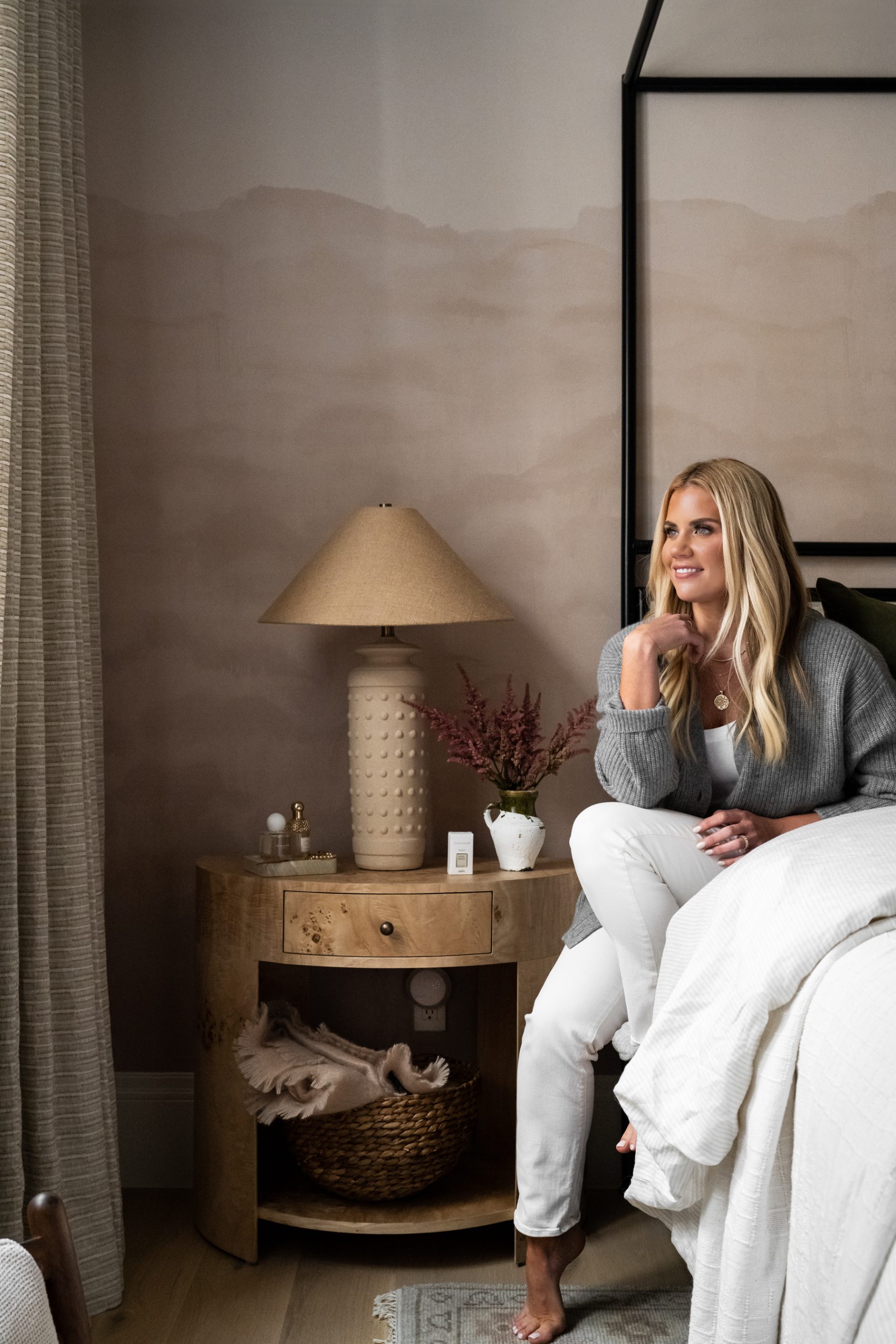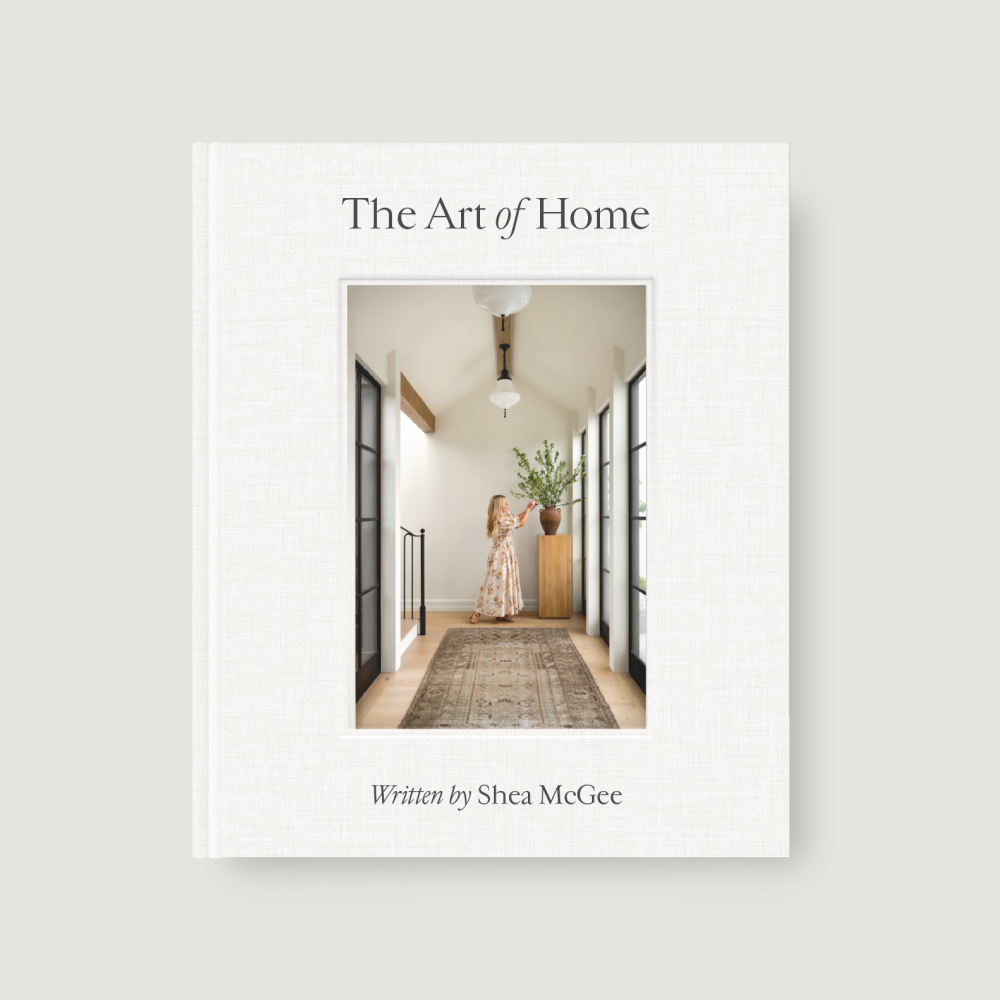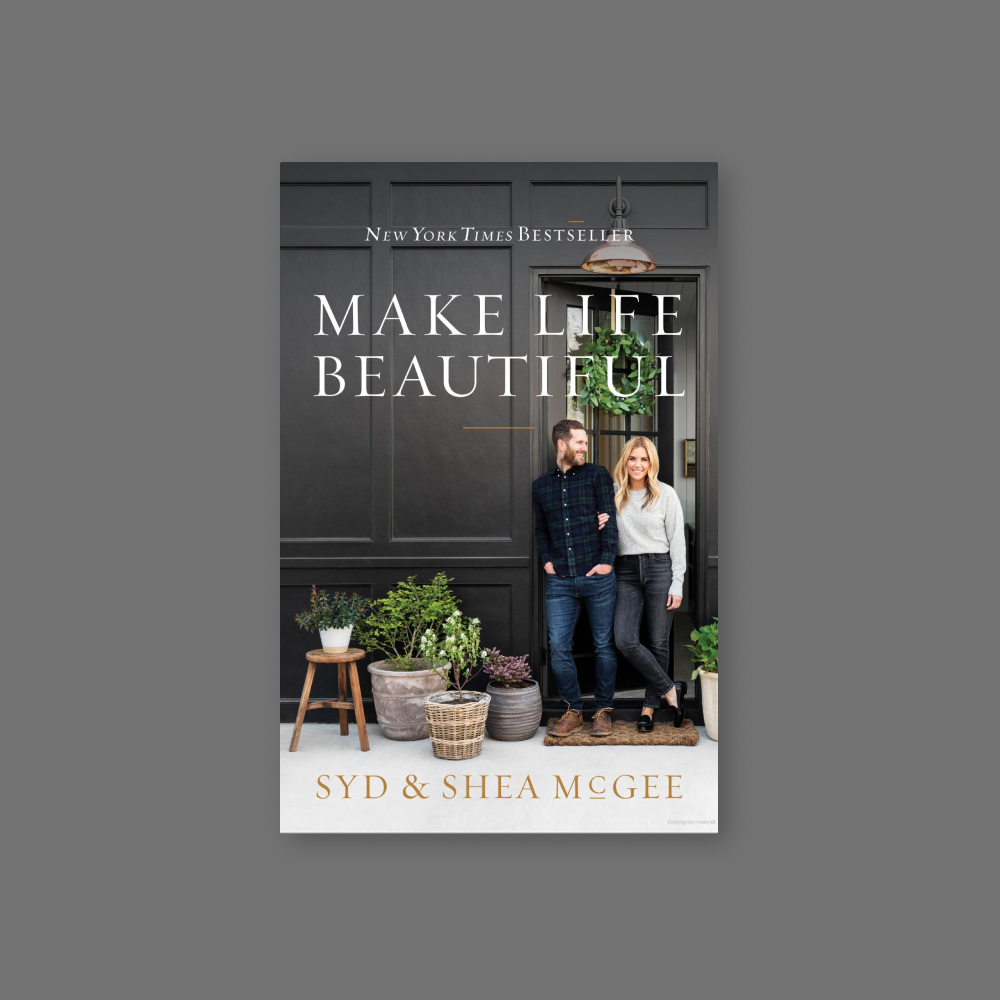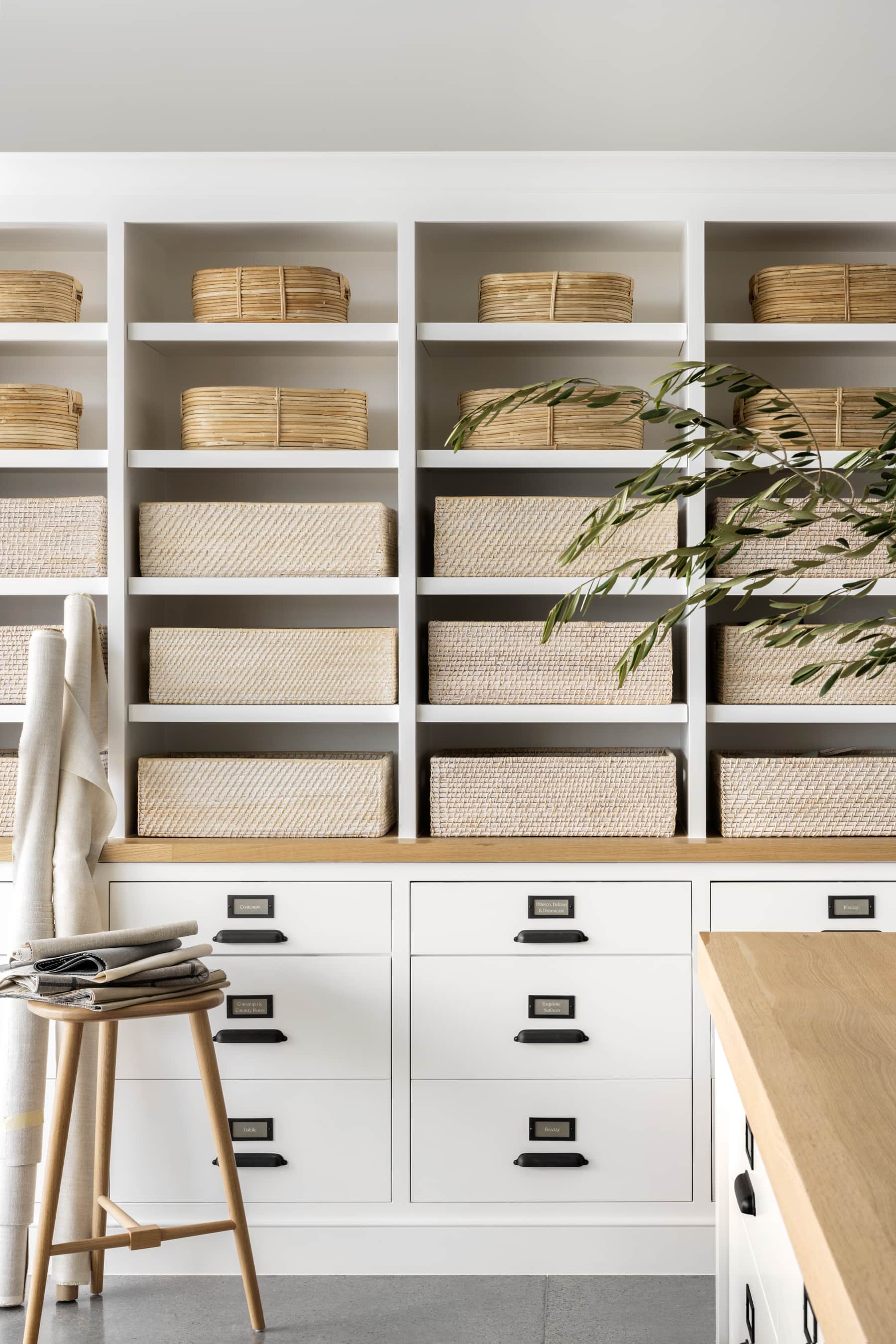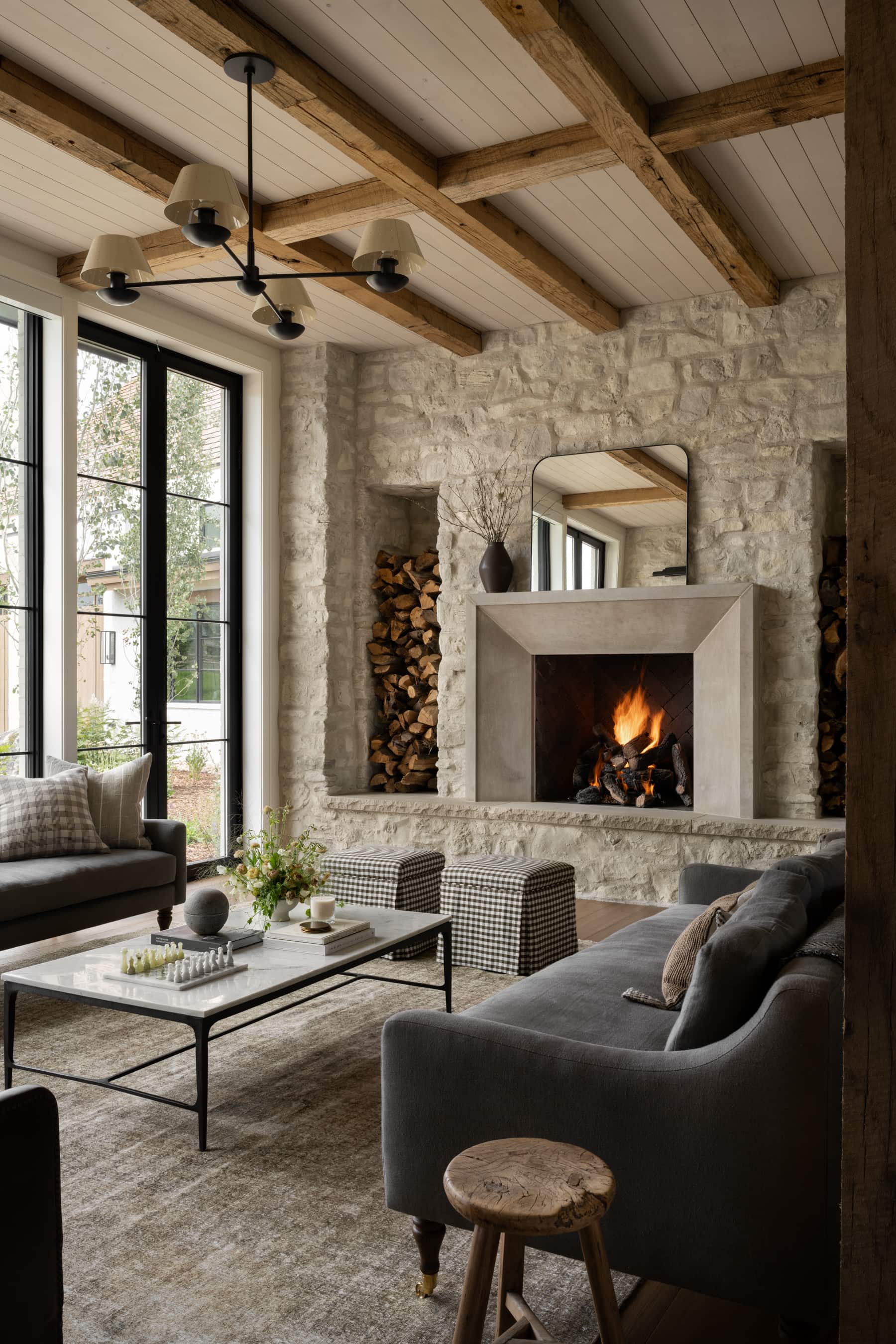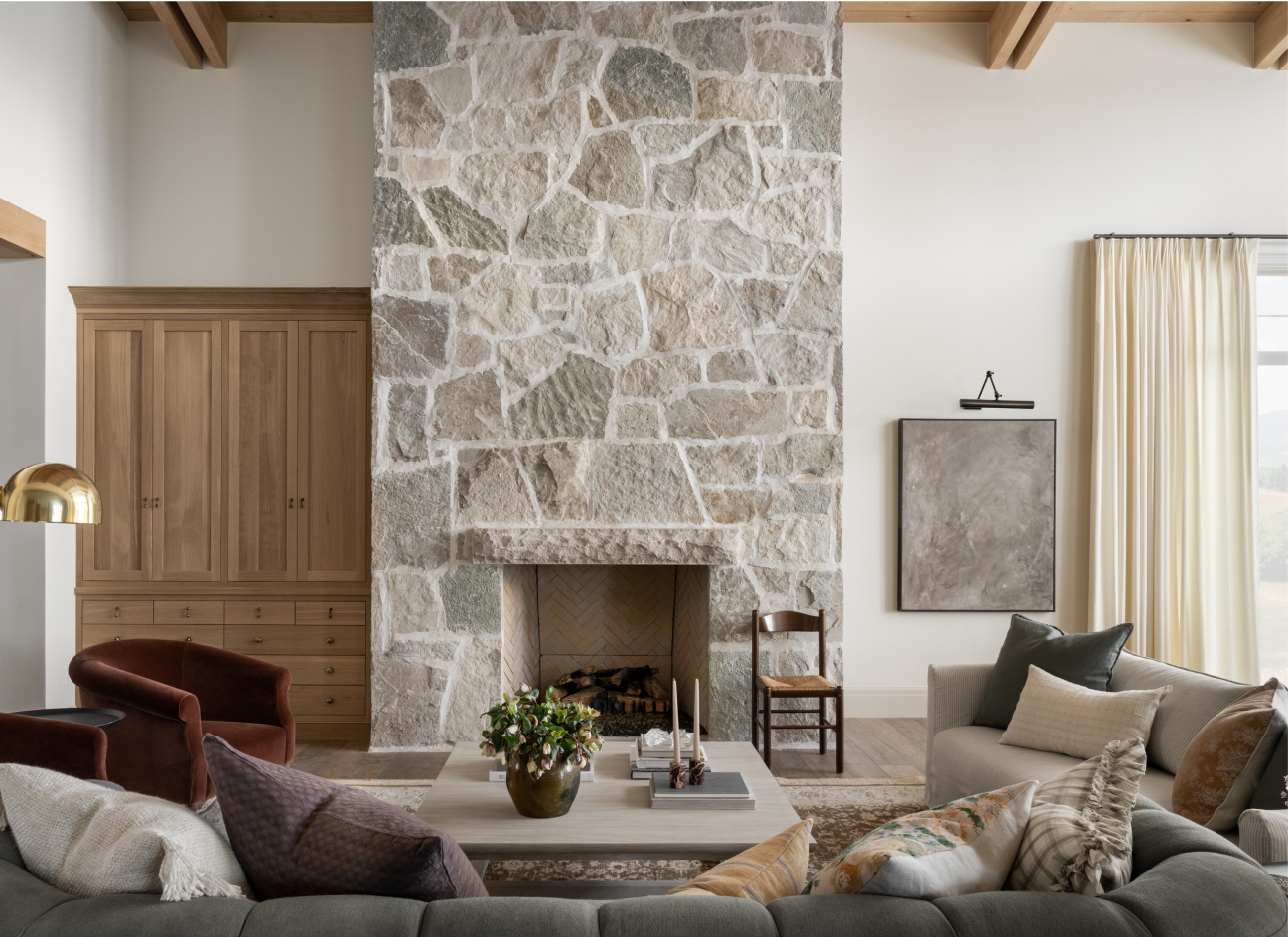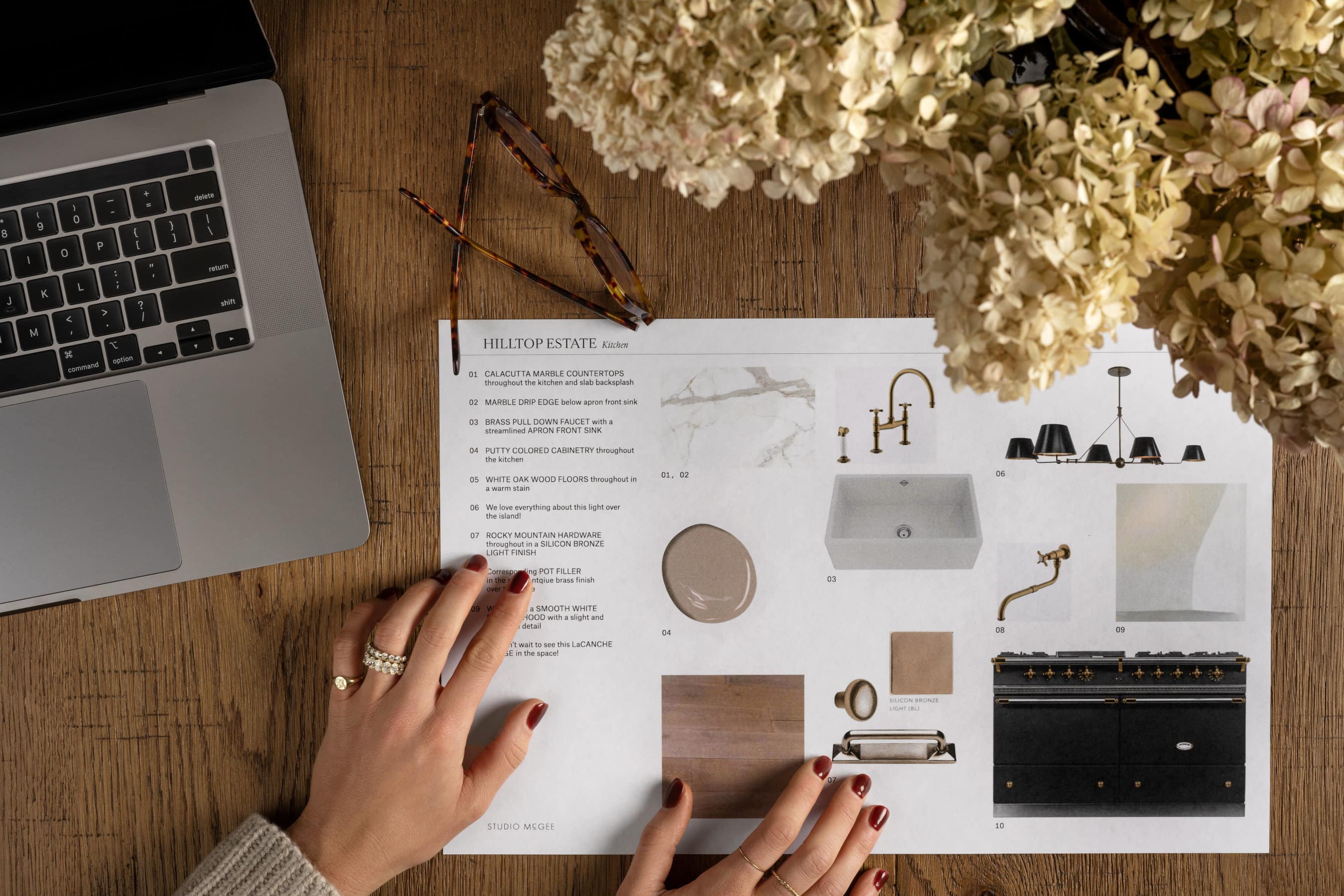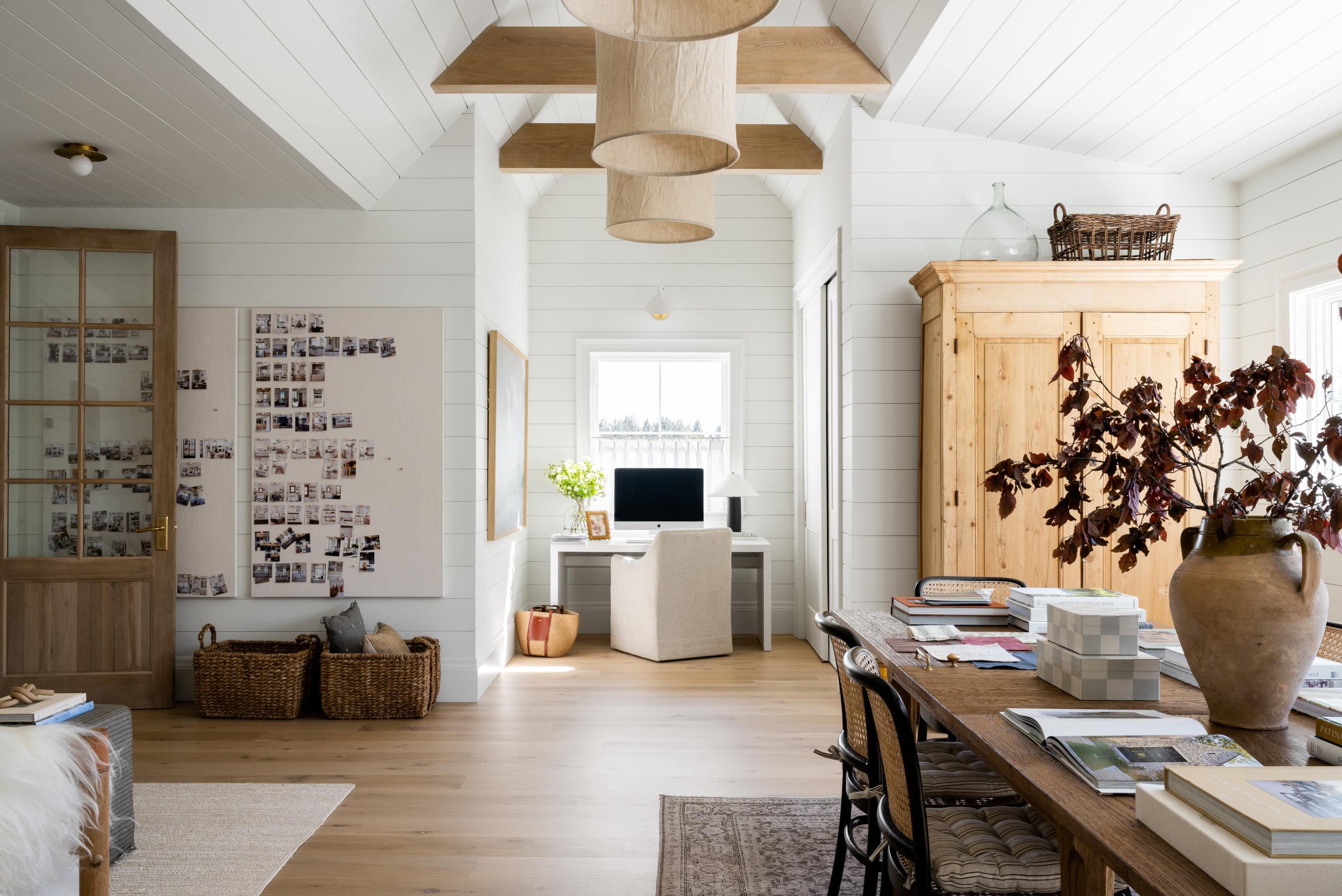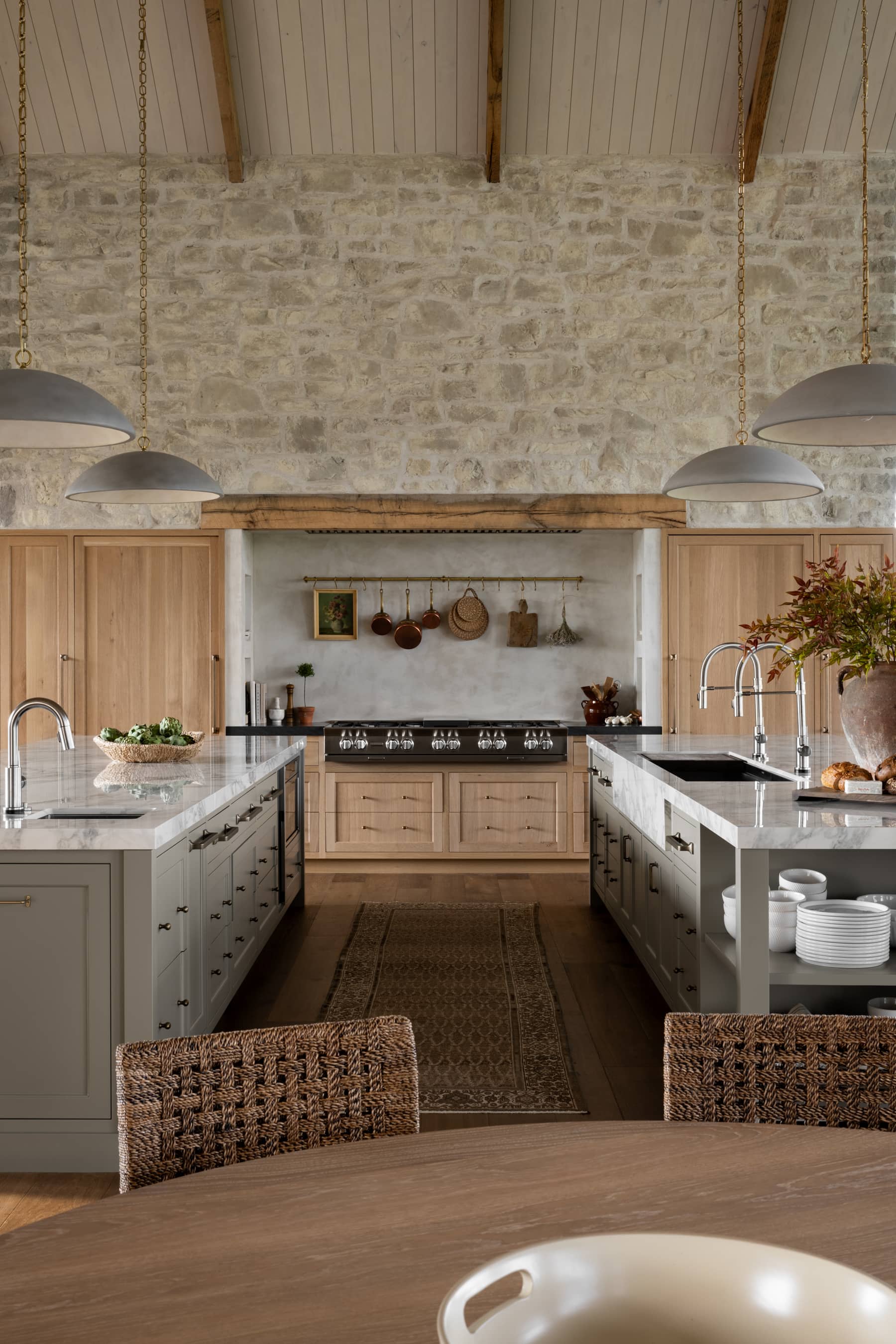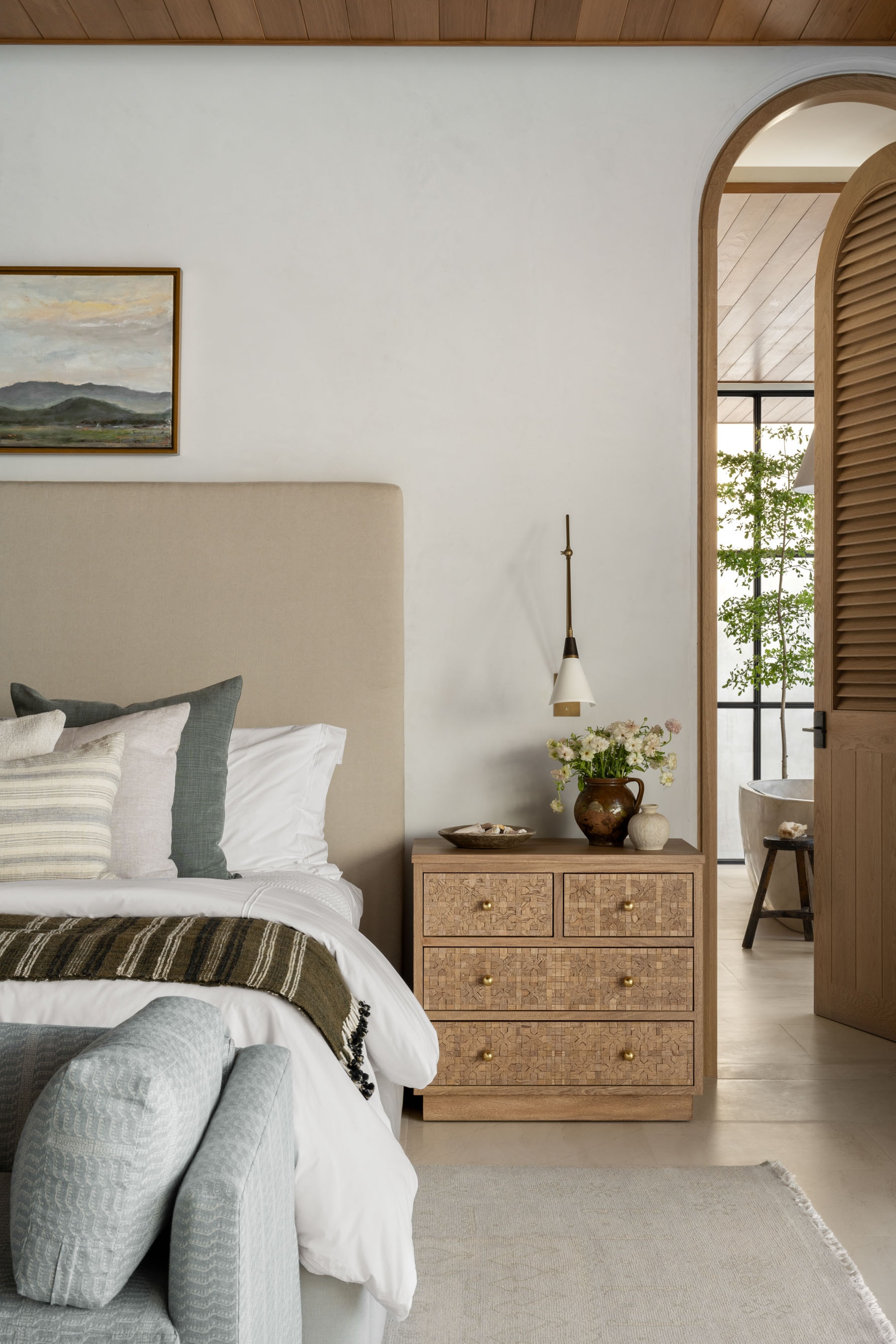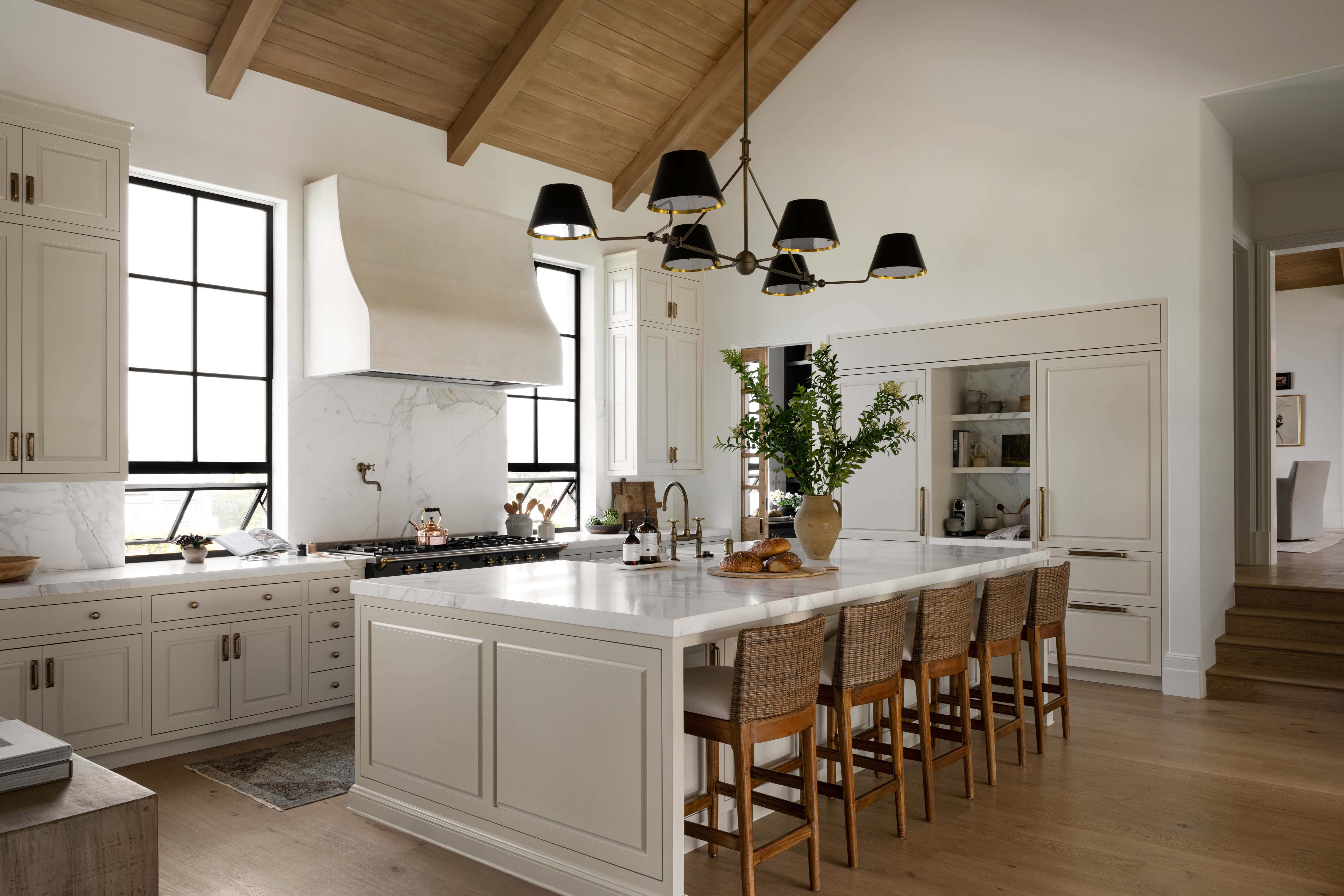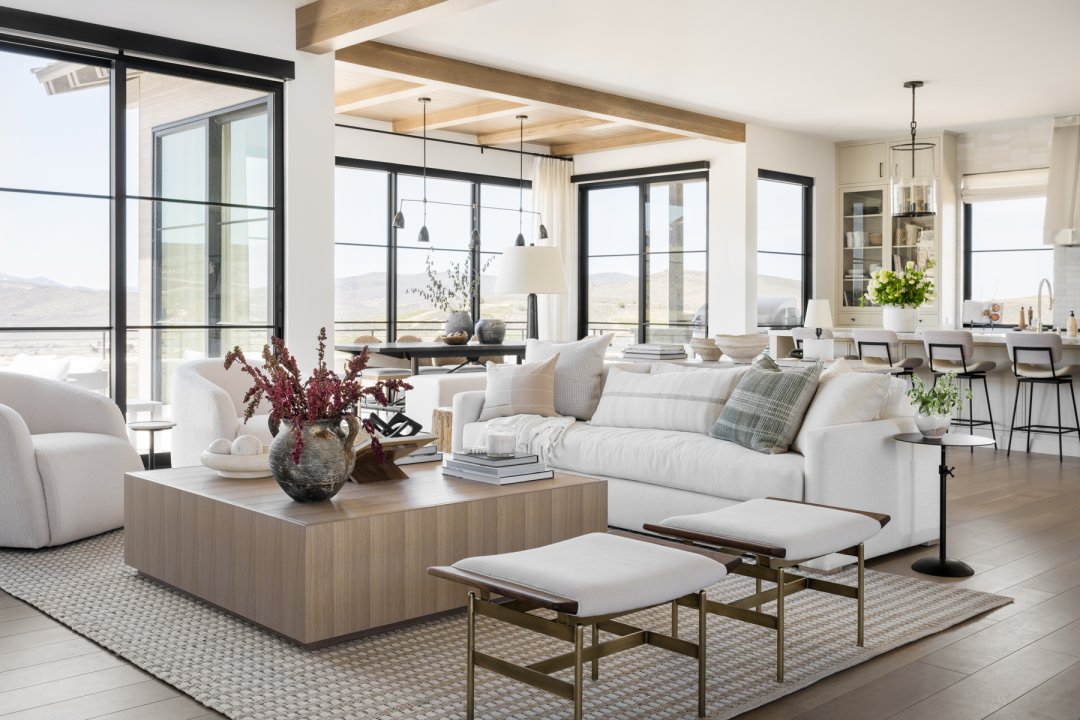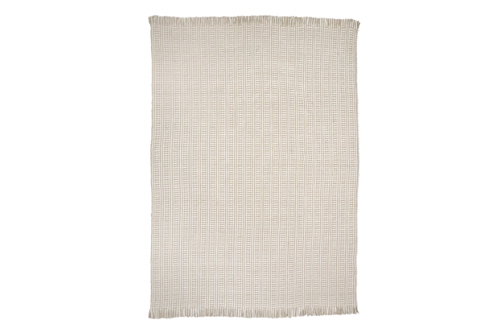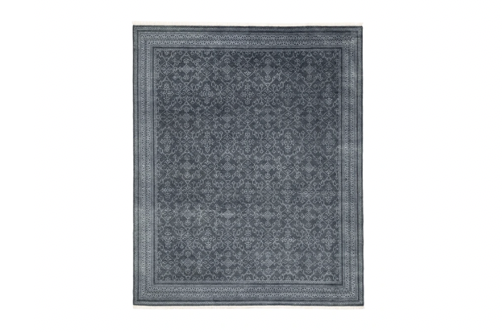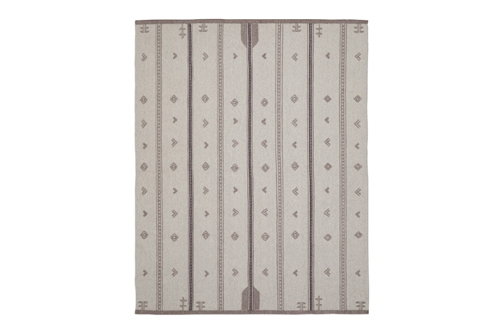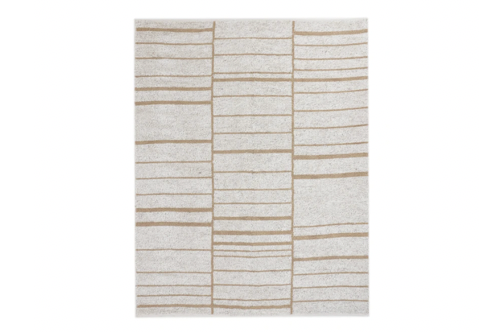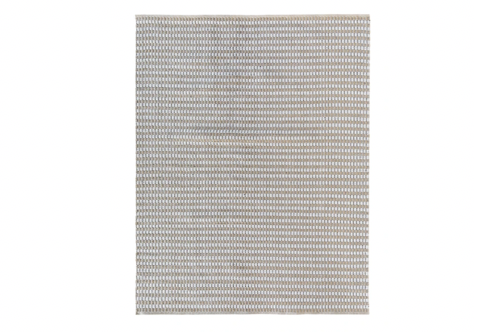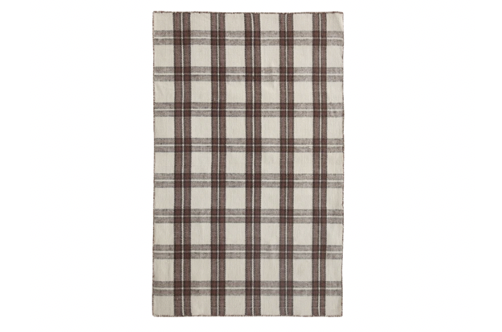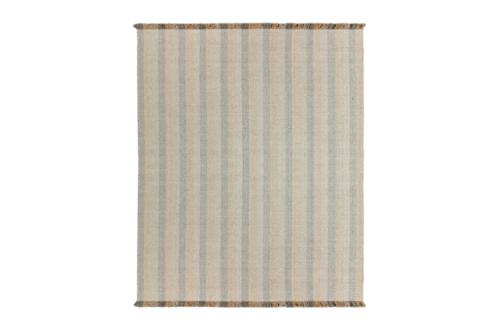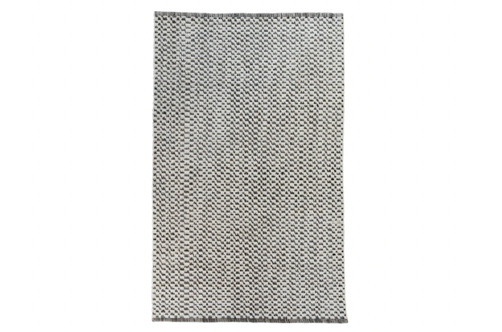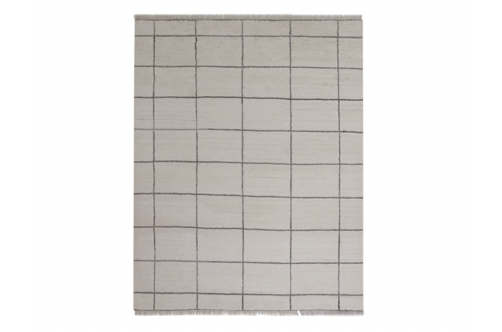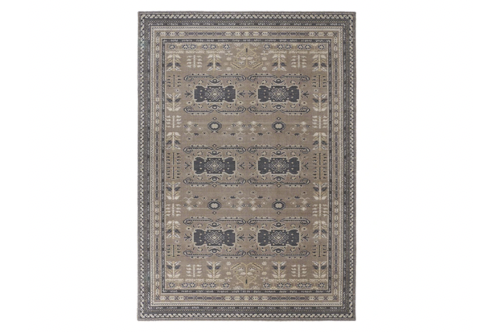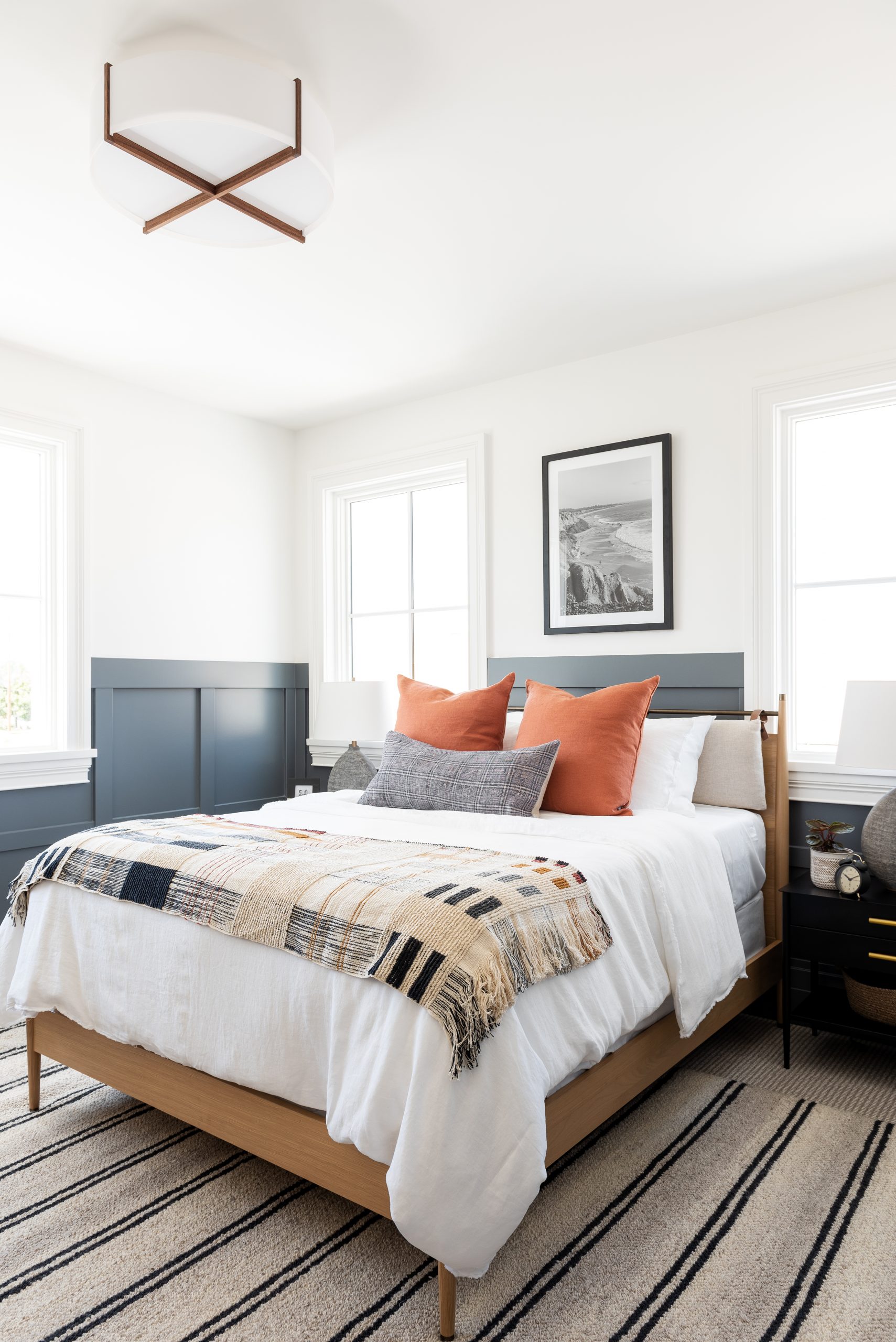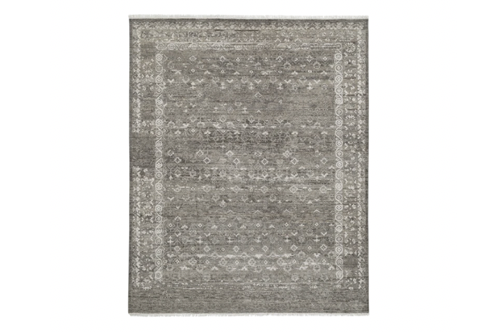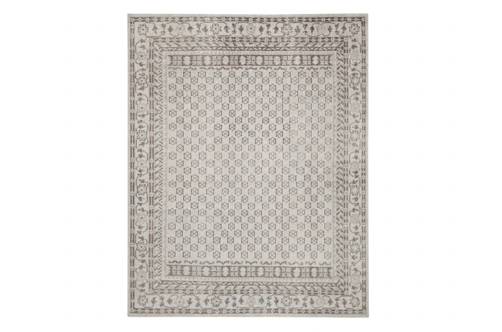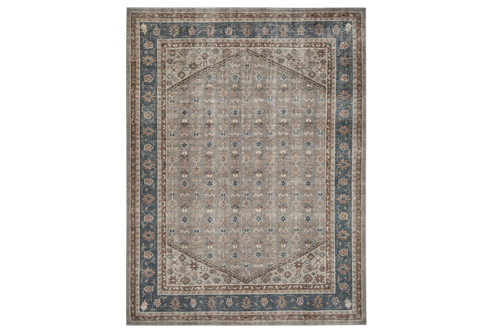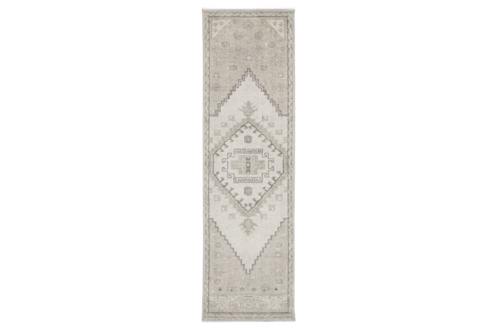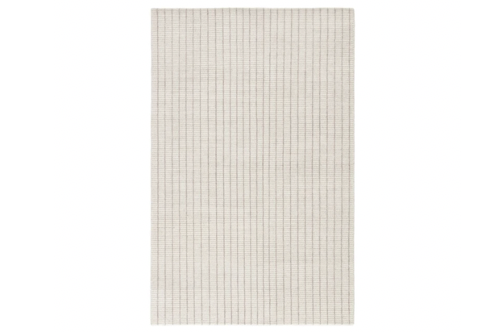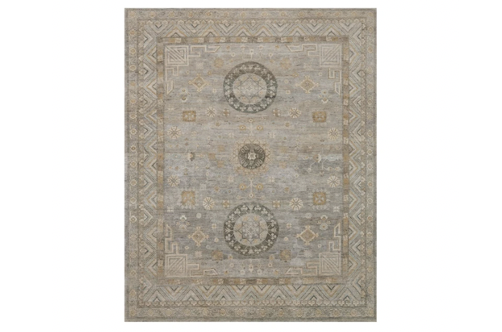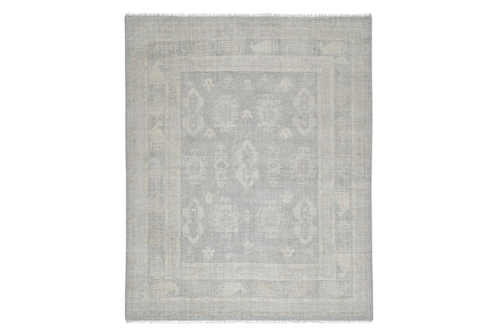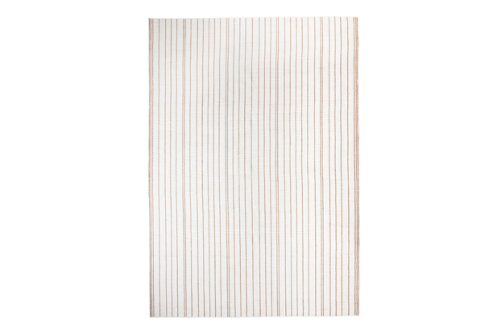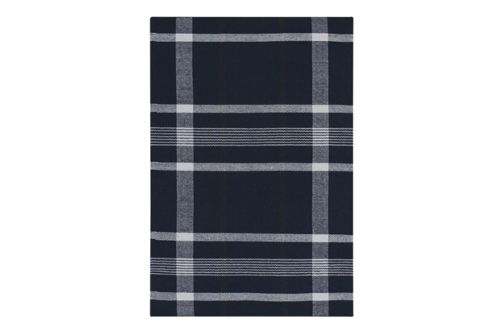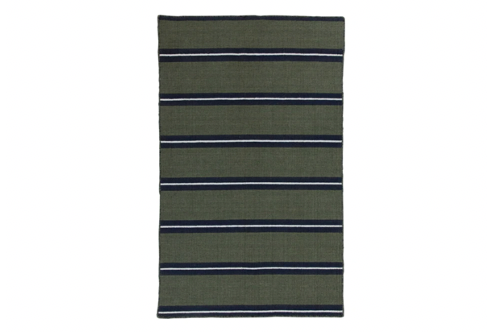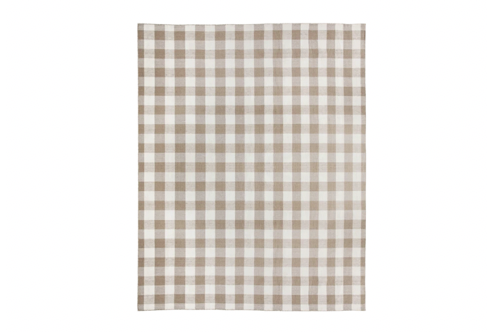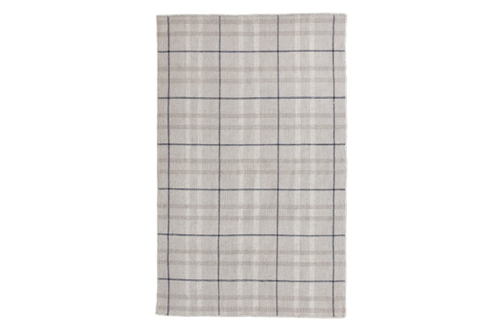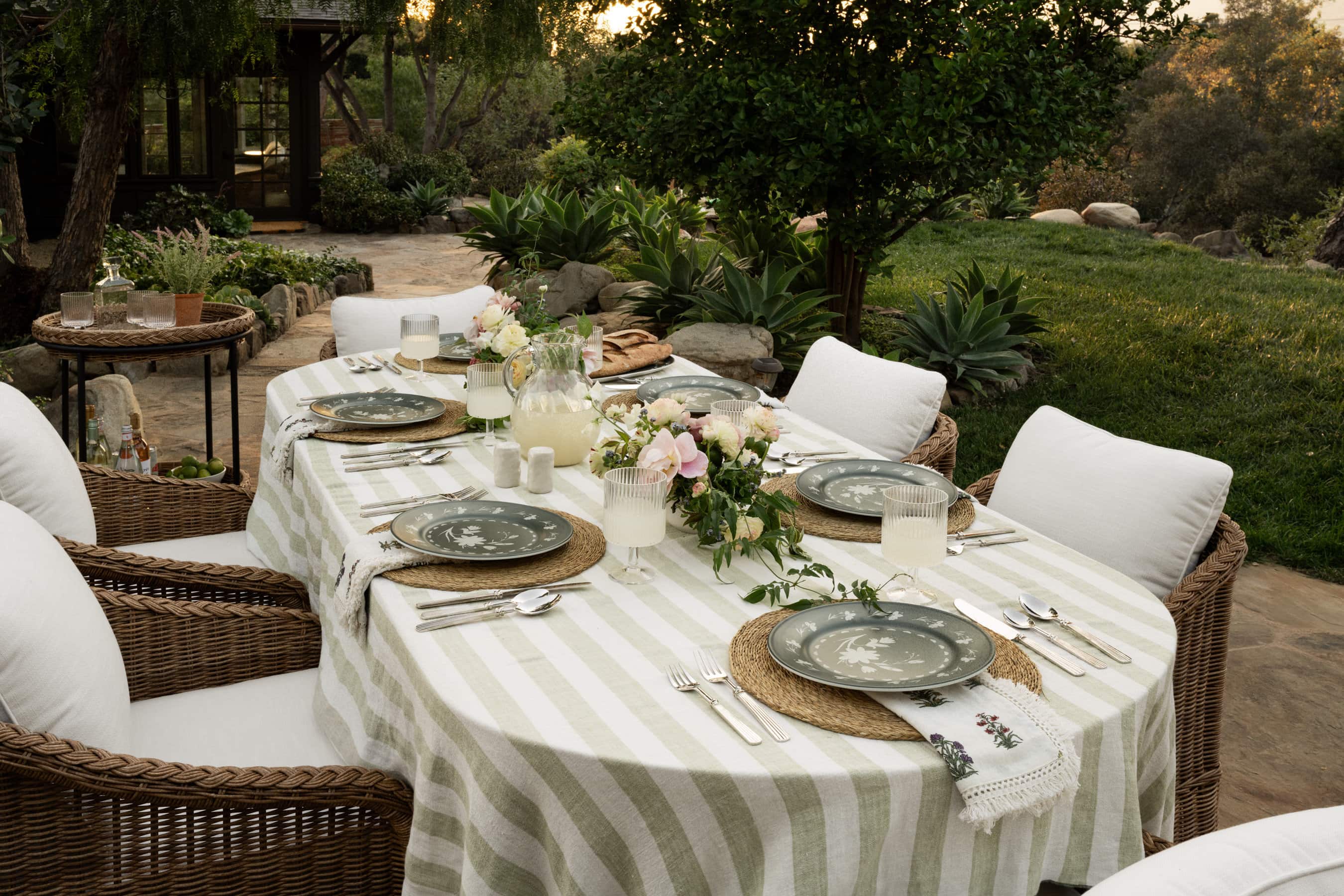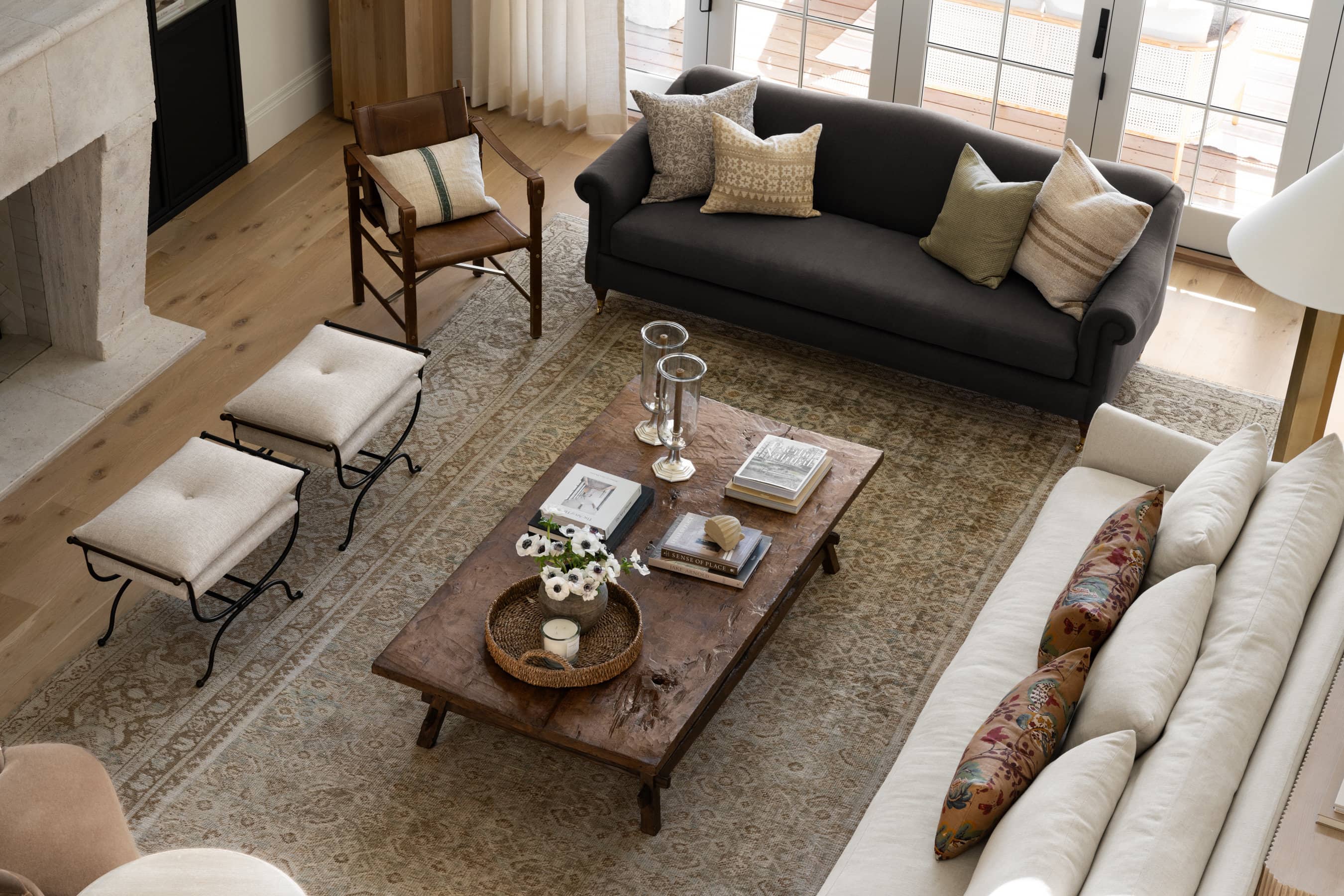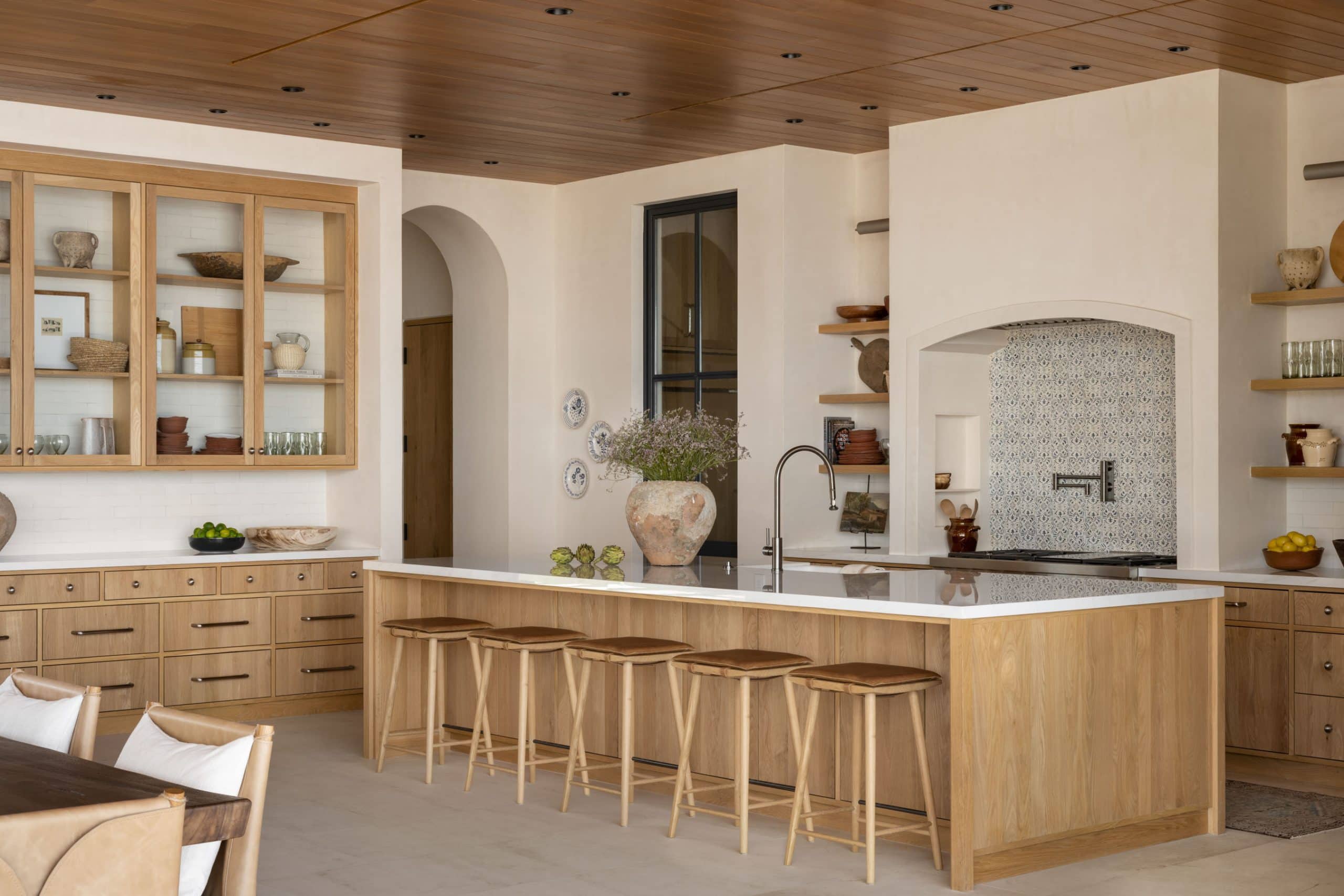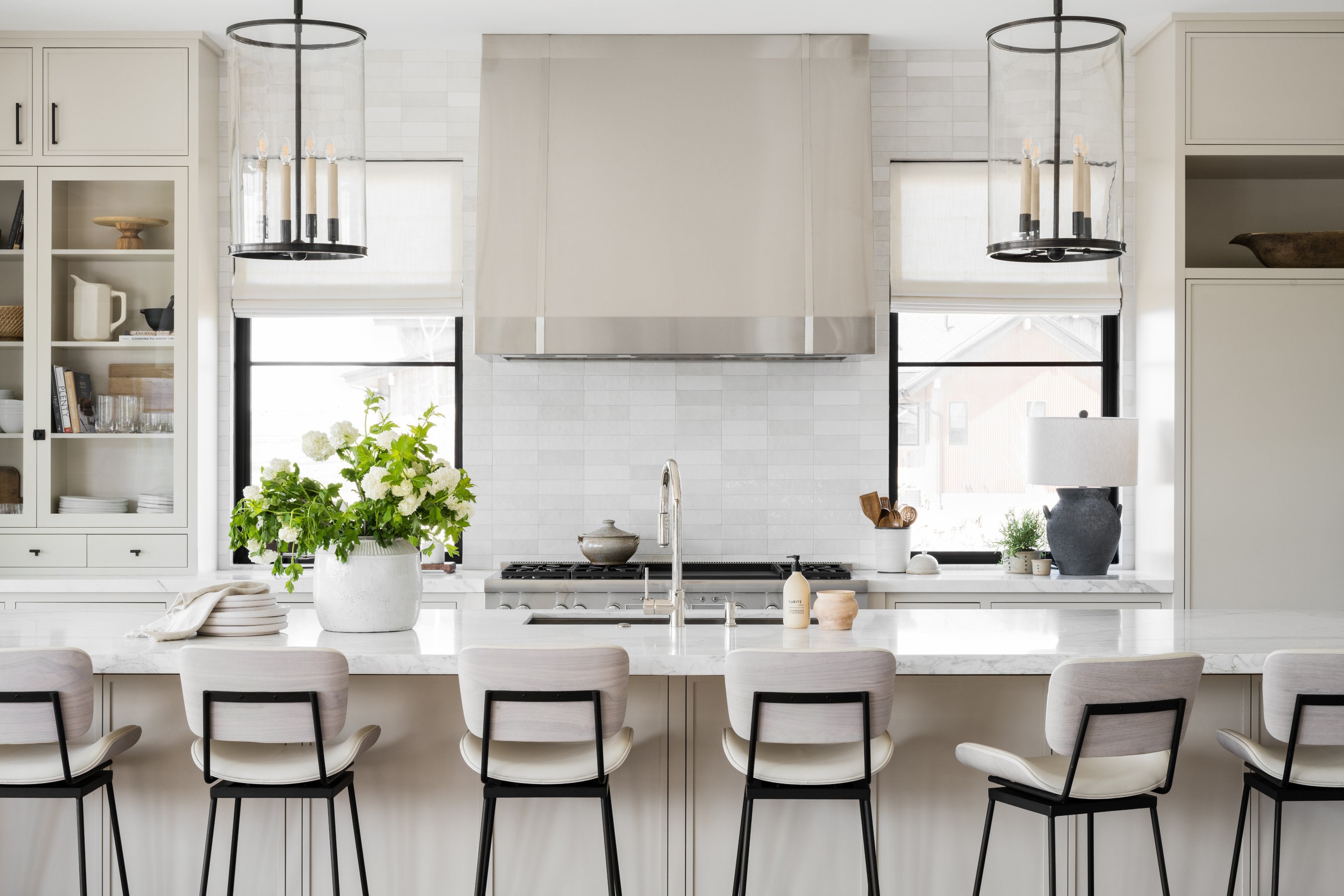
5 Rug Tips We Swear By
A few things you should know about rug placement
29 November 2021 -
Rugs are the layer a space often needs to feel complete…
and we use them in nearly every room we design. The perfect rug can ground the space, create a “zone” in an open-concept home, add texture, pattern, color, and provide a soft place to land.
Finding the right rug for your space can feel overwhelming —there are so many styles to choose from, not to mention the range of sizes! Our team has received a lot of questions about rugs over the years, and after selecting hundreds of rugs for all kinds of rooms, we’re excited to share a few tips we swear by in this post.
No. 1: Don’t skimp on size
Buying a rug that is too small for the space is one of the most common design “mistakes” we see people make, and chances are, you need a bigger-sized rug than you think you do to really fill the space well! While it may seem counter-intuitive, rugs that are too small can easily get lost in the room, making it feel smaller than it really is.
As a general rule of thumb, we like to make sure the rug touches the front legs of all furniture in the room, with at least 6″ on each side of the furniture.
For more tips on rug sizing, check out our guide here!

From The McGee Home
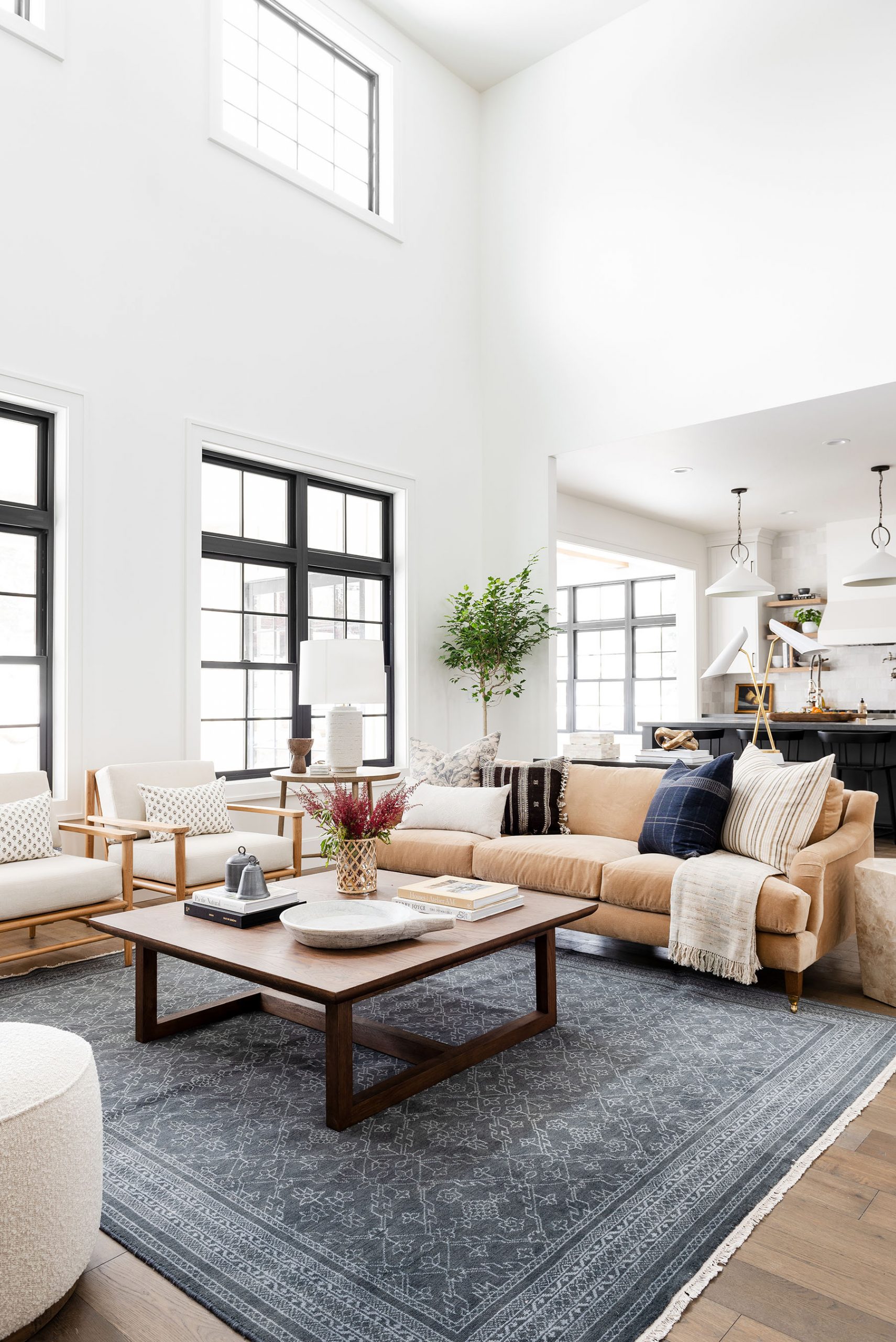
From our Beckham Project
From our Mountainside Retreat Project
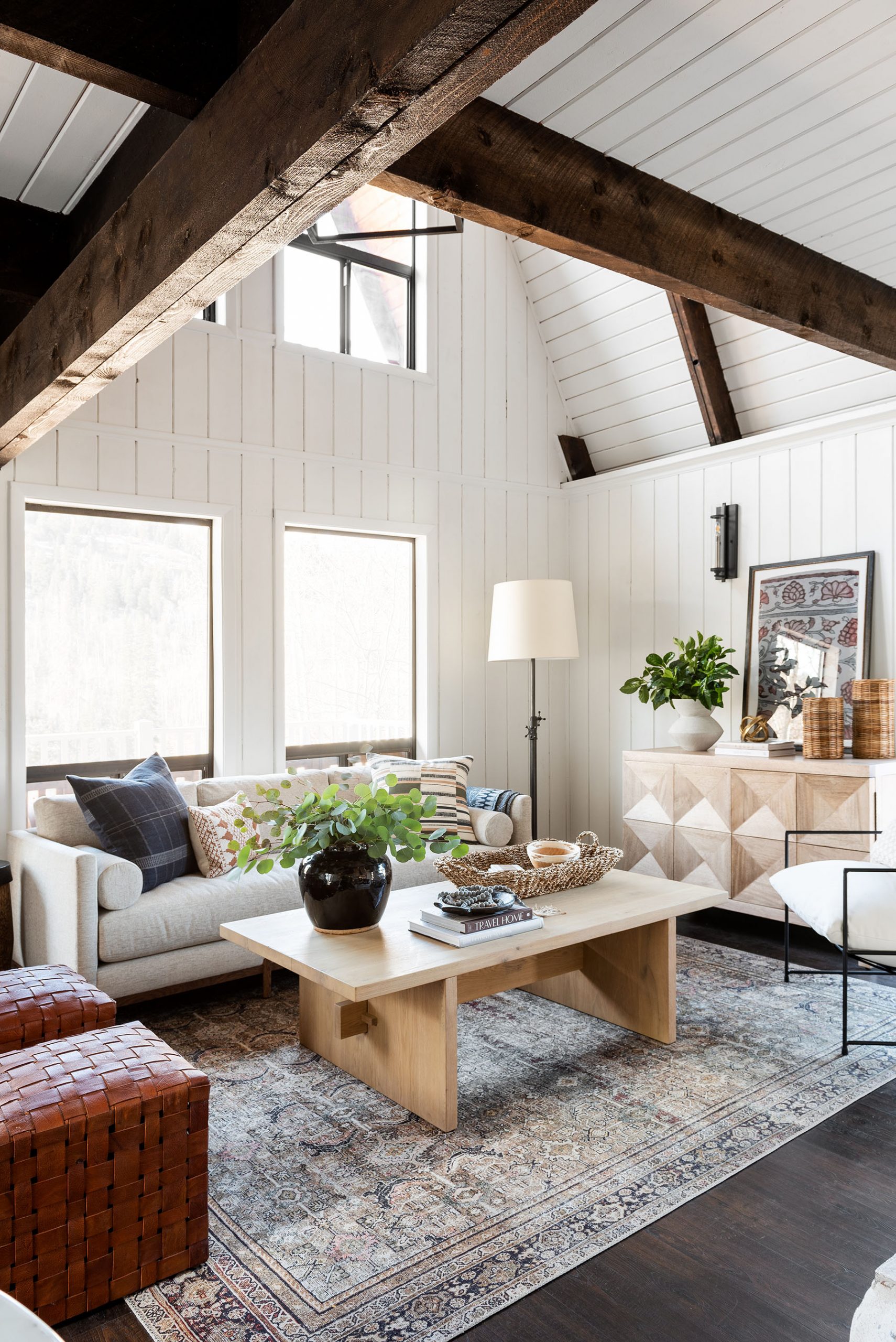
From our Modern Bohemian Netflix Remodel

From our McGee & Co. 2021 Summer Catalogue
No. 2: Rugs are still important in carpeted spaces
One of the questions we get about rugs most frequently is whether or not rugs are needed in carpeted spaces, and the answer is yes! Although it might seem strange to put a rug in a room with carpet, a rug is still needed to ground the space visually. Plus, a rug can provide extra padding for an even more comfortable place to land.
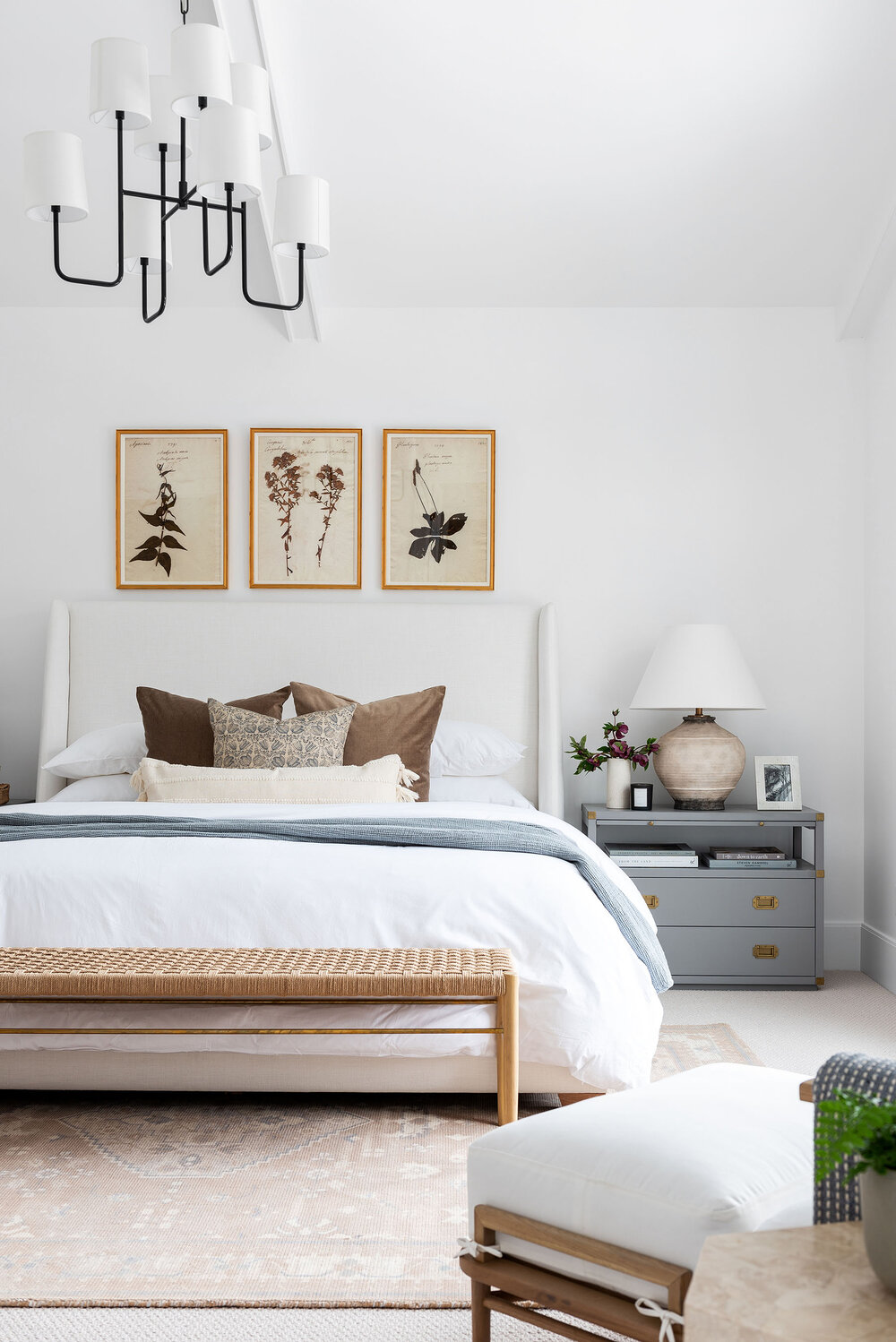
From our Beckham Project
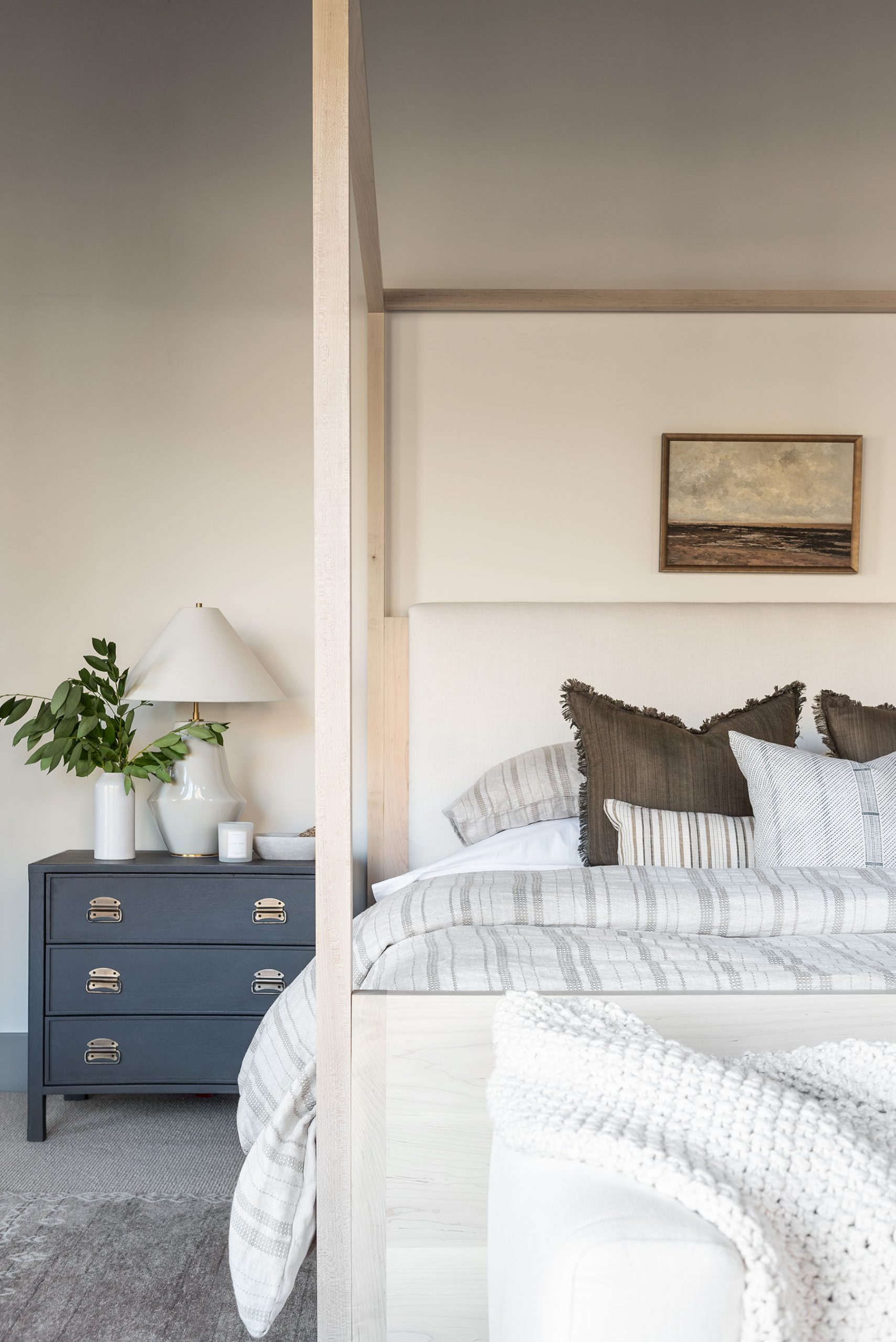
From our McGee & Co. 2020 Winter Catalogue
From our Layered Coastal Netflix Bedroom Remodel
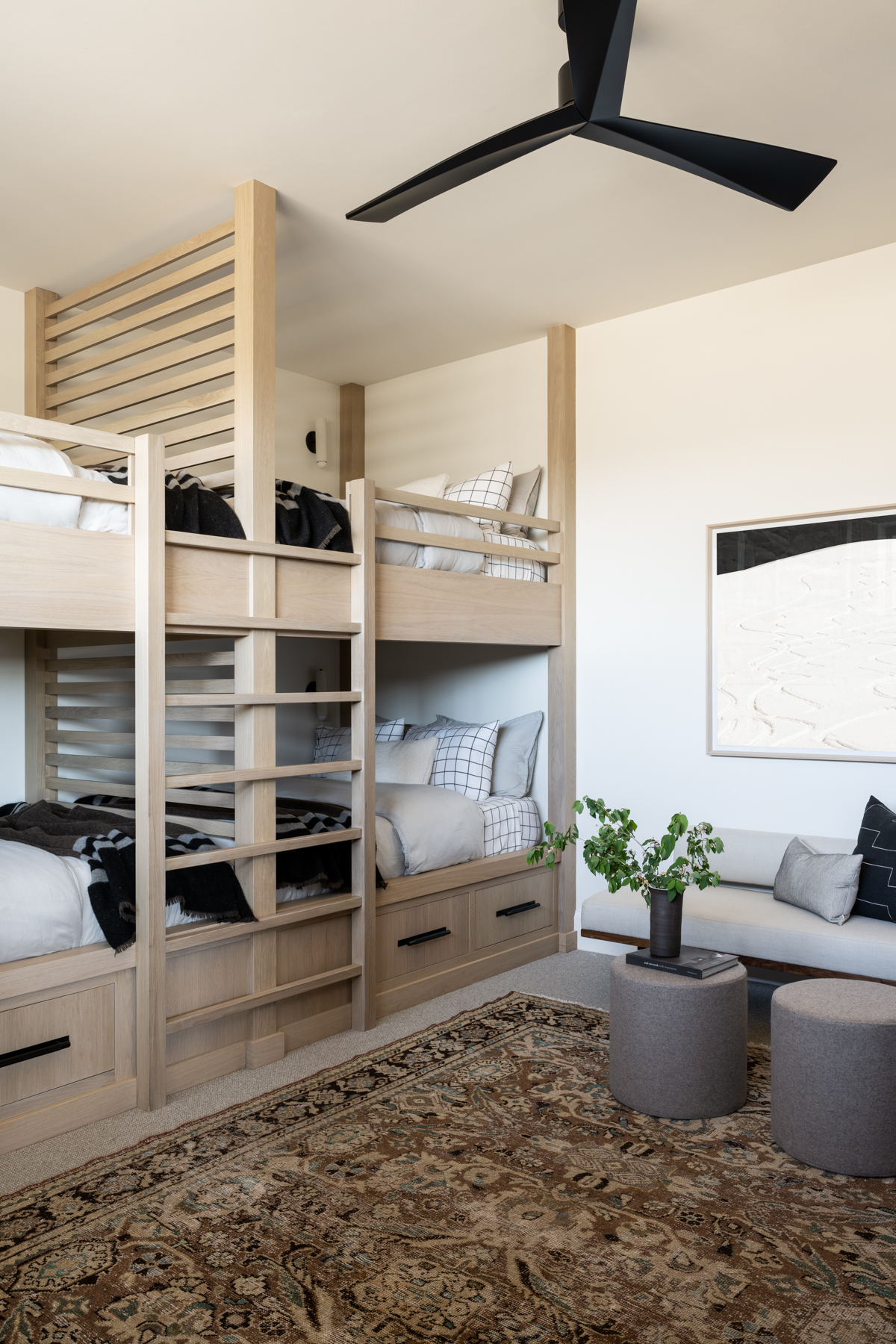
From our Mountainside Retreat Project
No. 3: Always consider durable materials for high-traffic areas
While sometimes people are hesitant about using rugs in high-traffic areas like mudrooms, entryways, dining spaces, and kitchens, they can go a long way in bringing softness and dimension in more utilitarian spaces. Indoor / outdoor rug materials are perfect for high-traffic areas where spills or messes often occur. Plus, you can always opt for vintage materials for a worn-in look as durable as it is timeless.
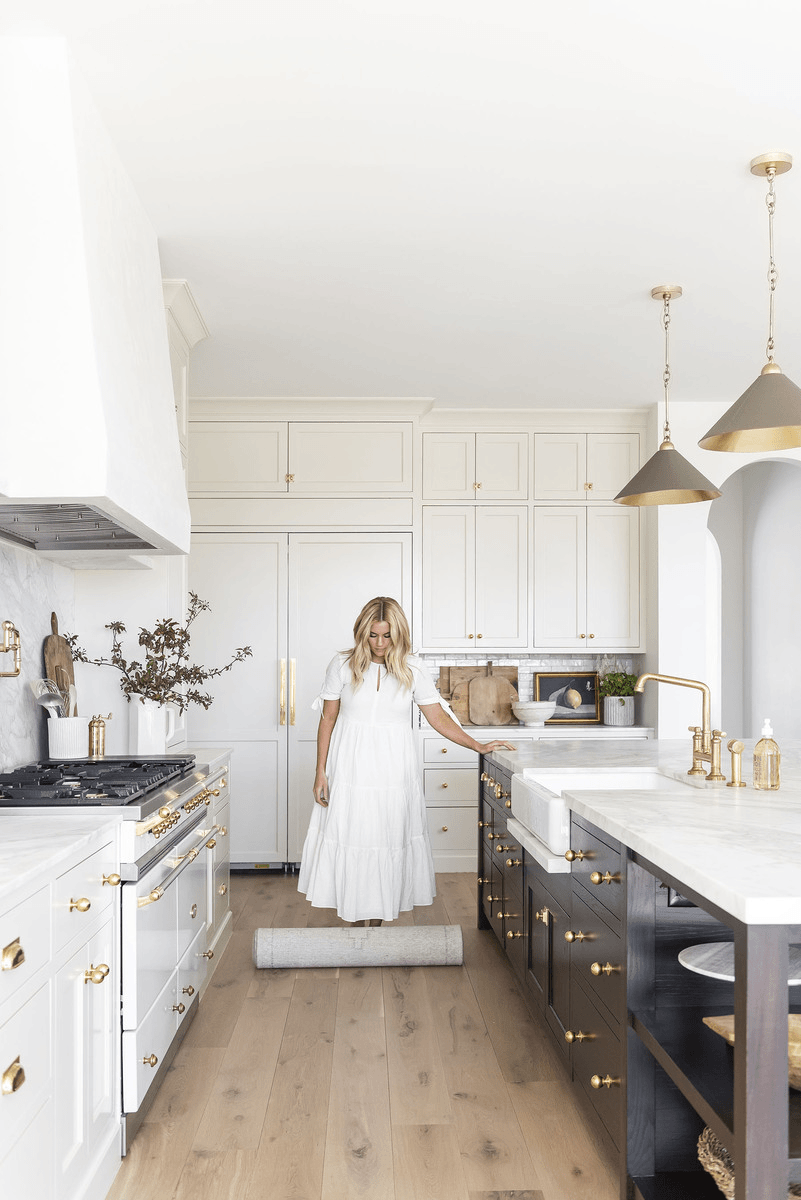
From The McGee Home
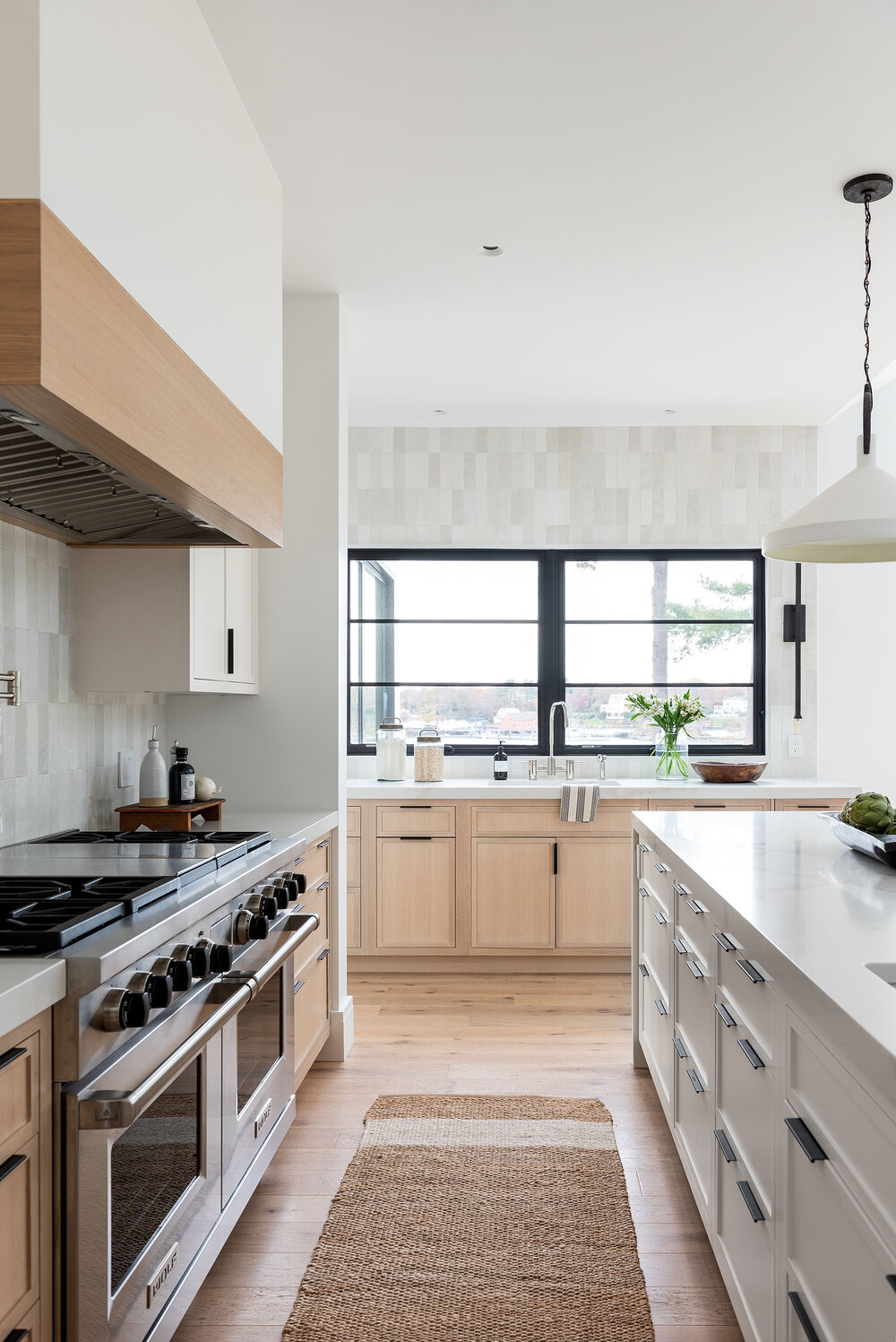
From our Rye New York Project
From our Northridge Remodel
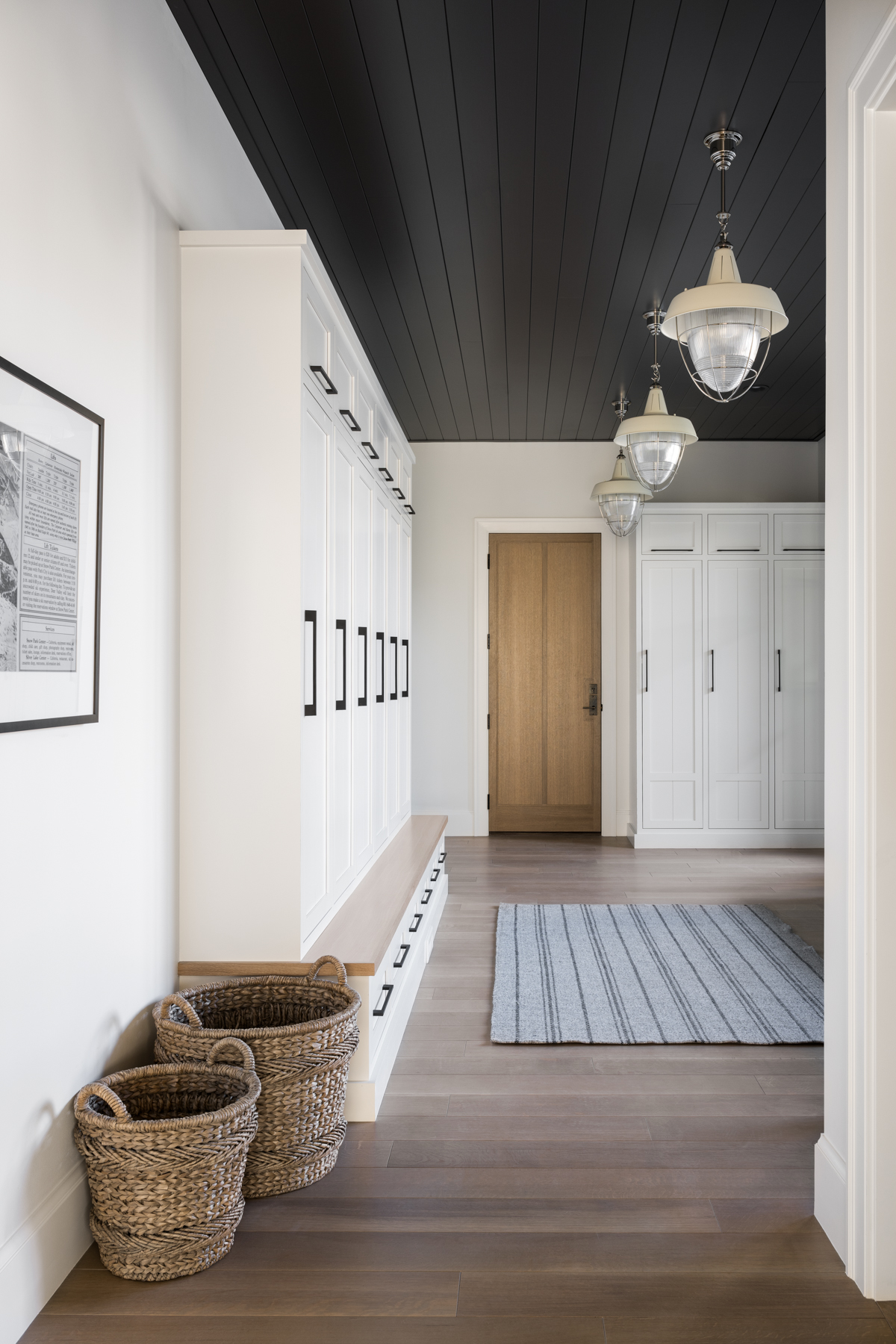
From our Mountainside Retreat Project
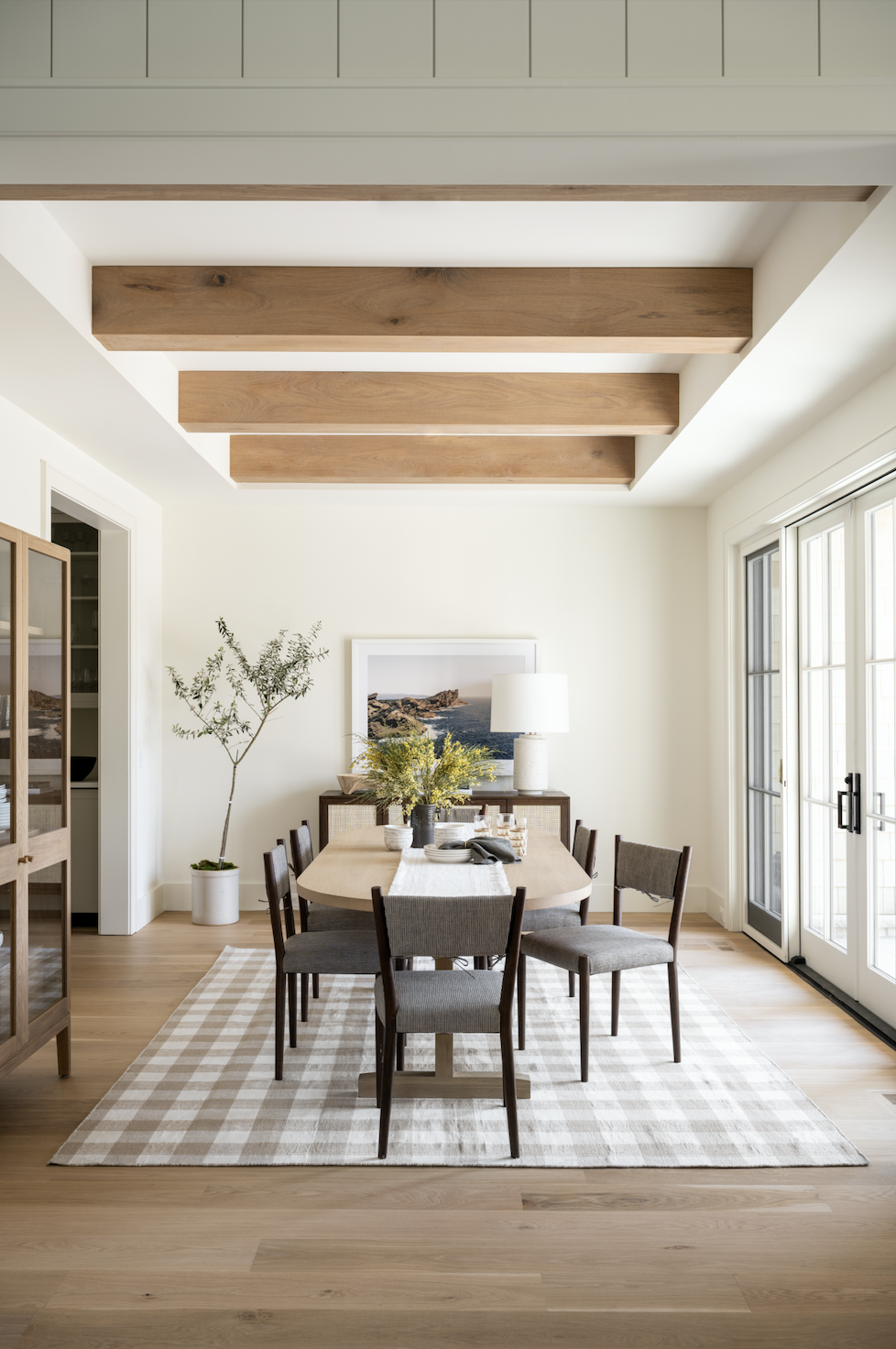
From our McGee & Co. 2021 Summer Catalogue
No. 4: Make sure your rugs work together in an open-concept space
In open-concept spaces, you’ll likely have more than one rug in the same visual plane, and it can get visually complicated if they are not cohesive. When we mix multiple rugs in one space, we like to pay attention to having at least one cohesive element to tie it together. Check out our in-depth post here for more on mixing multiple rugs in one space and a few of our favorite examples.

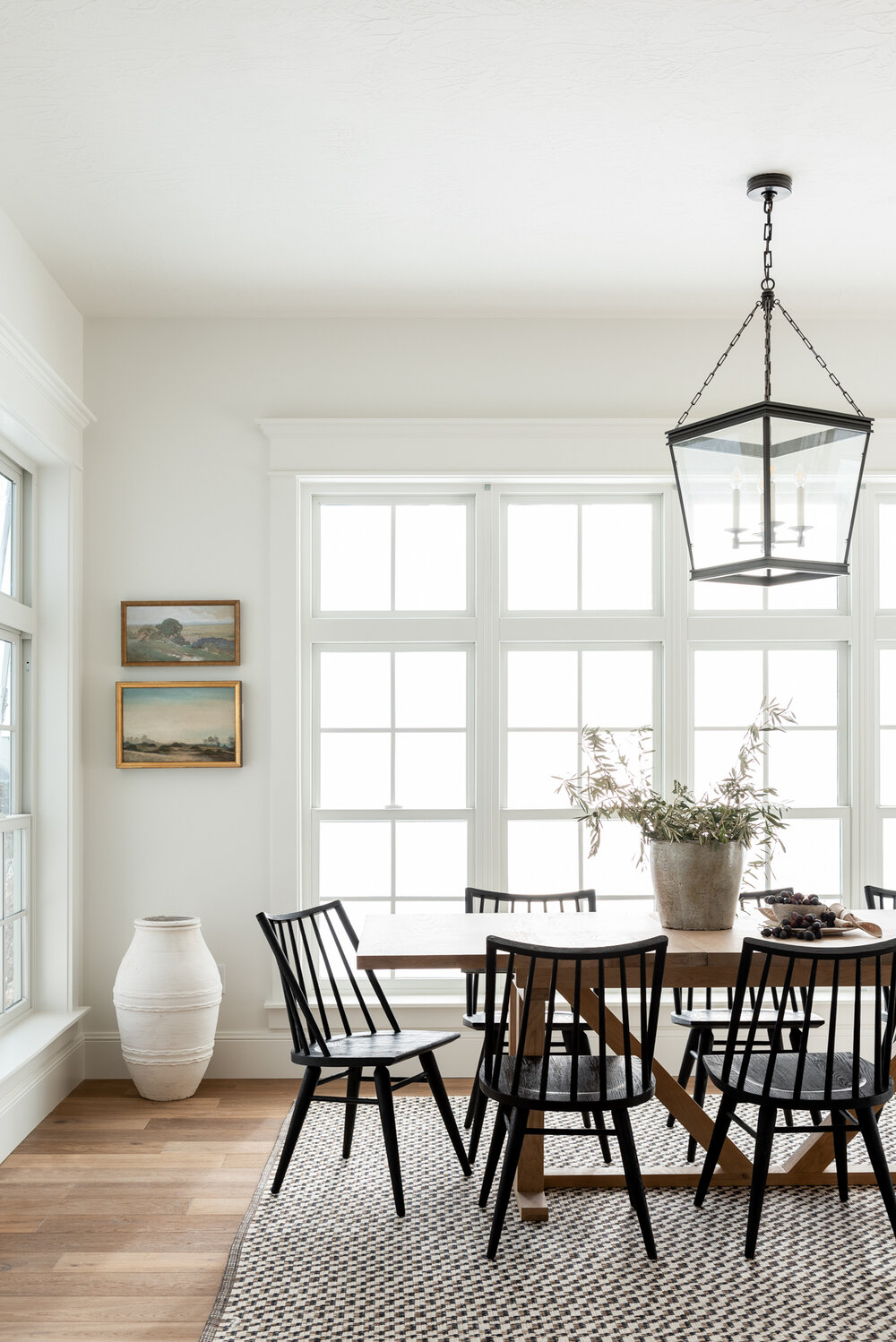
From our Pine Brook Home
From The Sunset House
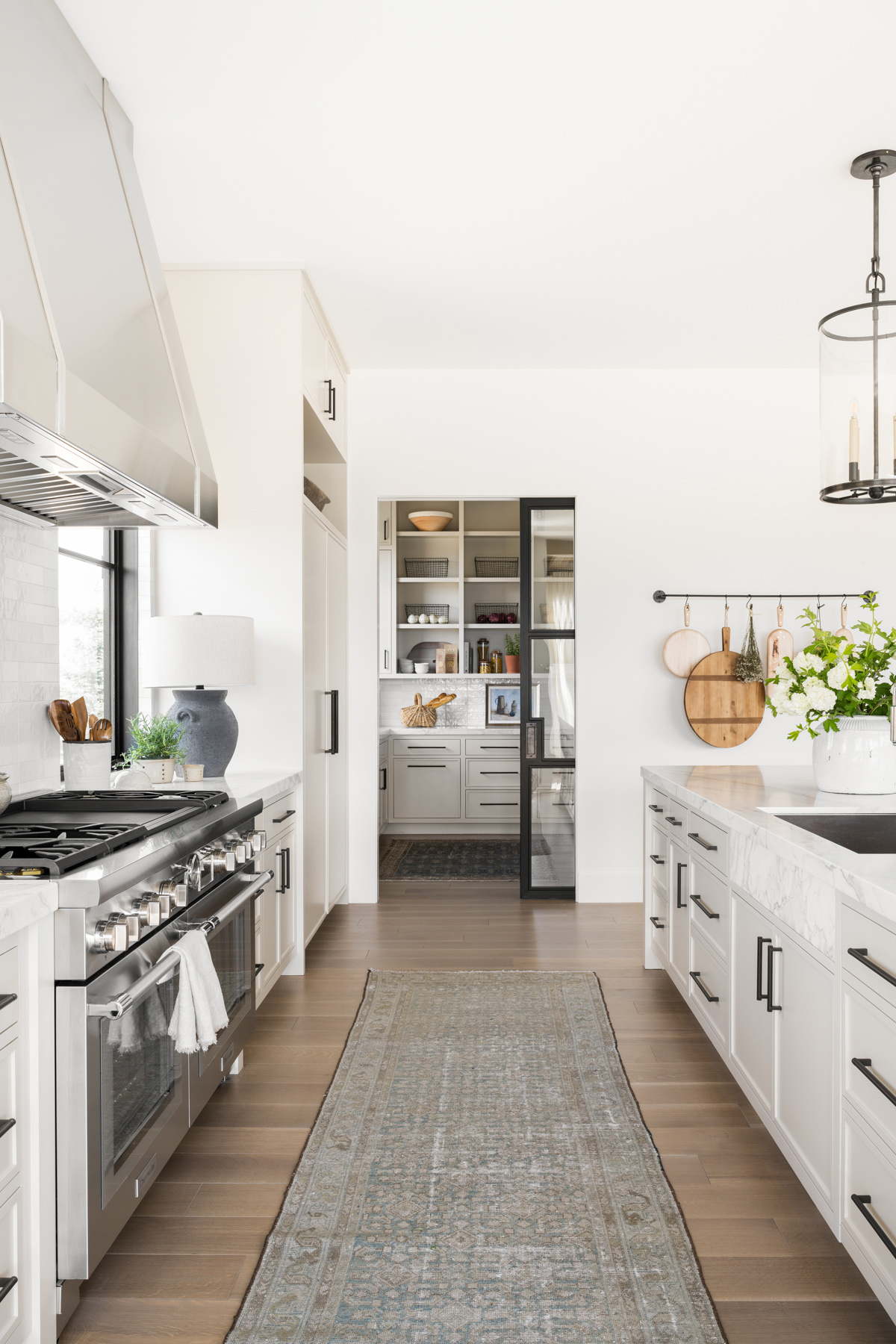

From our Mountainside Retreat Project
5 Rug Tips We Swear By
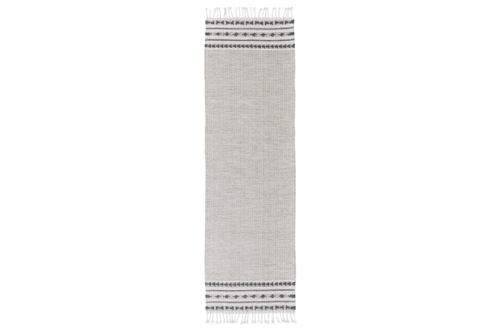
Newton Rug
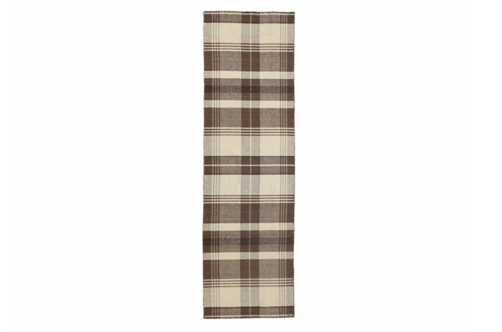
Orton Rug
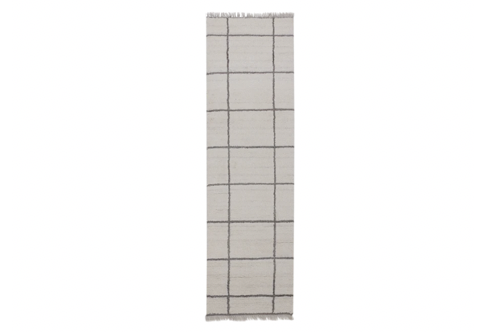
Holburn Rug
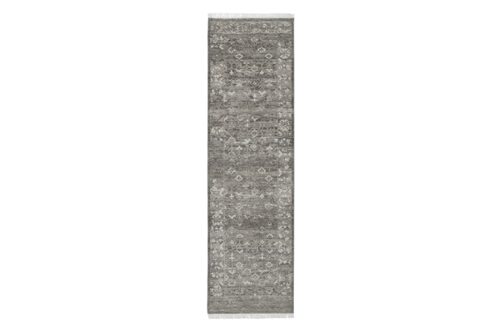
Hamden Hand-Knotted Rug
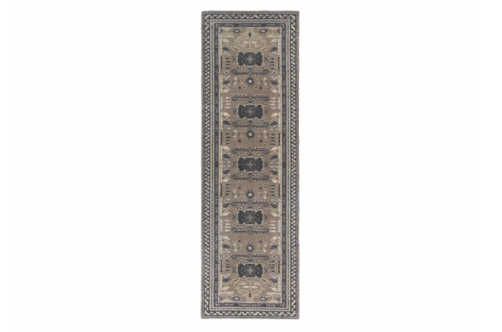
Kyran Rug
No. 5: Pay attention to the scale of your rug pattern
The right pattern can change a space like few other design elements can, and a rug is a great, low-risk way to add pattern to any room. When choosing a rug with a pattern, it’s important to pay attention to the pattern’s scale so it doesn’t overwhelm the space. In small areas, we like to use smaller-scale patterns so that it doesn’t overpower the room. In larger spaces, it’s easier to get away with doing something with a large pattern scale, like stripes or large checks.
For more on how to mix multiple patterns in one space, check out our post here!
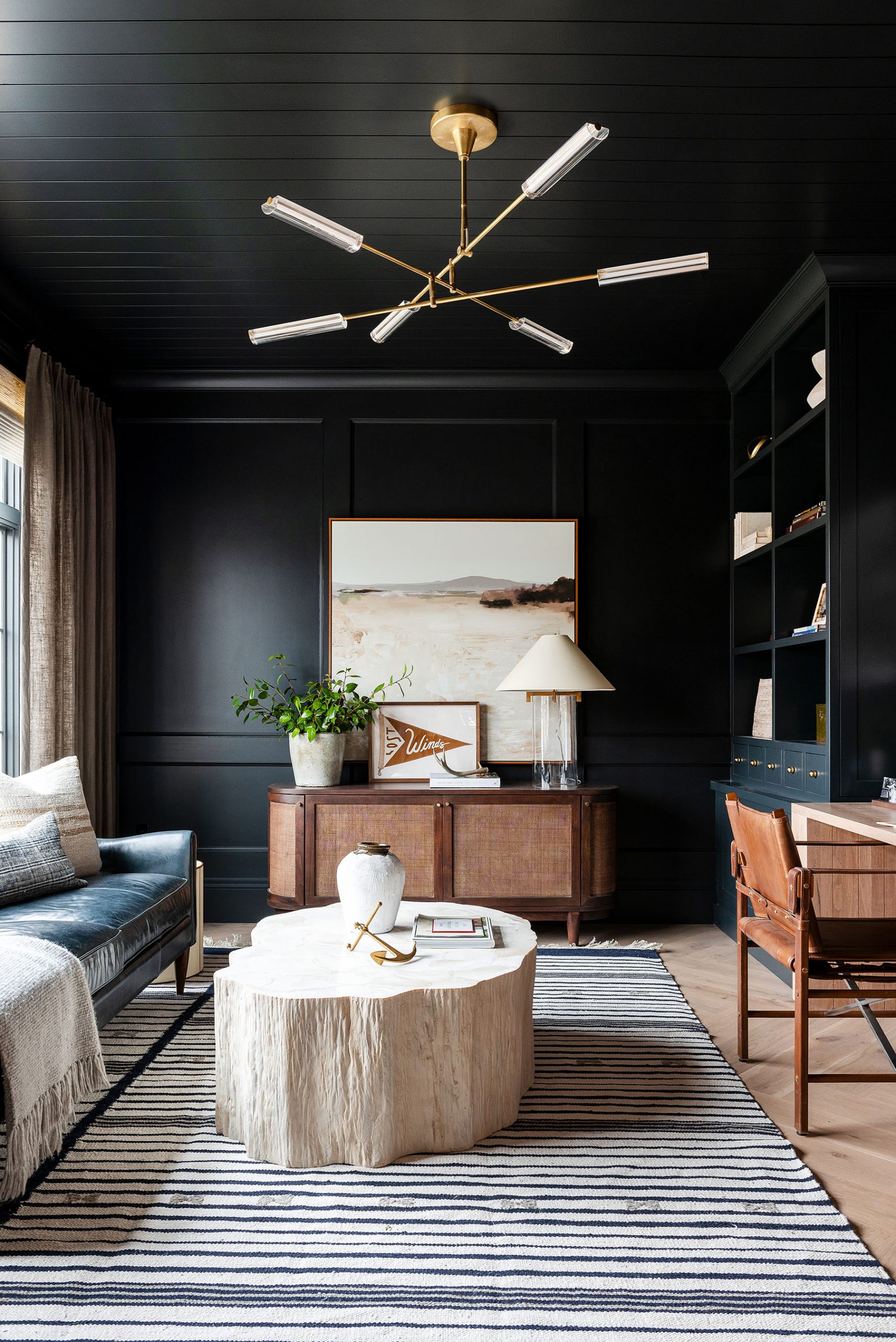
From The McGee Home
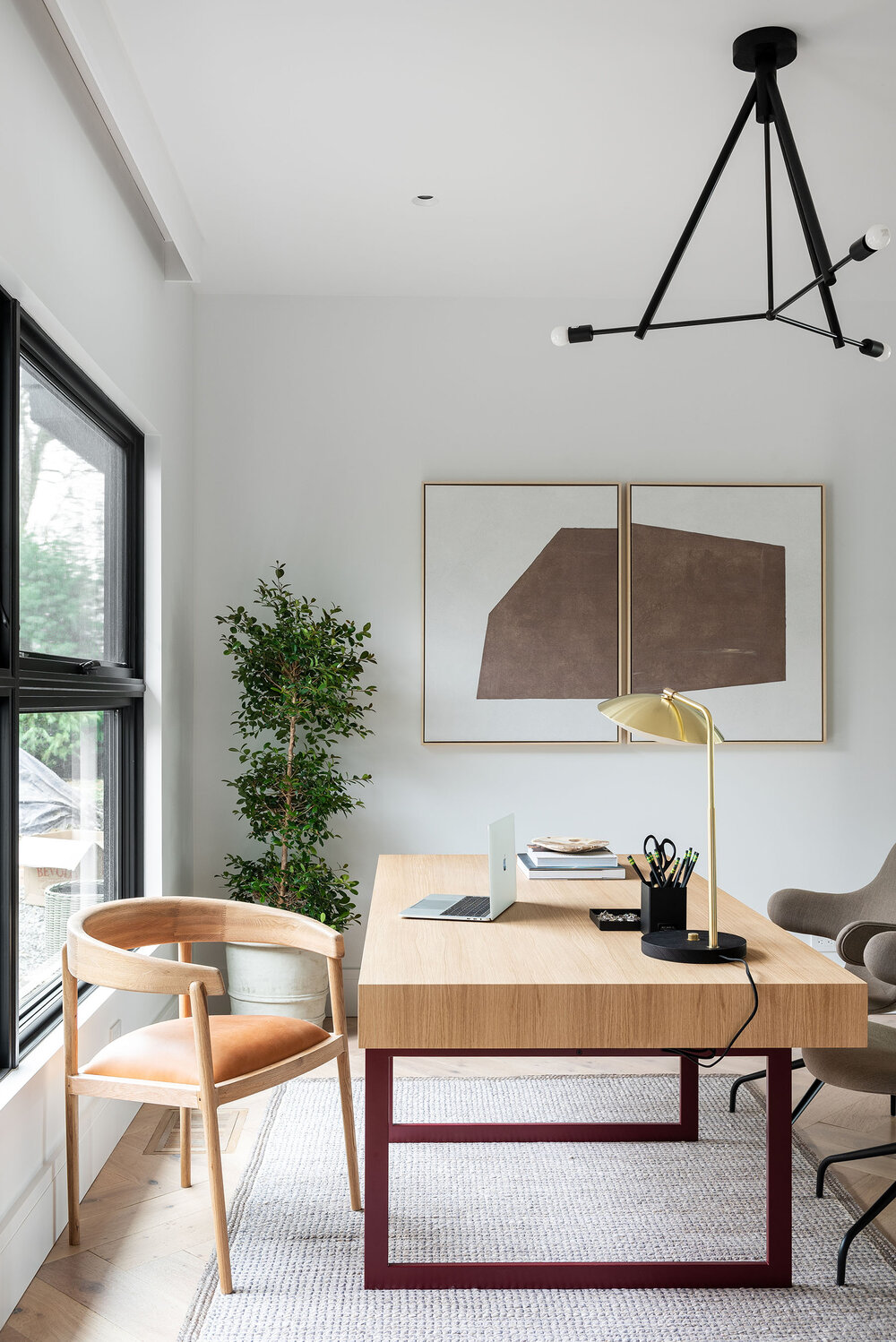
From our Rye New York Project
From our McGee & Co. 2021 Summer Catalogue
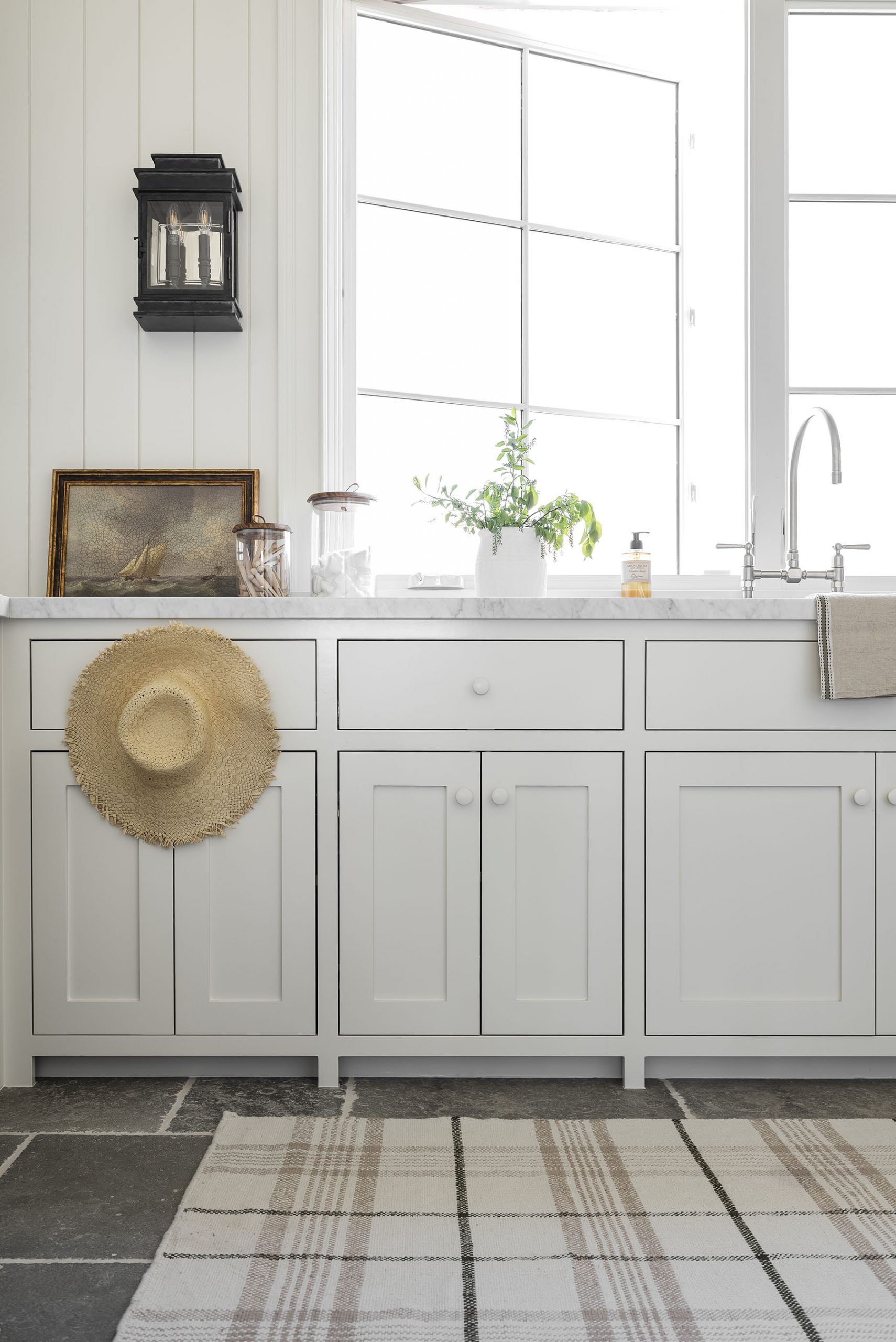
From our McGee & Co. 2020 Summer Catalogue
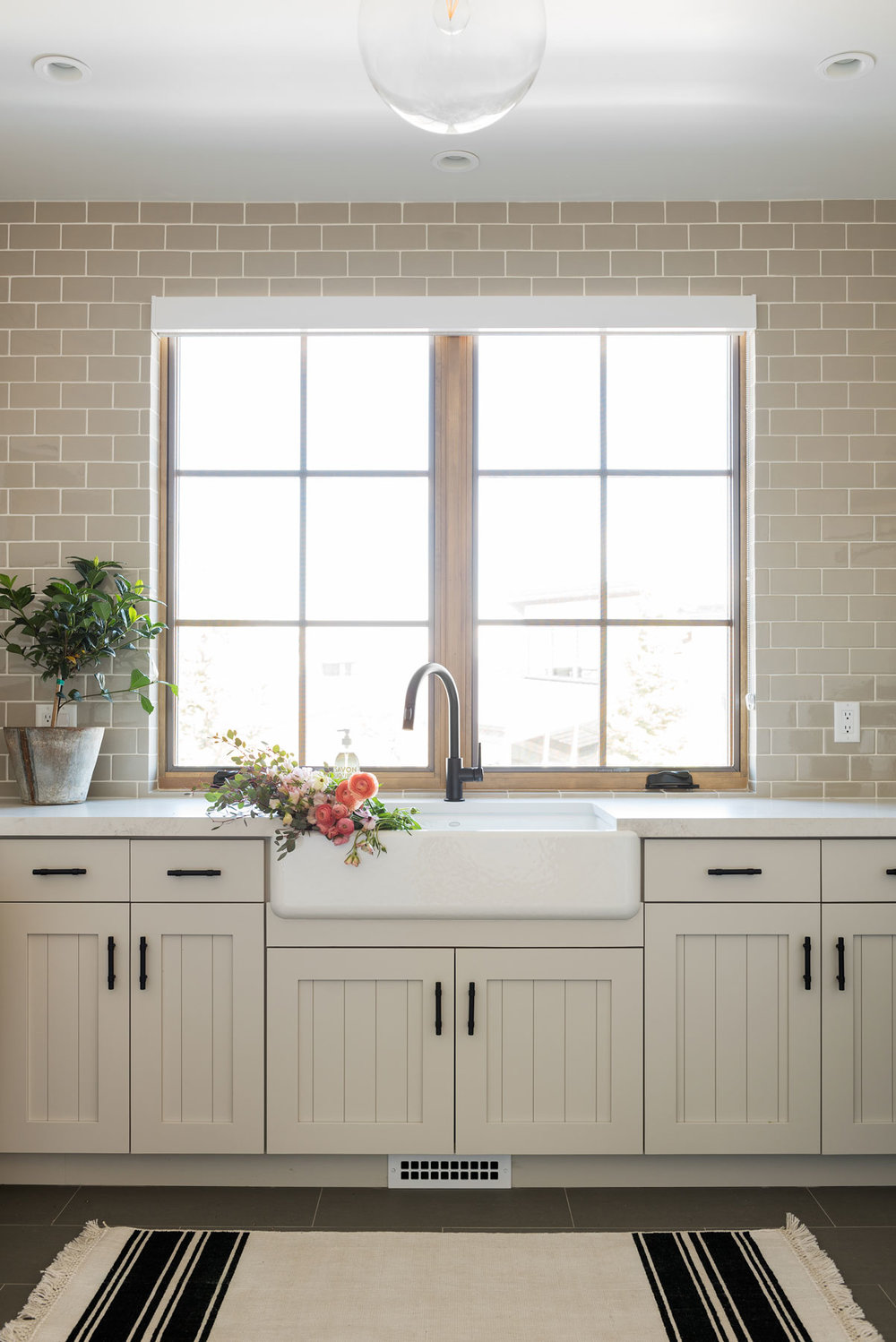
From our SM Ranch House
5 Rug Tips We Swear By
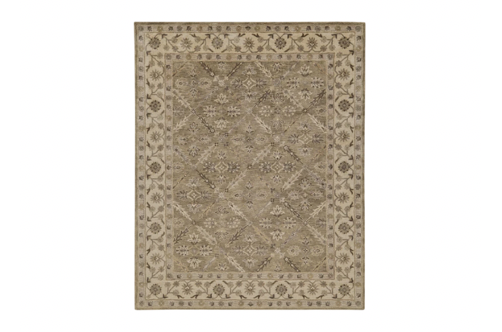
Izsak Rug

Callahan Rug
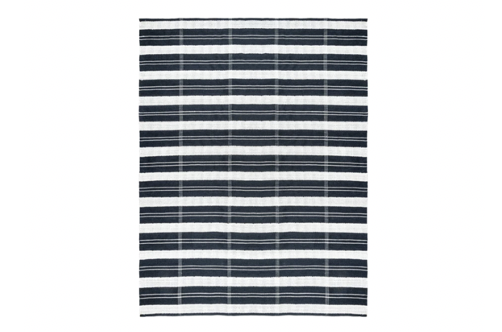
Penfield Indoor/Outdoor Rug
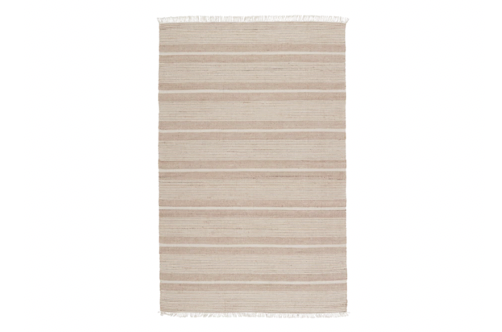
Masella Beige Rug
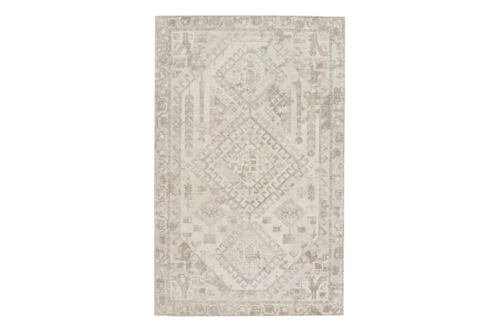
Lenola Cream Rug
